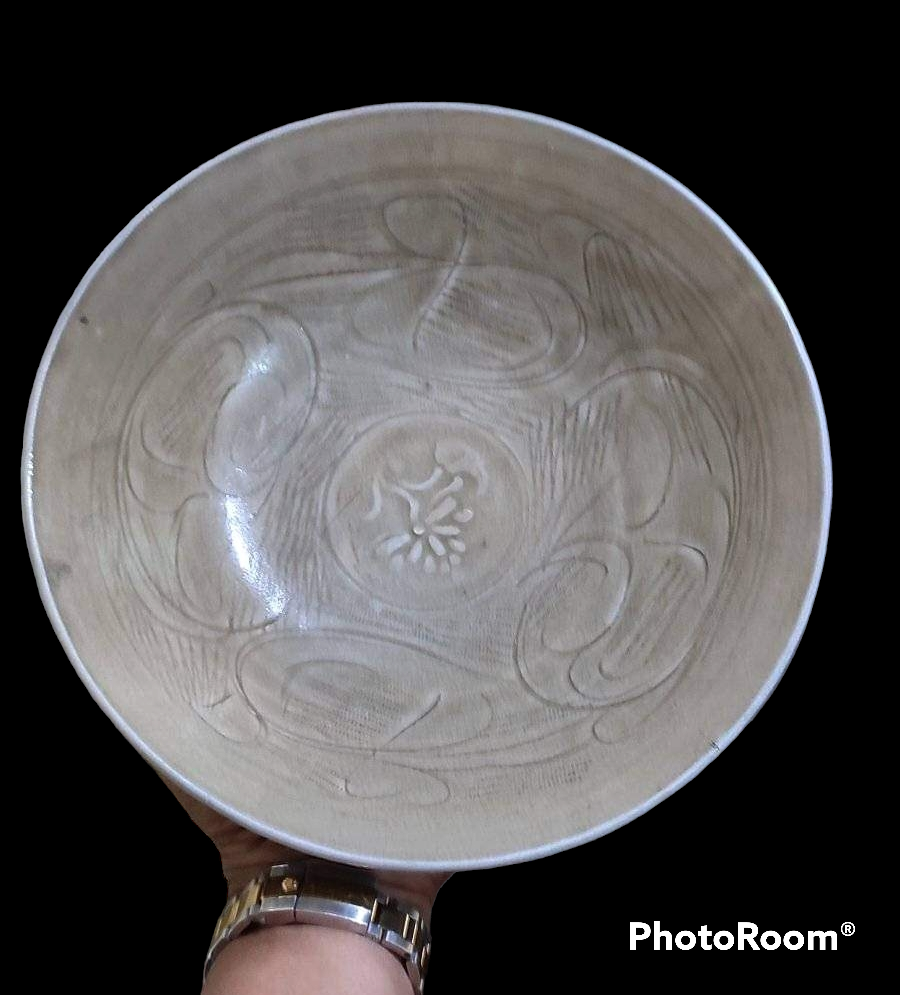
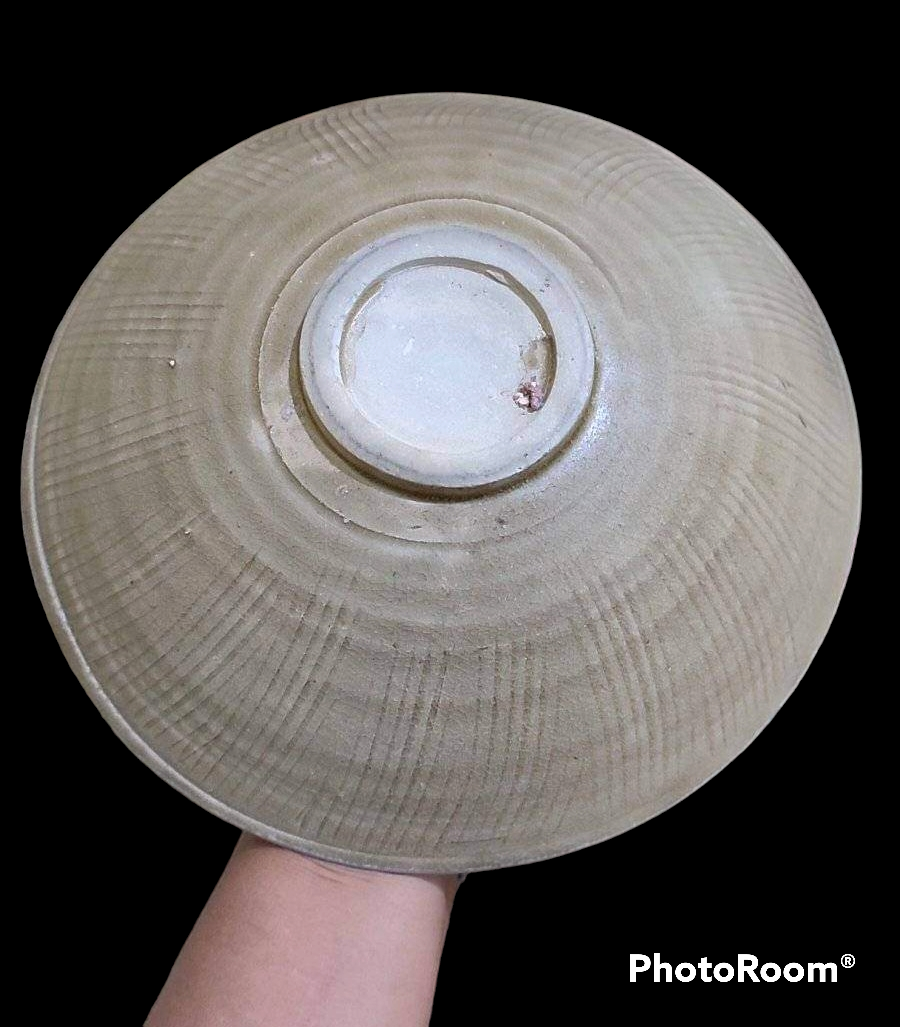
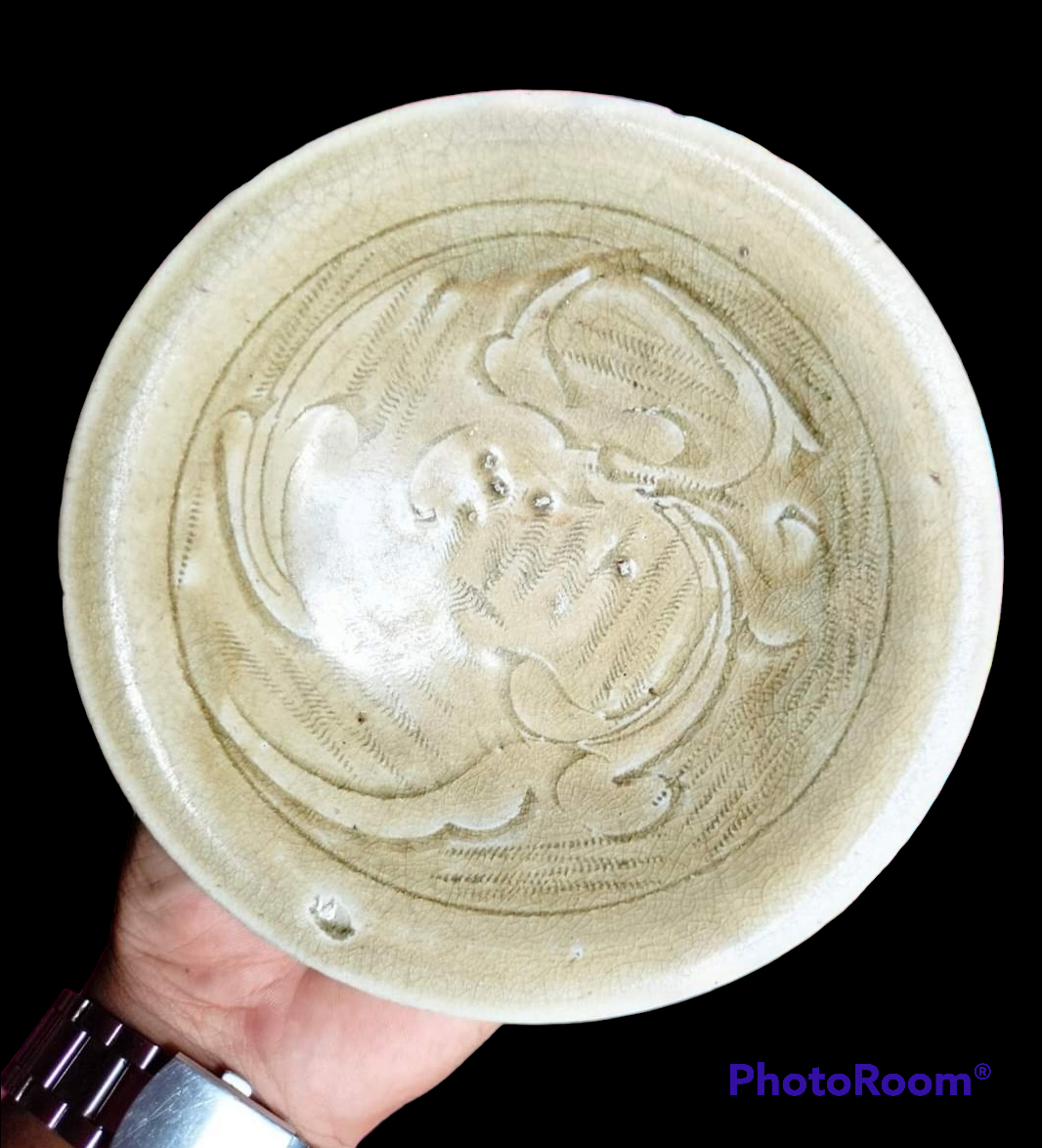


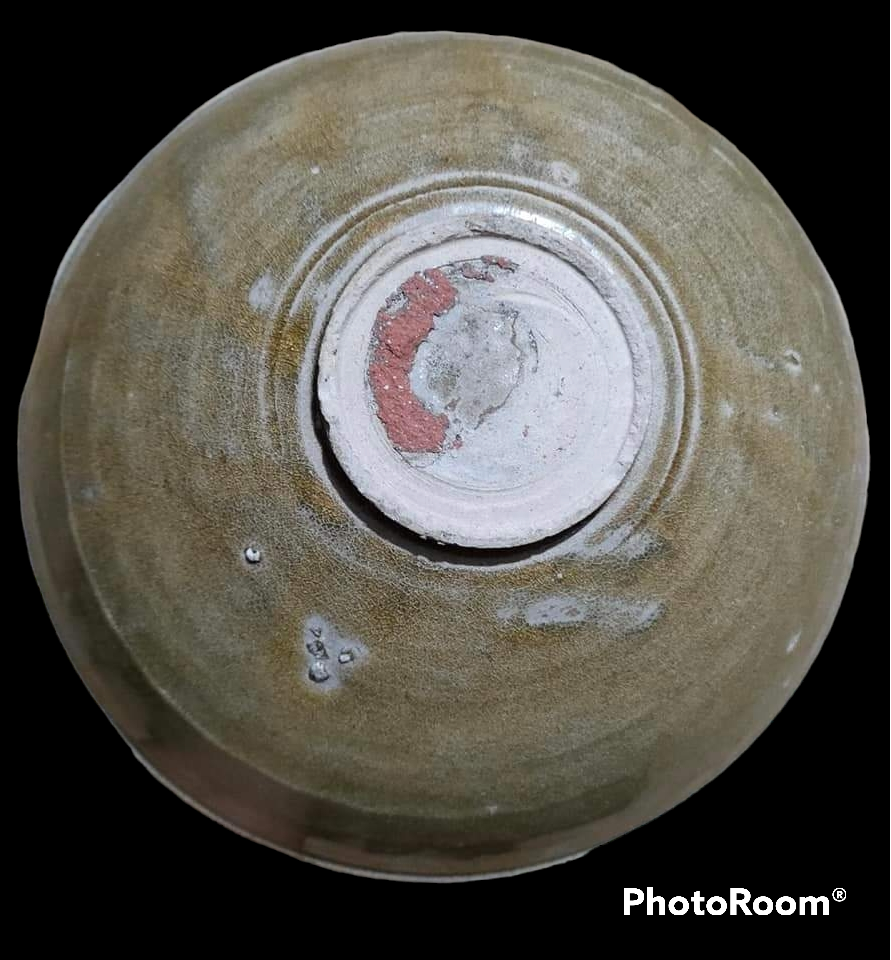

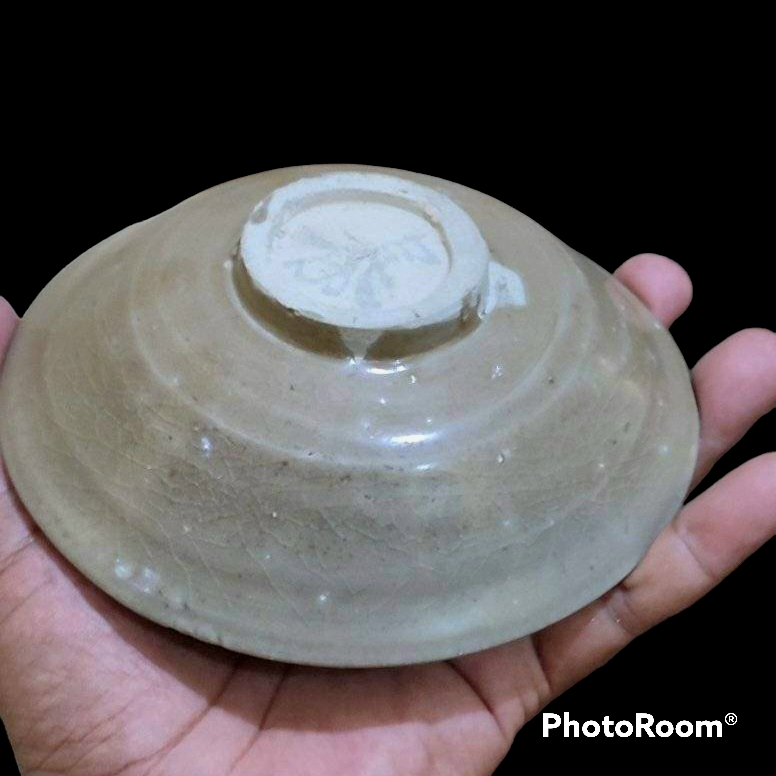

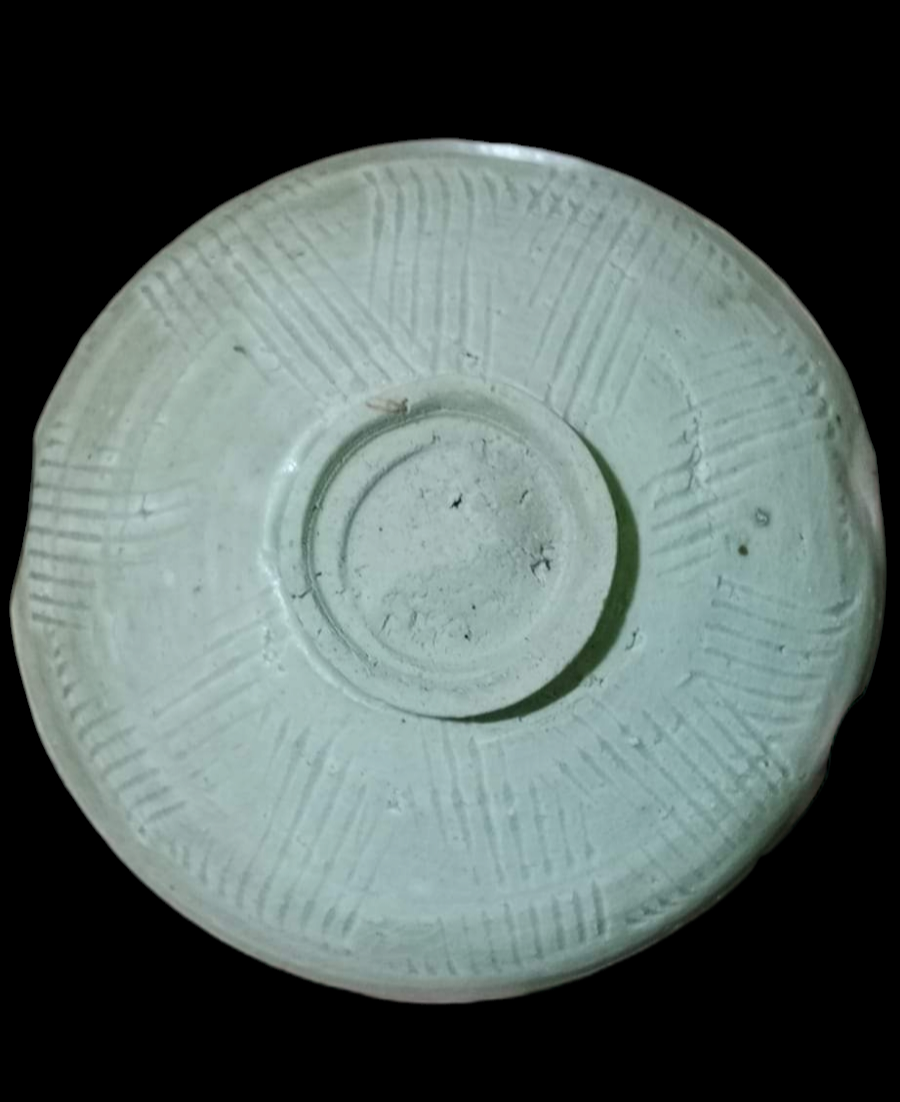
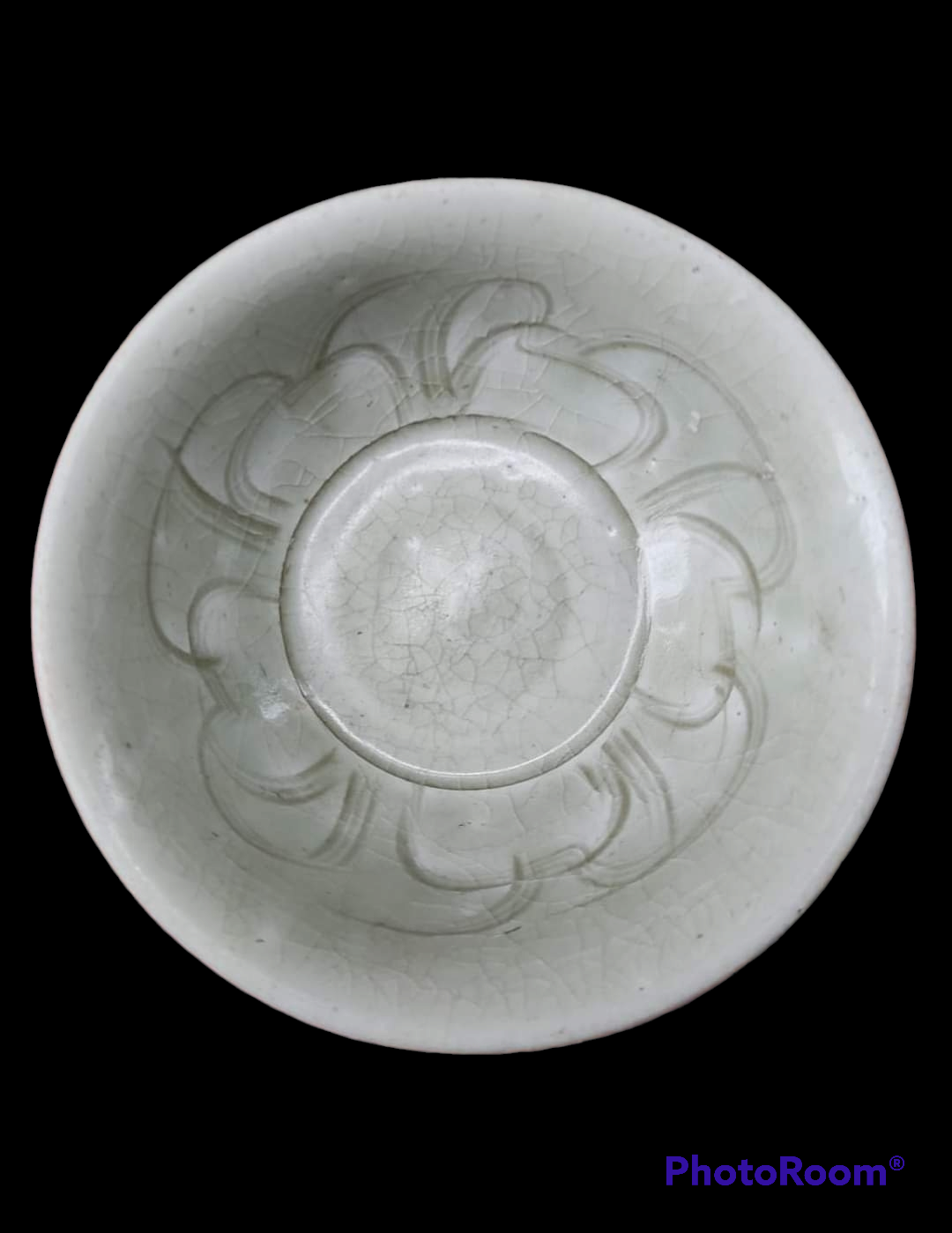
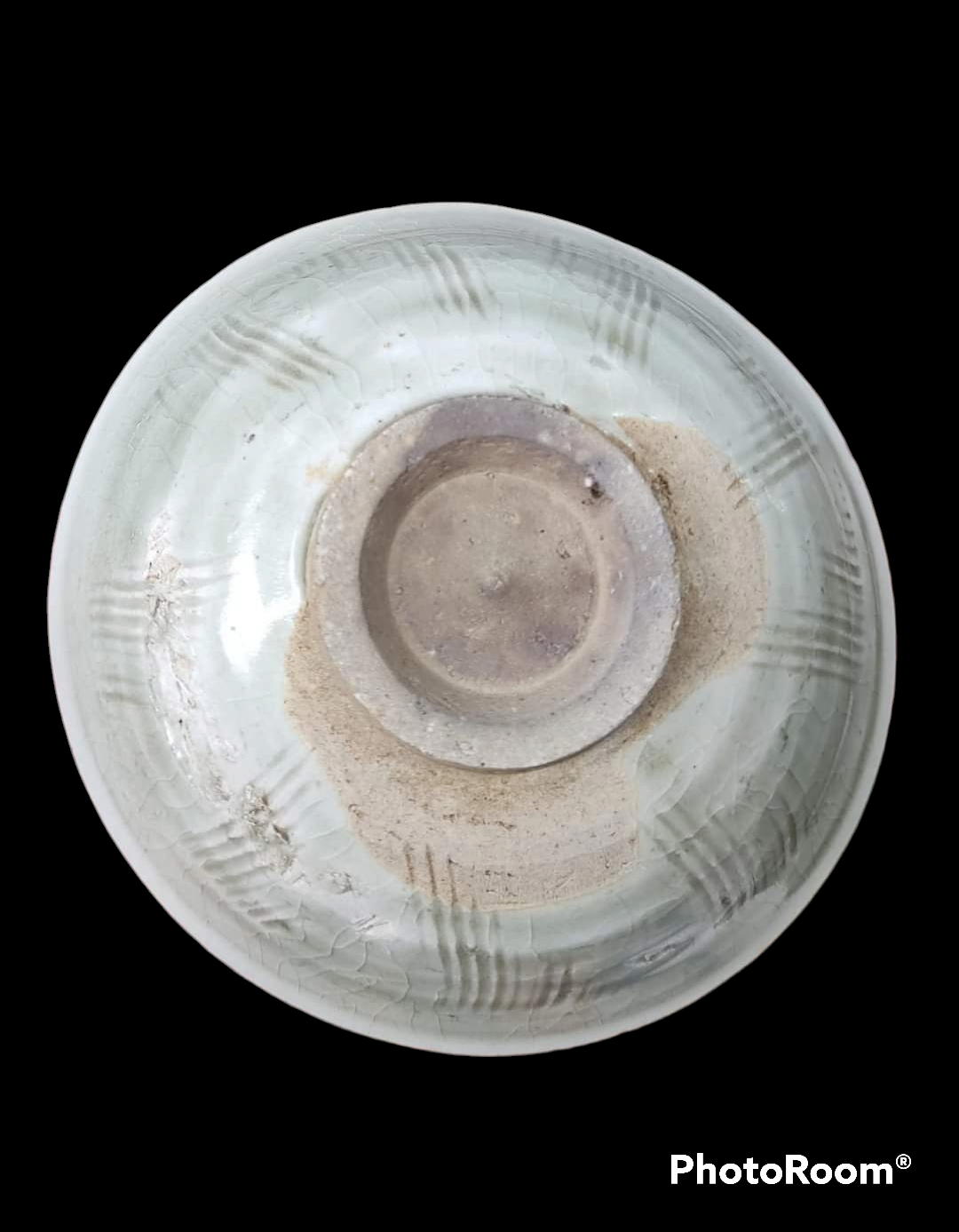
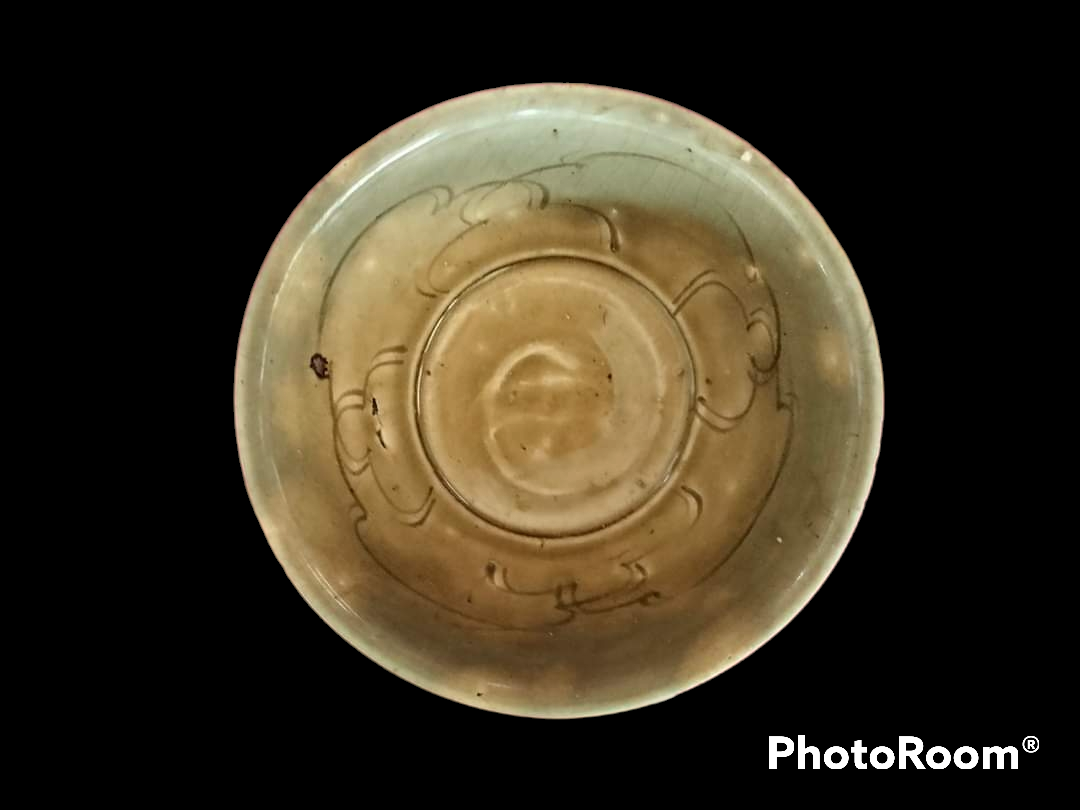
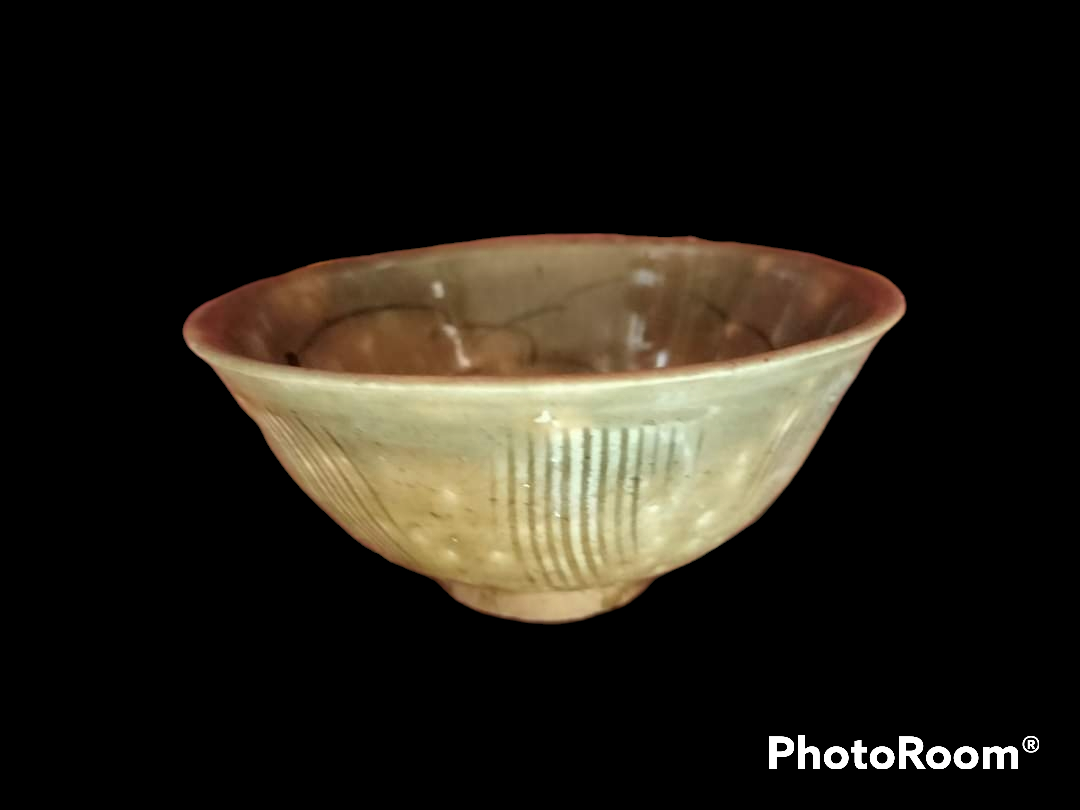
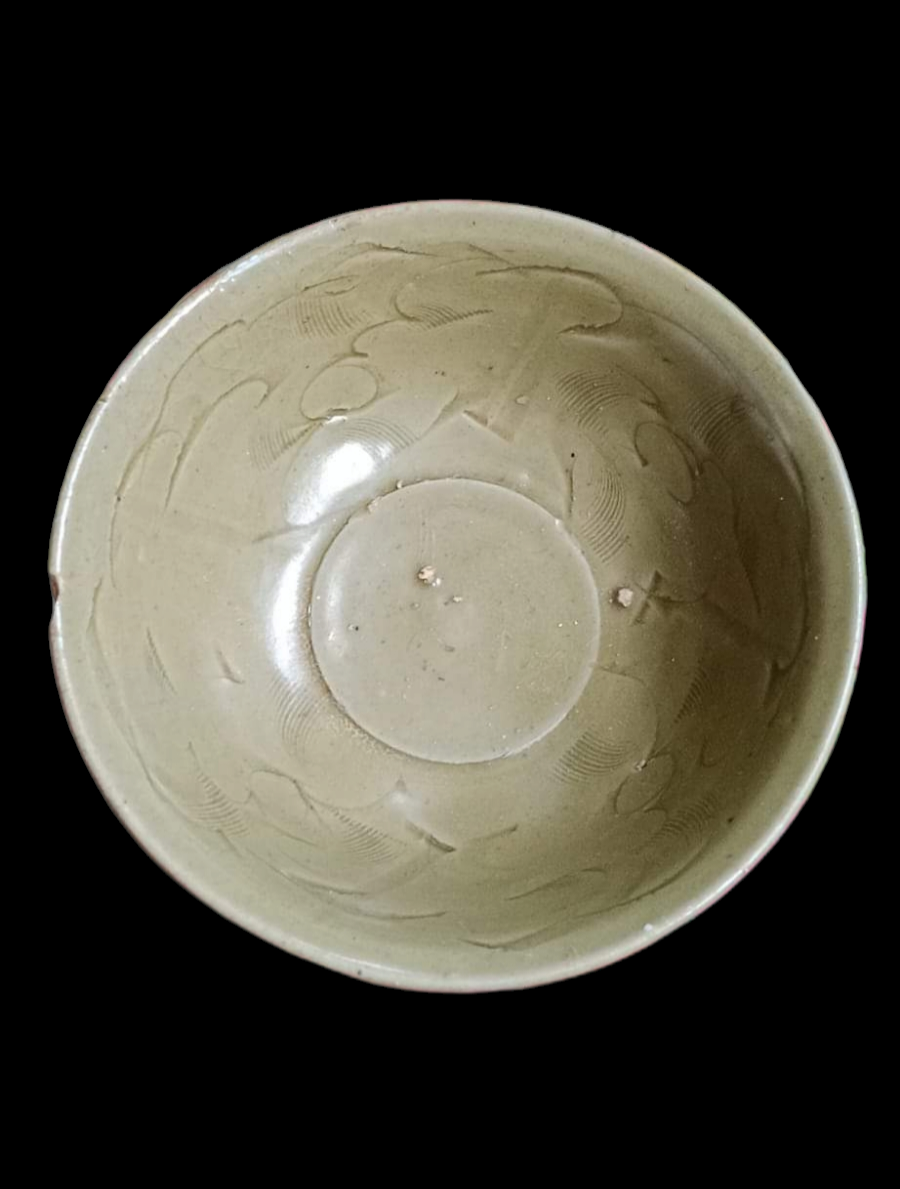

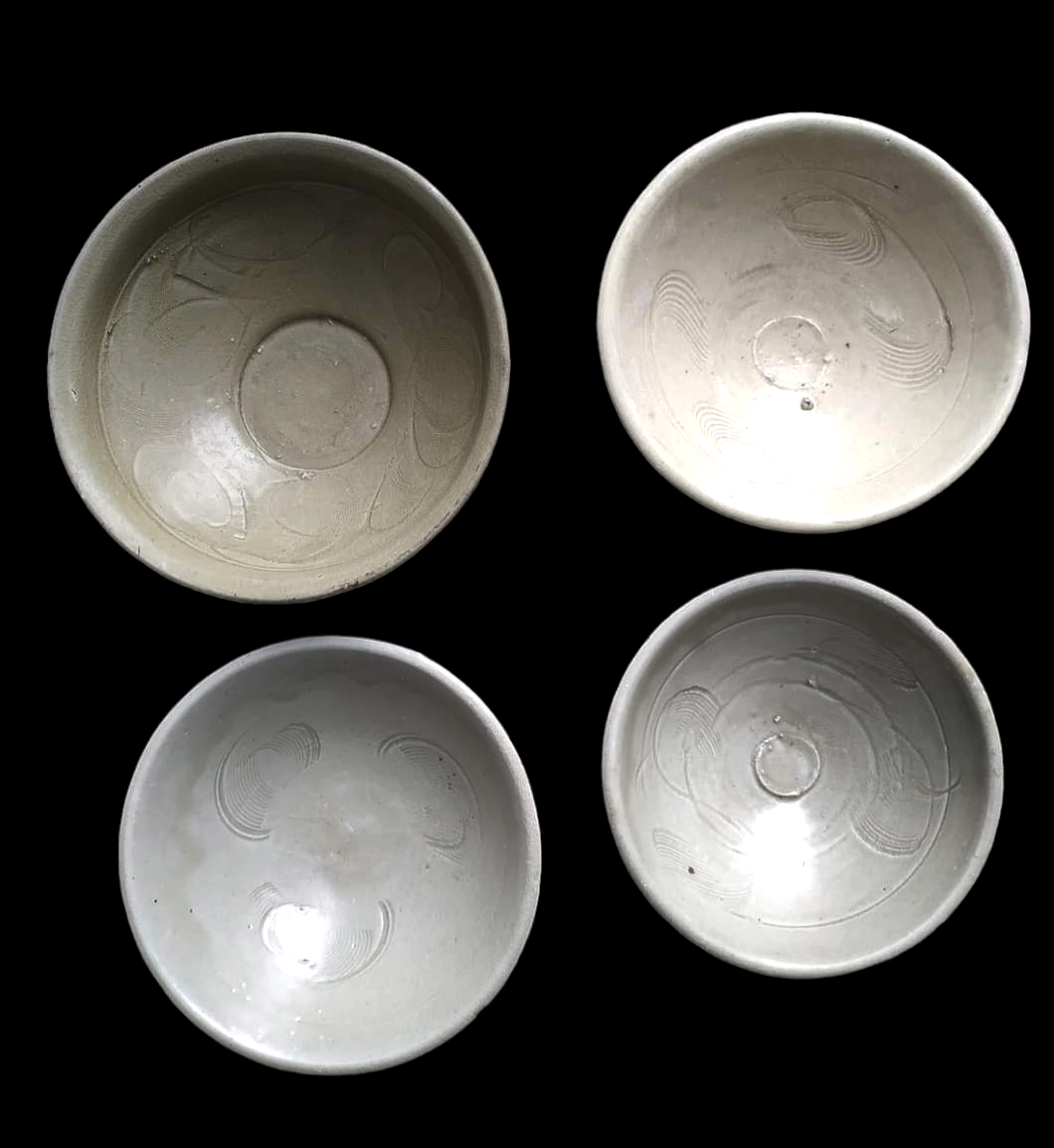
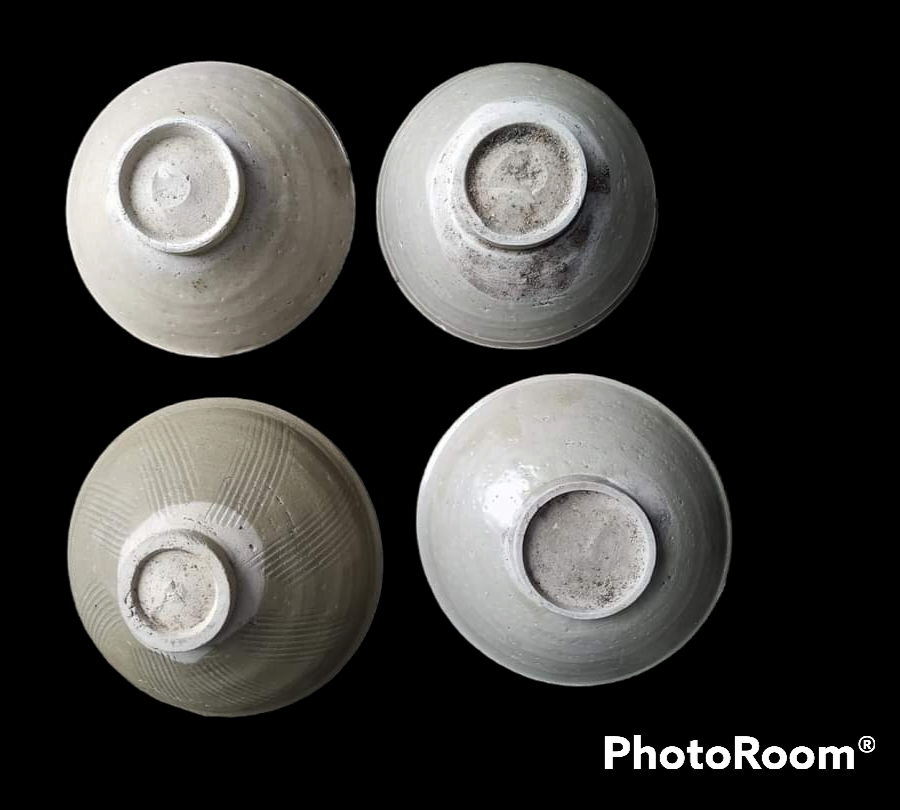
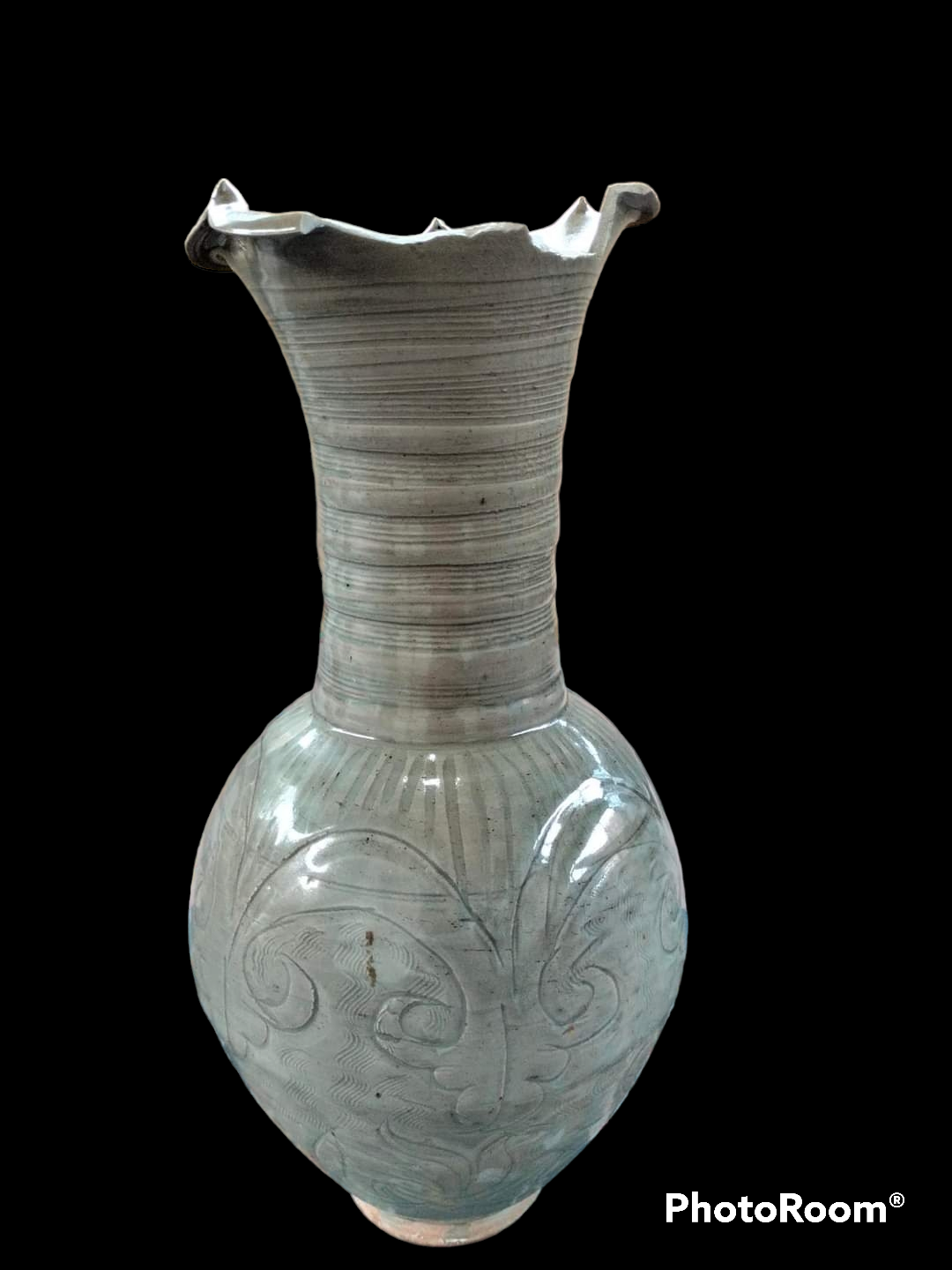
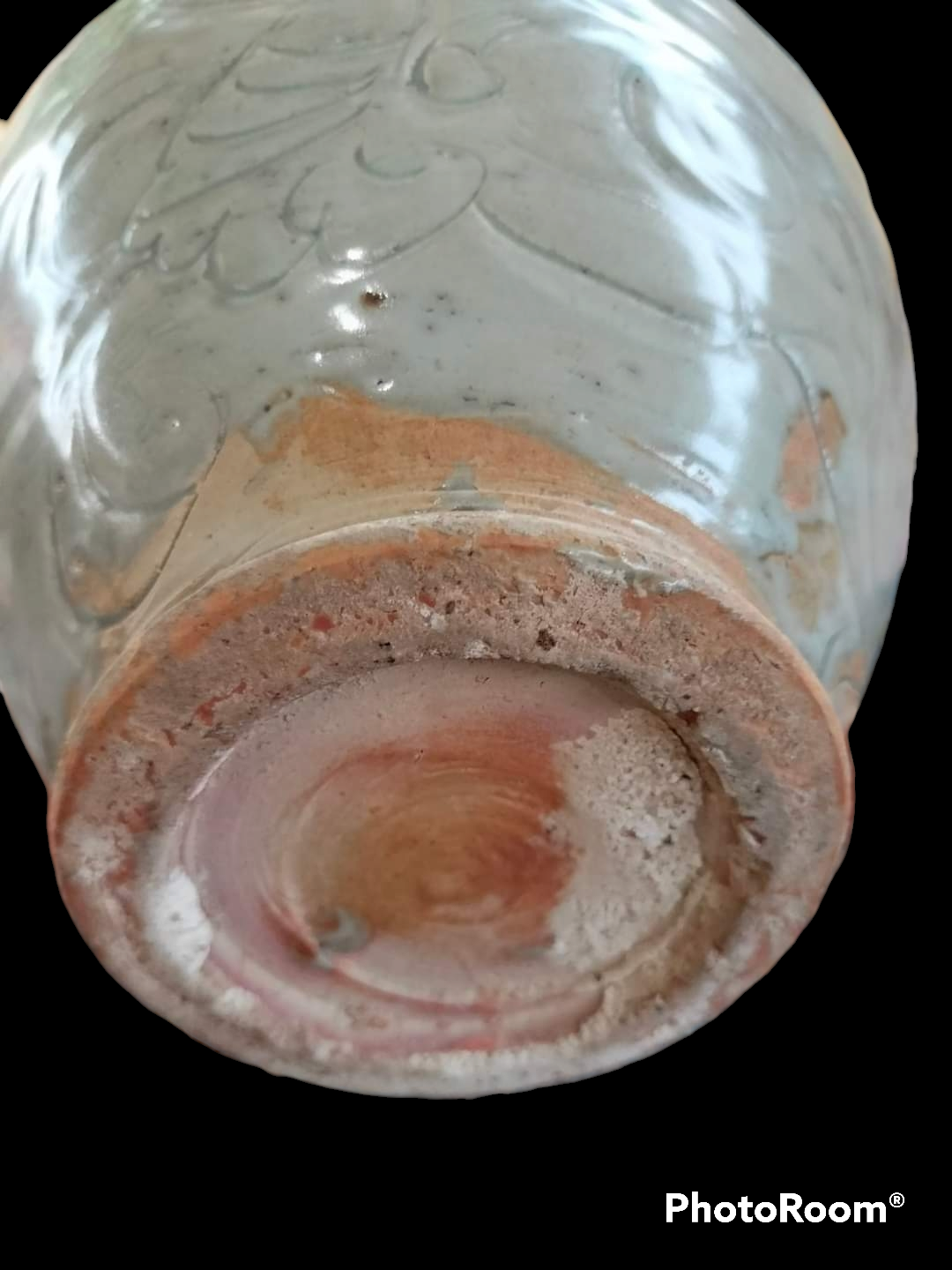
Song/Yuan Fujian Trade Ceramics Found in Jambi Batang Kumpeh
In 1087A.D during the Late Northern Song, the post of Shi Bosi (市舶使), ie the Superintendent of Maritime Trade was established in Quanzhou. This set in motion the establishment of kilns in Fujian, especially the coastal region in Southern Fujian to specifically cater to the export trade ceramics market. Although Guangdong maintained its position as the key supplier of trade ceramics during the late Northern Song period, shipwreck findings showed that Fujian also emerged gradually to join in the competition. This can substantiated by their appearance in the cargo of shipwrecks such as Pulau Buaya and Lingga. In fact, the Late Northern Song Sabah Flying Fish wreck carried mainly Fujian trade ceramics. During this late Northern Song phase, Longquan celadon and Jingdezhen Qingbai also contributed to the export ceramics cargo mix but their share of the overseas market was also relatively small.
However, the dynamic of trade ceramics took a drastic turn during the Southern song period. Quanzhou was designated as the premier port for trade with Southeast Asia and the West. Undoubtedly, it heralded in a golden period for the coastal kilns in Southern Fujian, known as Minnan (闽南) in Chinese. Fujian trade ceramics , especially green glaze and qingbai/white wares were huge in number and dwarfed those from famous kilns such as Longquan and Jingdezhen which were of superior quality but more expensive . Based on shipwreck findings from Huaguang Jiao, Jepara, Java sea, Breaker Shoal and Nanhai 1 wrecks, it is interesting to note that they were all from the 2nd half of 12th century. Without exception, Fujian ceramics took the lion share of the ceramics cargo mix in the wrecks, an important indication that it was the peak for Fujian Trade Ceramics. Into the 13th century, Fujian's share of the export ceramics market was gradually overtaken by Longquan and Jingdezhen which subsequently dominated during the 14th century. But Fujian continued to play a secondary role till the 19th century. For instance, in the 14th cent. Karang Cina wreck near Belitung, green glaze ware from Putian kiln were found in large number.
This particular trade pattern is very much mirrored in the Fujian ceramics recovered from Batang Kumpeh. Fujian Longquan inspired green glaze and Jingdezhen inspired qingbai wares from Southern Fujian were found in large quantity. Brown and brownish green glaze wares from Quanzhou Cizao kiln replaced Guangdong as the main supplier of this genre of ceramics.
Song Longquan Inspired Green Wares
During the late Northern Song period, Fujian produced a typical type of green glazed bowls with carved and combed/dotted floral decorations. The outer wall is decorated with carved vertical striations. As time progressed, there were some discernible stylistic changes. The outer wall of the bowls are left plain or with more sparsely spaced carved lines. The interior carved decoration also became less elaborate, more sketchy and sparsely spaced. The colour tone ranges from olive green, grayish green to different shades of yellow. It is commonly termed Tongan type or Juko (shuko seiji) greenware, name after a Japanese monk tea ceremony master Juko [shuko] who favoured such ware for tea ceremony. In fact, this type of ware could be traced to Longquan kilns which started producing such wares around late Northern Song period. In view of its popularity, Fujian potters also copied them for the export market. Those produced in Northern Fujian (Minbei 闽北), especially Songxi (松溪) and Pucheng (蒲城) bear physical characteristics that are similar to Longquan. In comparison, the quality of those produced in Southern Fujian (Minnan) are generally of poorer quality, with more crudely formed foot and the outer lower portion of the bowls left unglazed. But among them those produced in Minnan Tongan and Nanan kiln are of better quality and some comparable in quality to those from Longquan or Minbei. The good quality ones also have fully glazed outer foot wall similar to those from Longquan or Minbei. But compared with the Minbei or Longquan version, the paste is more coarse grain. Besides those fired using disc support, there are also Minbei bowls/plates which were fired using spurs as support. Hence, the spur marks could be seen on the foot.
From shipwreck such as Huaguang Jiao, Jepara wreck and Java wreck, we are able to establish that such products continued to be produced over a prolonged period of time at least till around 3rd quarter of 12th century.
 |
 |
| Large green glaze bowl ( dia. 24 cm) with the typical carved/combed floral decoration. The foot of this piece is well form and paste rather dense. Likely a product of a Northern Fujian kiln such as Songxi. | |
 |
 |
| An example with a yellowish green glaze. The paste is rather coarse and this is typical of product from a Southern Fujian kiln. The outer wall is without the carved lines and likely dated to early Southern Song period. | |
 |
 |
| Rare Northern Fujian Songxi kiln large bowl with carved fishes and waves decoration. Similar bowls but with carved floral decoration were found in Huaguang Jiao and Java Sea wreck. Huaguang Jiao wreck can be dated to around 1162 A.D based on a Minqing bowl with a cyclical gui mao (癸卯) date. | |
 |
 |
| Early Southern Song yellowish green glaze dish with carved/combed floral decoration. It has more coarse grained paste and is likely a product of a Southern Fujian kiln. | |
 |
 |
 |
 |
 |
 |
 |
 |
 |
 |
| Some examples of the Longquan inspired abstract carved combed green glaze bowls from Souther Fujian kilns which can be dated to 2nd half of 12th cent. | |
 |
 |
| An interesting Early Southern Song big green glaze big vase with carved floral decoration from a Southern Fujian kiln | |
One of the most widely produced Fujian green glaze bowls/dishes of 2nd half of 12th cent. are those with Longquan inspired carved lotus decoration. The Jepara wreck which can be dated to around 1250- 1275 A.D carried large quantity of such products.
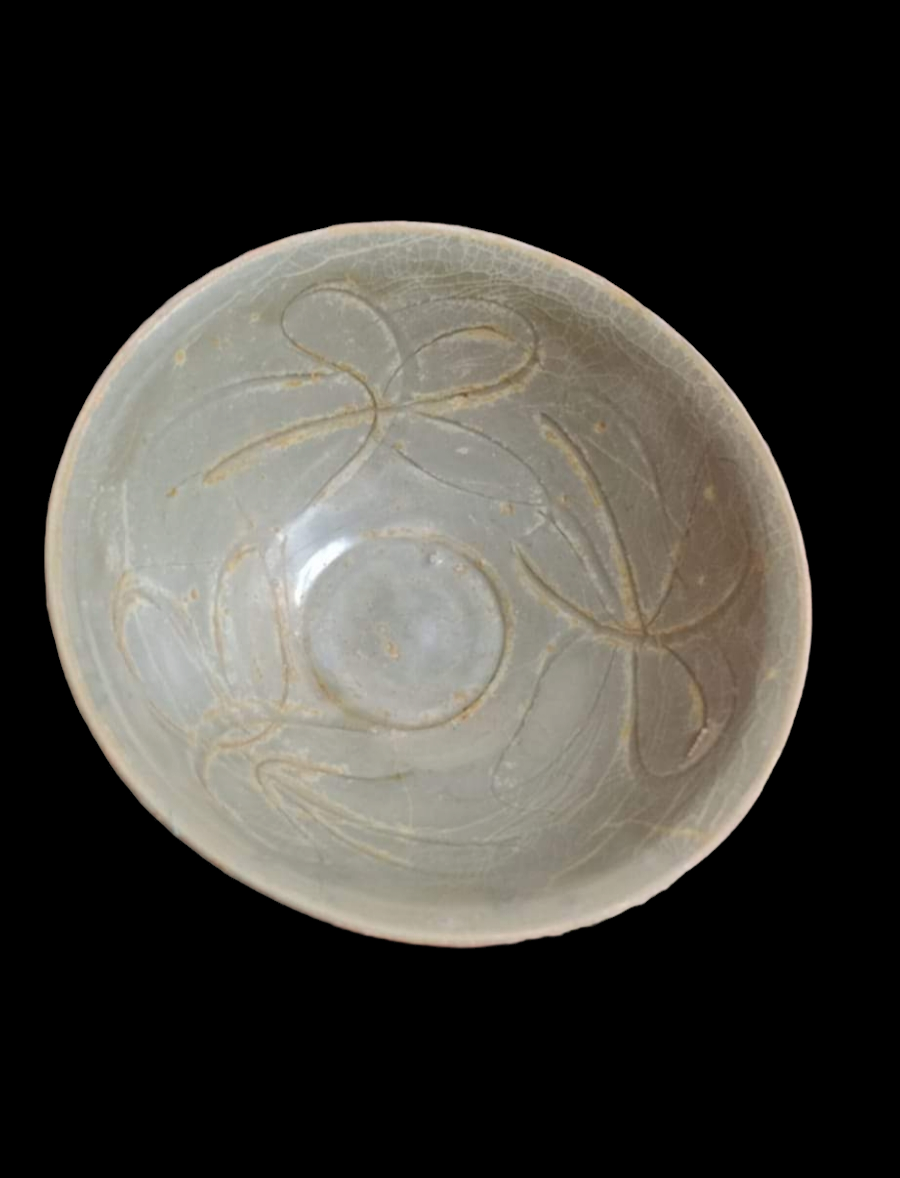 |
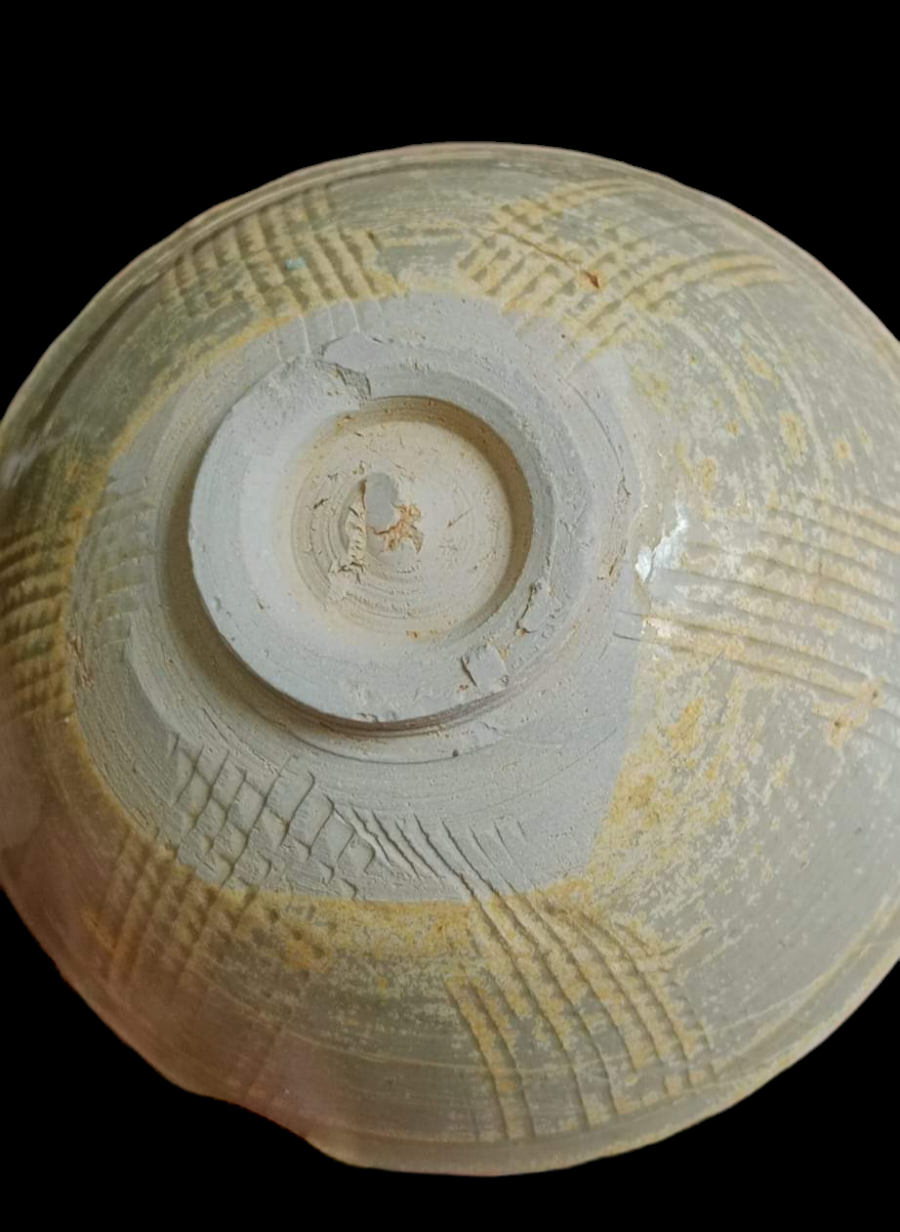 |
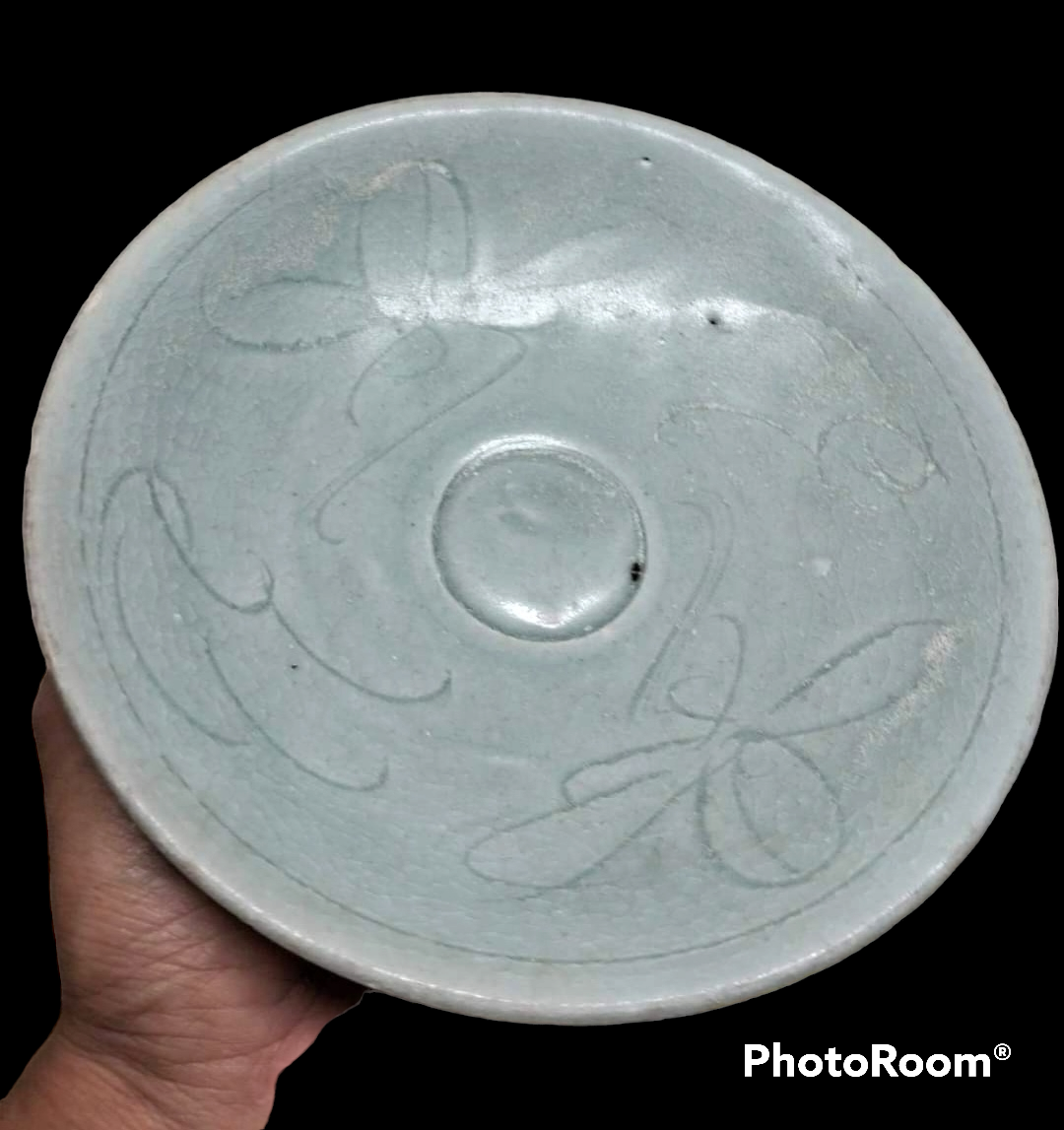 |
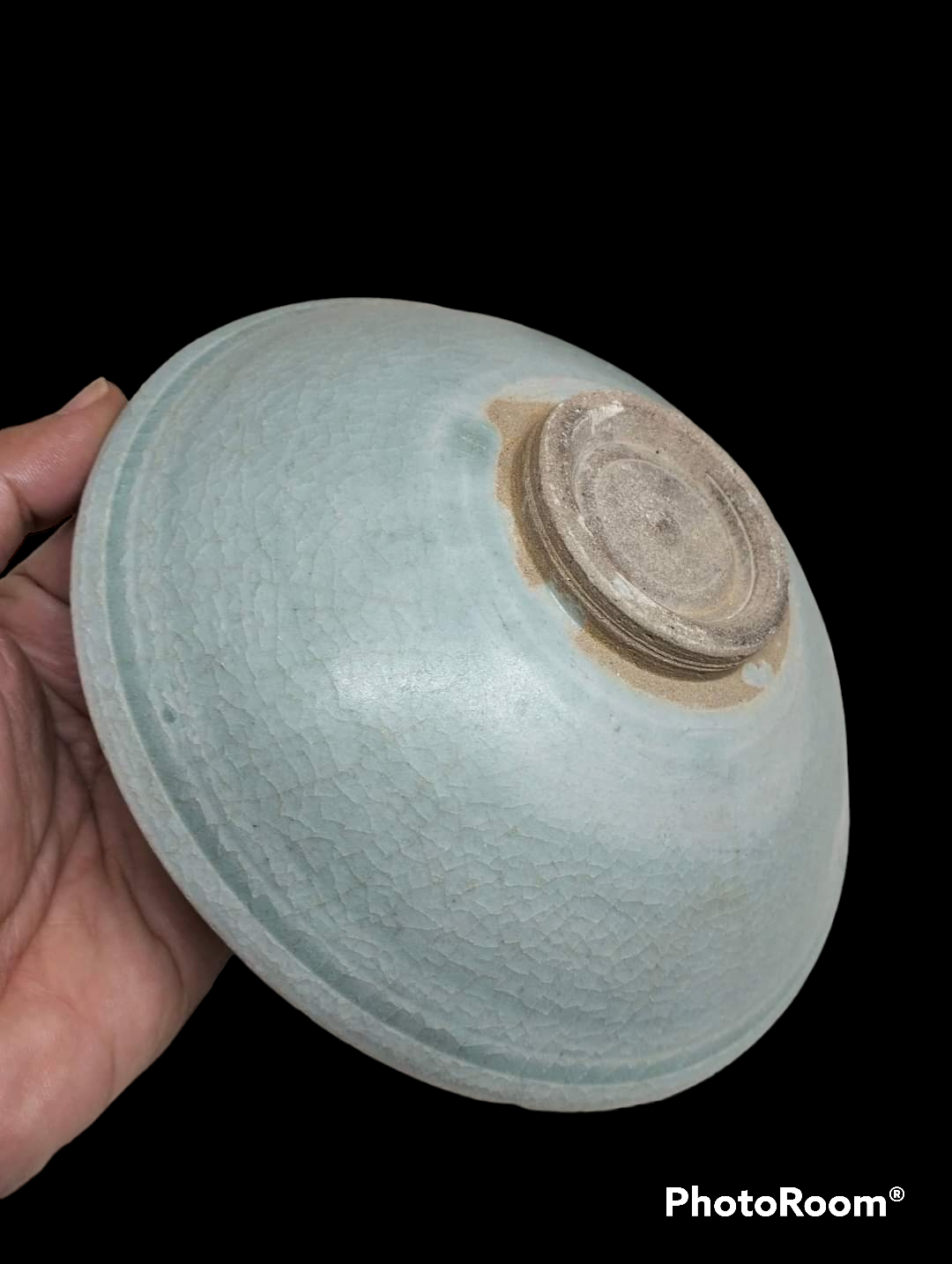 |
| Two examples of Southern Fujian kiln bowl/dish with carved lotus decoration. | |
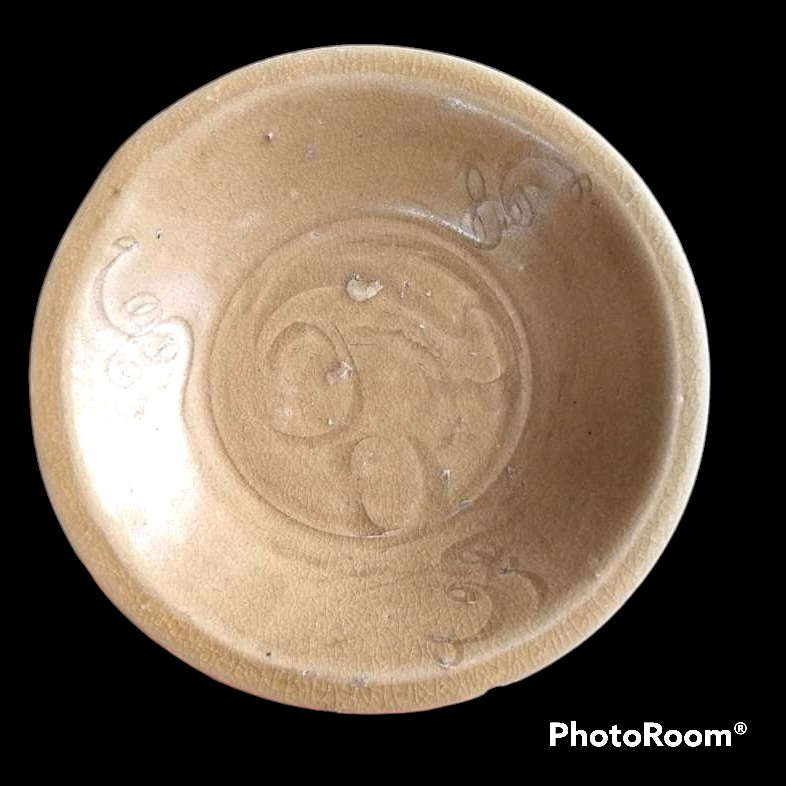 |
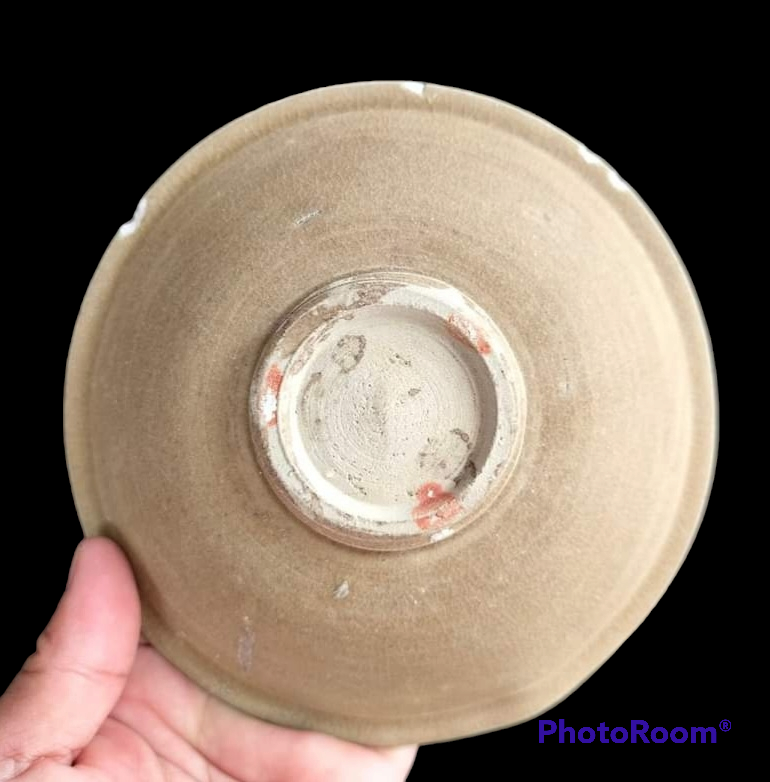 |
| Above with oxidised red spur marks on the foot is typical of Northern Fujian kiln | |
Another widely produced green glaze bowls are those with carved abstract cloud decoration. Fujian Lianjiang Pukou kiln has been identified as the main origin of such bowls. Many were found in the cargo of the Jepara wreck.
 |
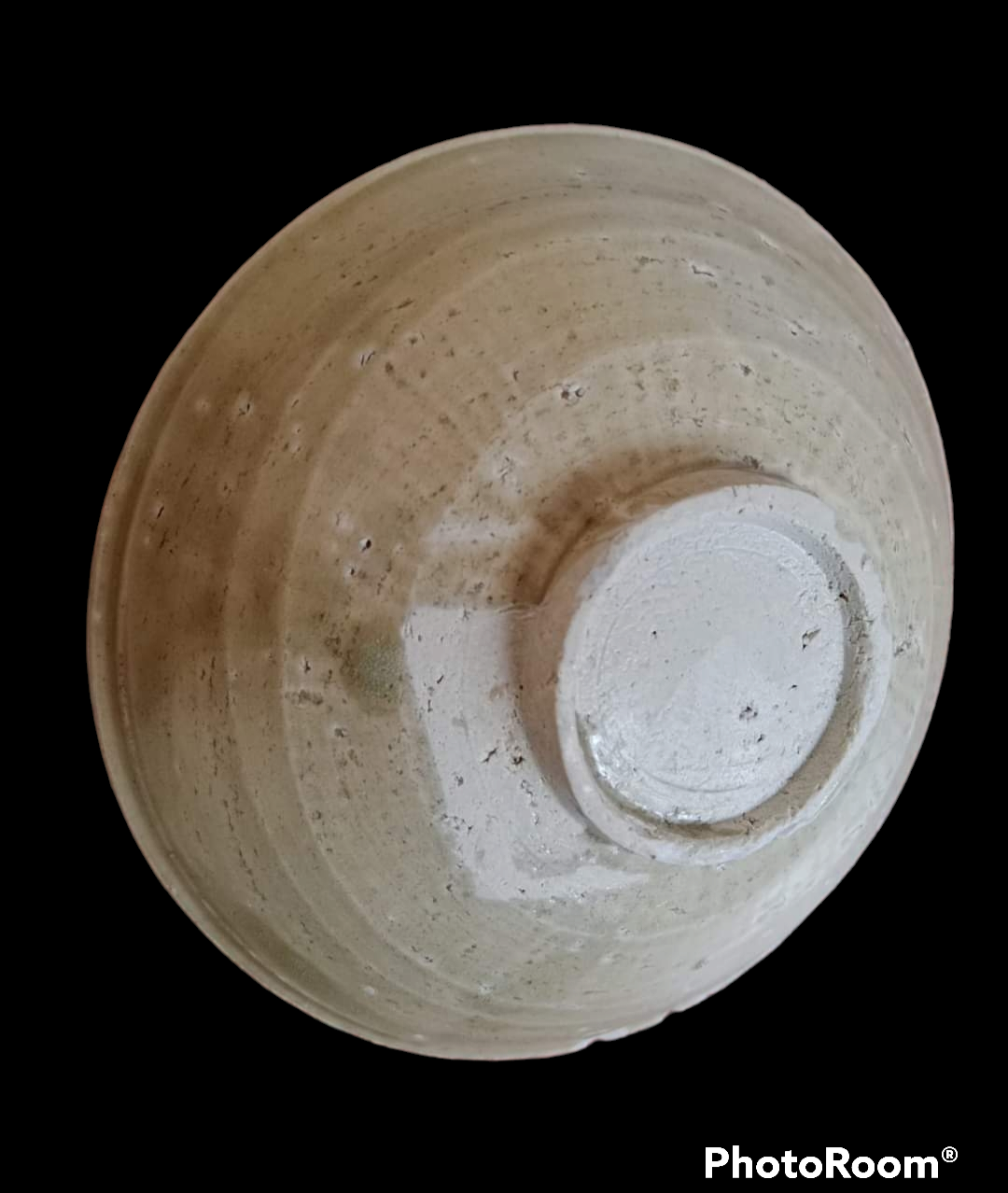 |
| Fujian Lianjiang Pukou kiln bowl with carved abstract cloud decoration | |
Song Fujian White/Qingbai Wares
Archaeological surveys showed that many Southern Fujian kilns, such as Zhangpu,
Zhangping, Nanan, Minqing and Dehua, started producing Qingbai/white wares by
the mid to late Northern Song period. The distinction between white and qingbai
can be rather subjective as the colour ranges from whitish, grayish white, light
bluish or yellowish white. Such wide spectrum of colour is mainly due to the
varying amount of iron oxide in the glaze and the firing atmosphere.
Some of the earliest Qingbai/white wares could be found in the Lingga and Pulau
Buaya wreck. Among them, those bowls with thicken rim must be among the most
widely produced. Such bowls have a long production history and the proto
type could be
traced to Tang dynasty Hebei Xing and Ding kilns. It remained
popular during the Northern Song period but most exported could be traced to
Guangdong and Fujian kilns. Those from the Lingga wreck were from
Guangdong Xicun and Bi Jiashan kiln. As for Pulau Buaya wreck, they likely
originated from some of the Southern Fujian kilns.
For more information on some Fujian white/qingbai bowls from Pulau Buaya wreck, please read below article:
Re-visiting some Qingbai wares from Pulau Buaya wreck
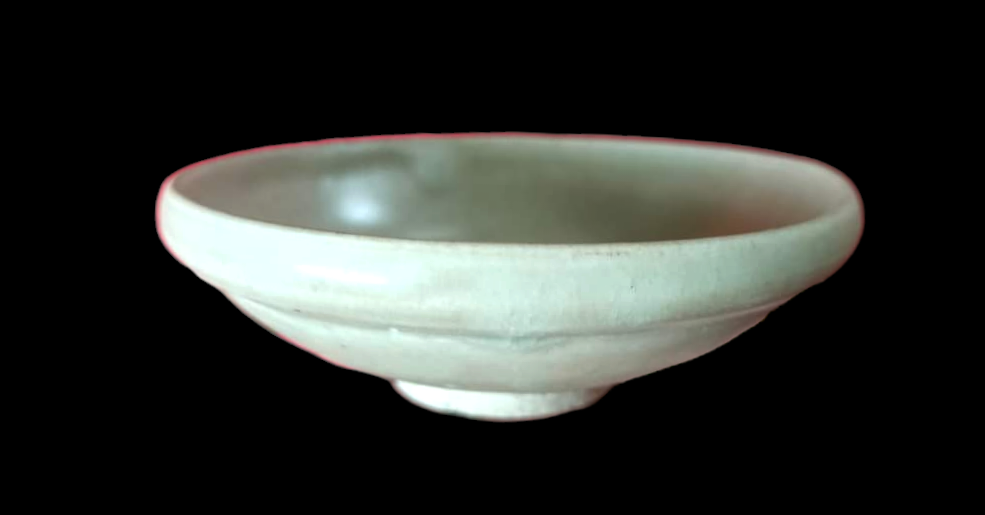 |
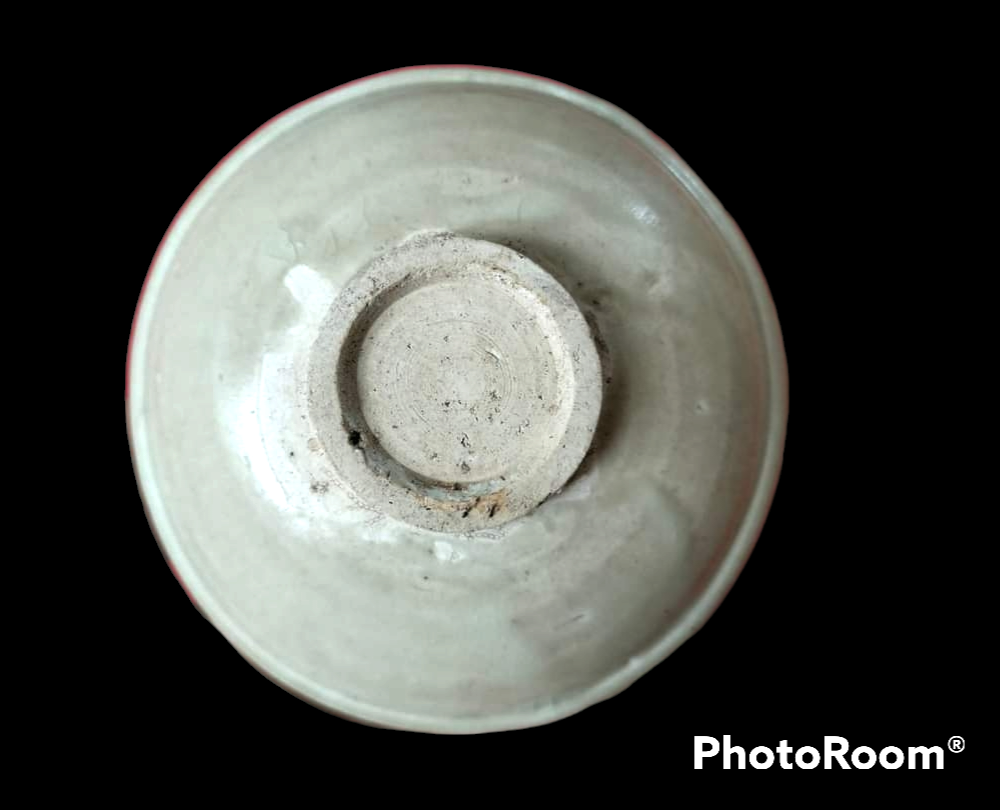 |
| An example of the thicken rim bowl recovered from Batang Kumpeh. Likely produced in one of the Southern Fujian kiln. | |
In the Lingga wreck, there also large quantity of a type of whitish glaze bowls with rather high foot and steep deep body. From the more whitish and coarse paste, they are likely a product of Fujian Nanan kiln. They were also among the ceramics cargo of Flying Fish wereck. We should bear in mind that this is a generic form which are were widely produced in Guangdong such as Chaozhou Bi Jiashan kiln. In fact, both Nanan and Chaozhou Bi Jiashan also produced a similar distinctive form of tall cover boxes.
 |
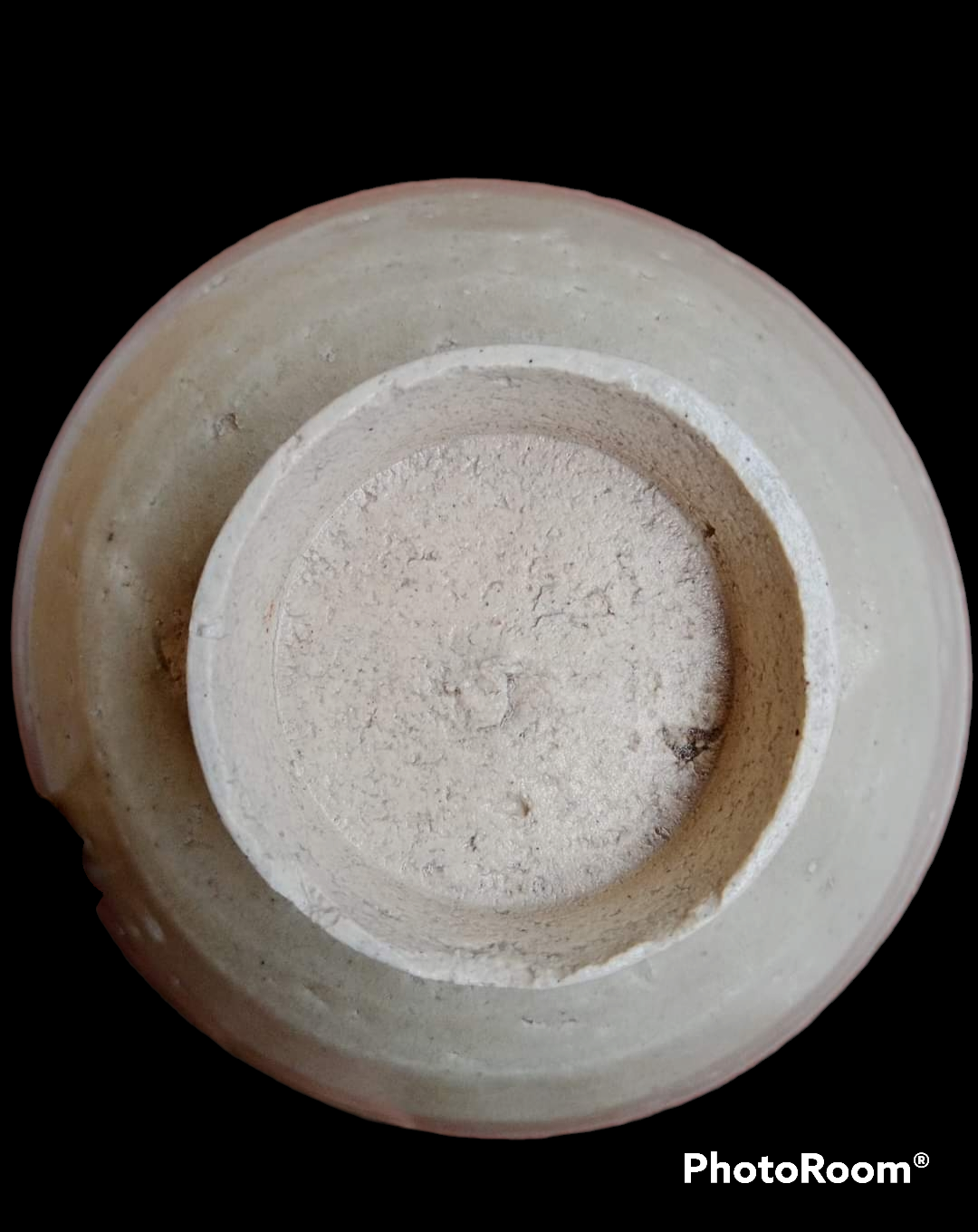 |
Another interesting late Northern Song form is the lobed body white/qingbai jarlets which again poses identification problem as they were also produced in both Guangdong and Fujian kilns.
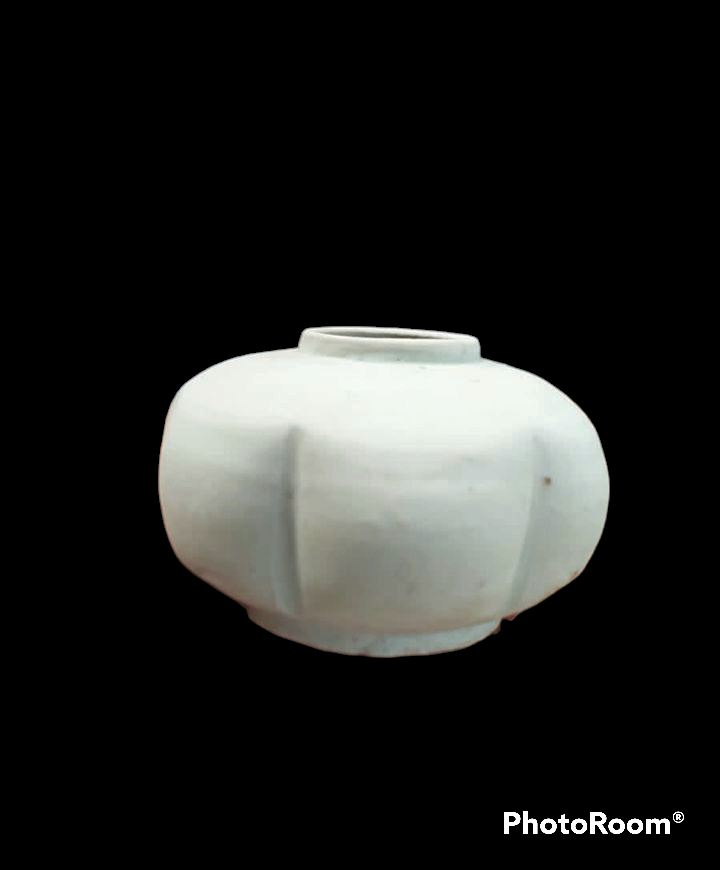 |
 |
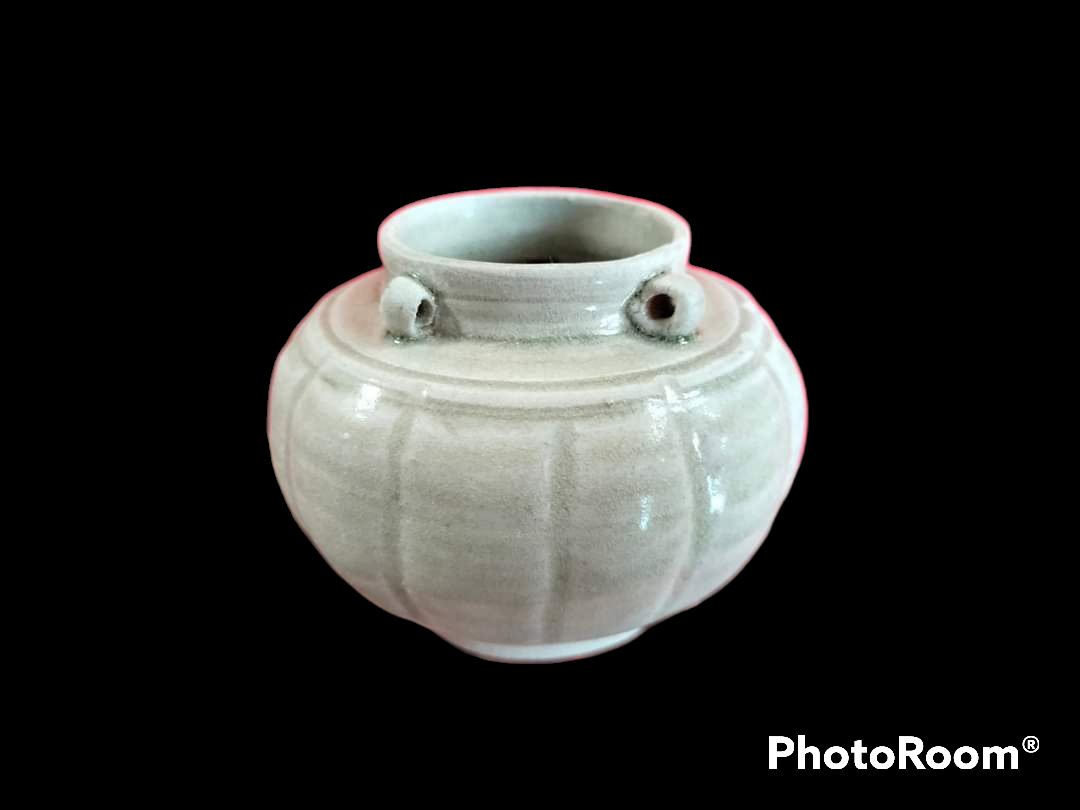 |
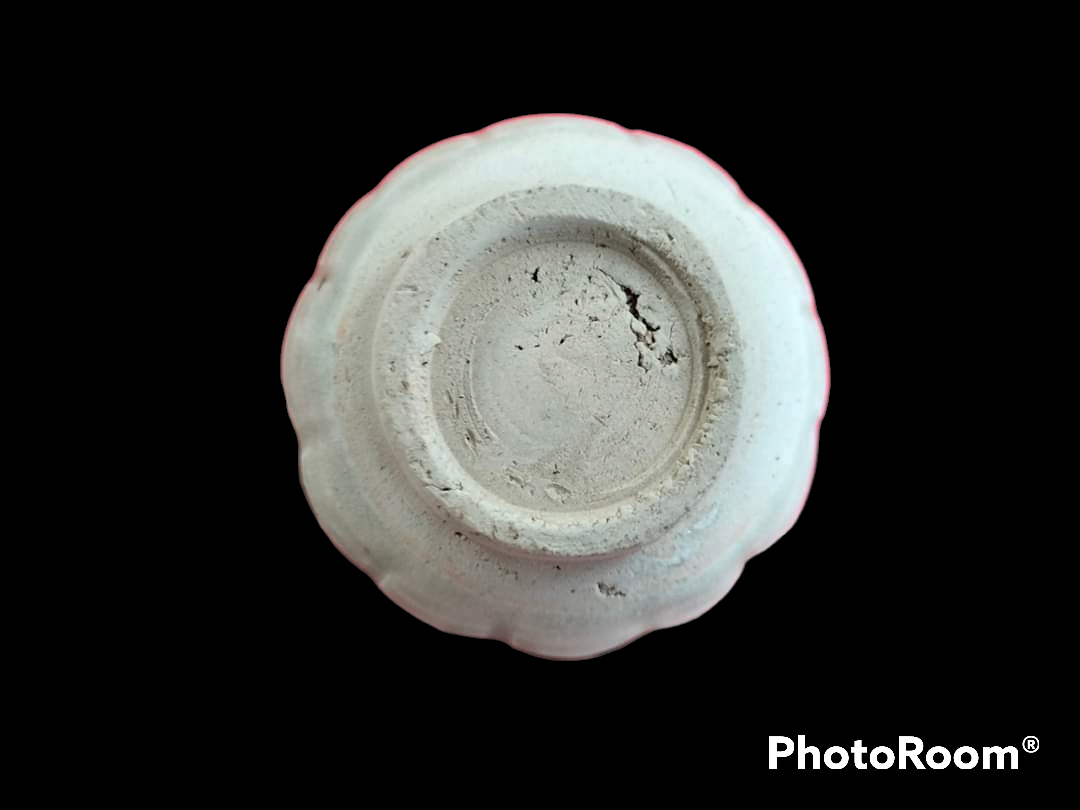 |
| Two exampes of the lobed body white/qingbai jarlets | |
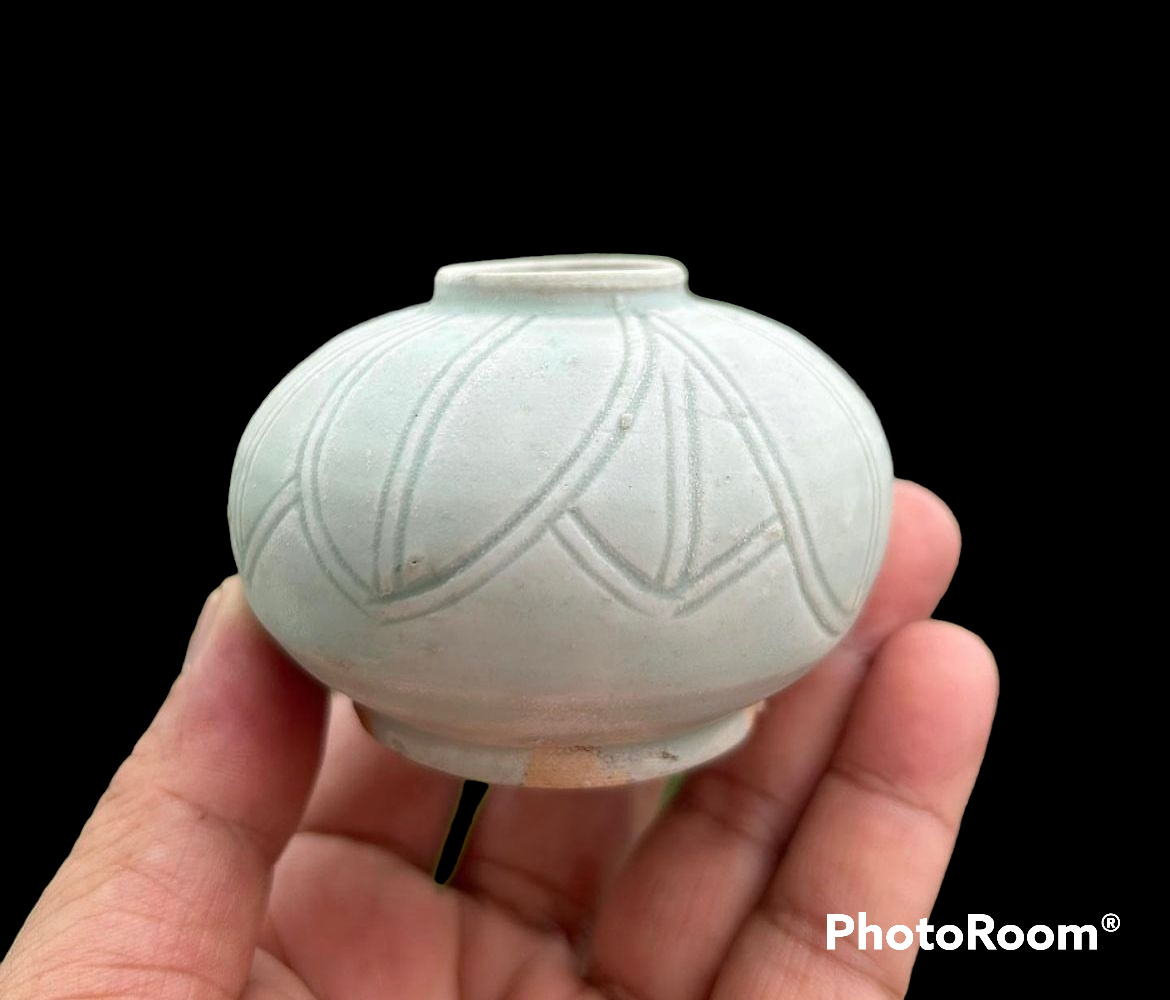 |
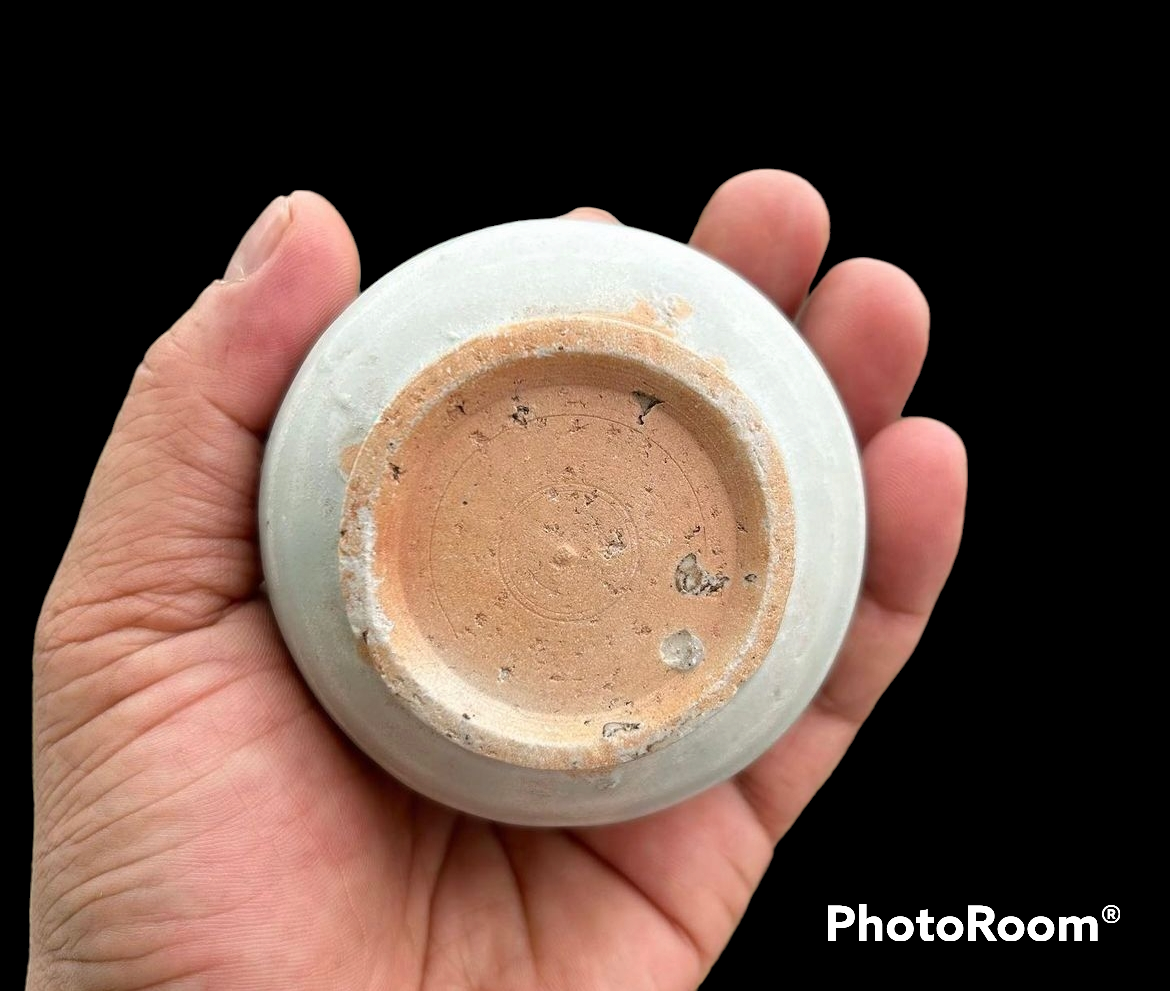 |
| Another form with carved lotus petals instead of lobed body | |
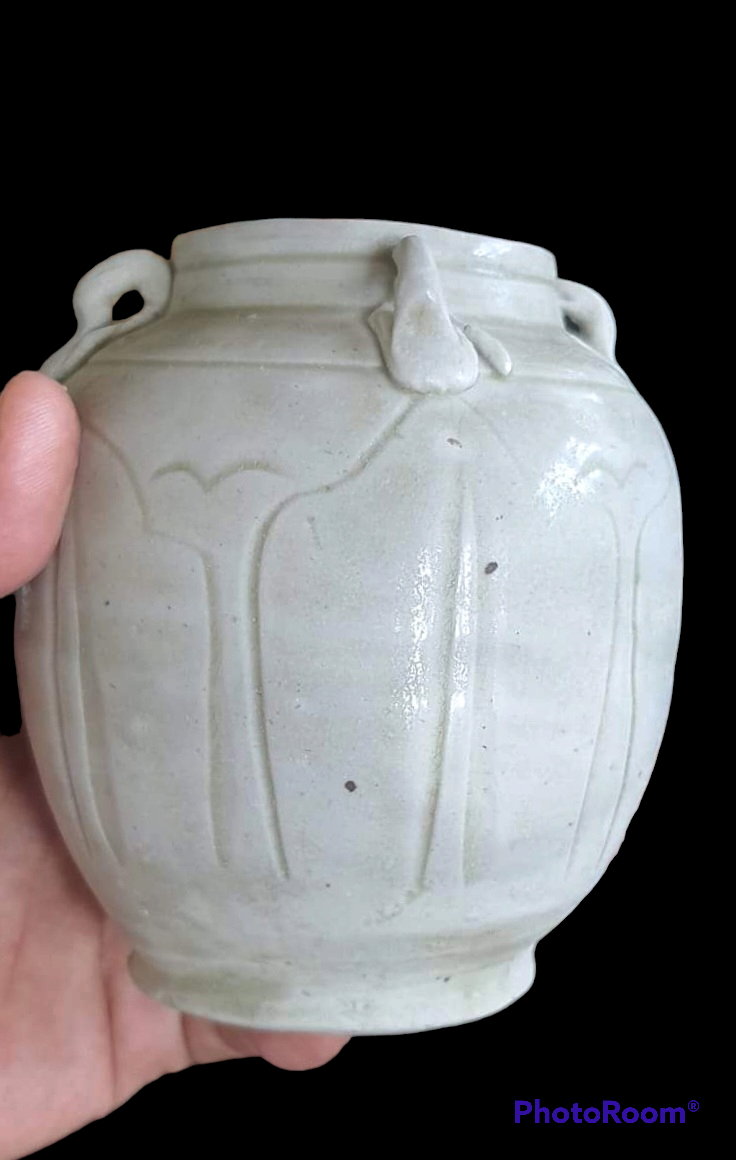 |
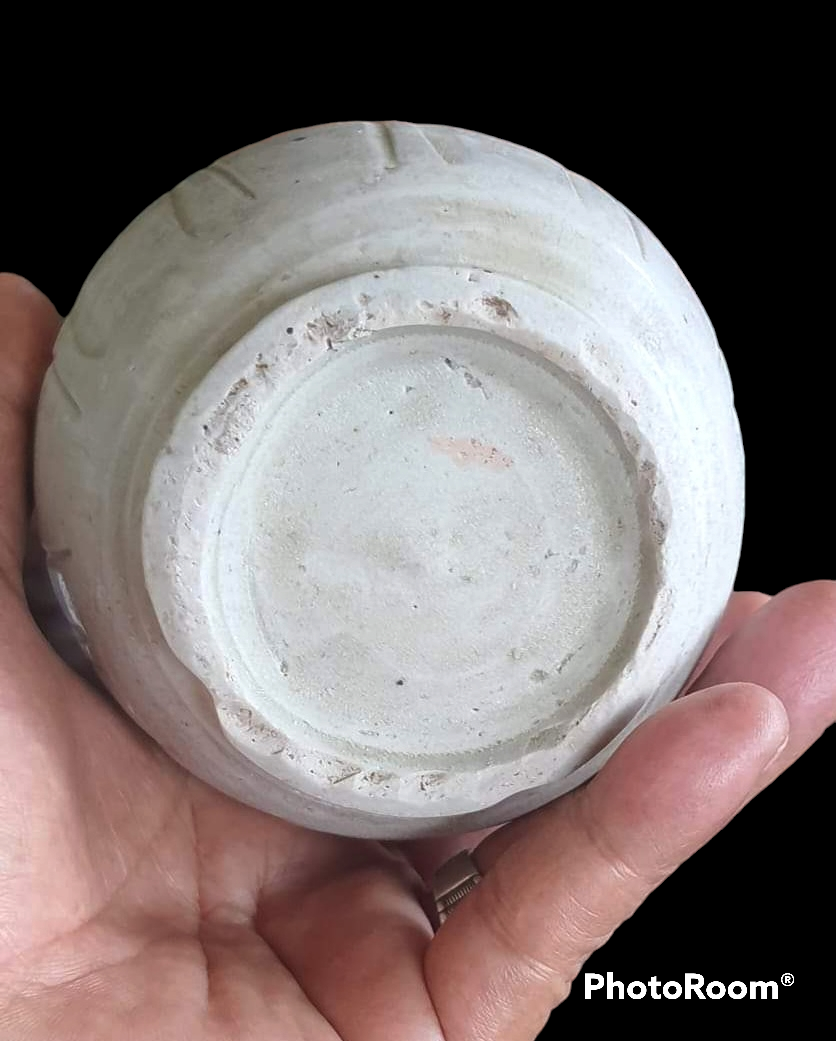 |
| Late Northern Song Southen Fujian kiln qingbai jar with carved lotus petals | |
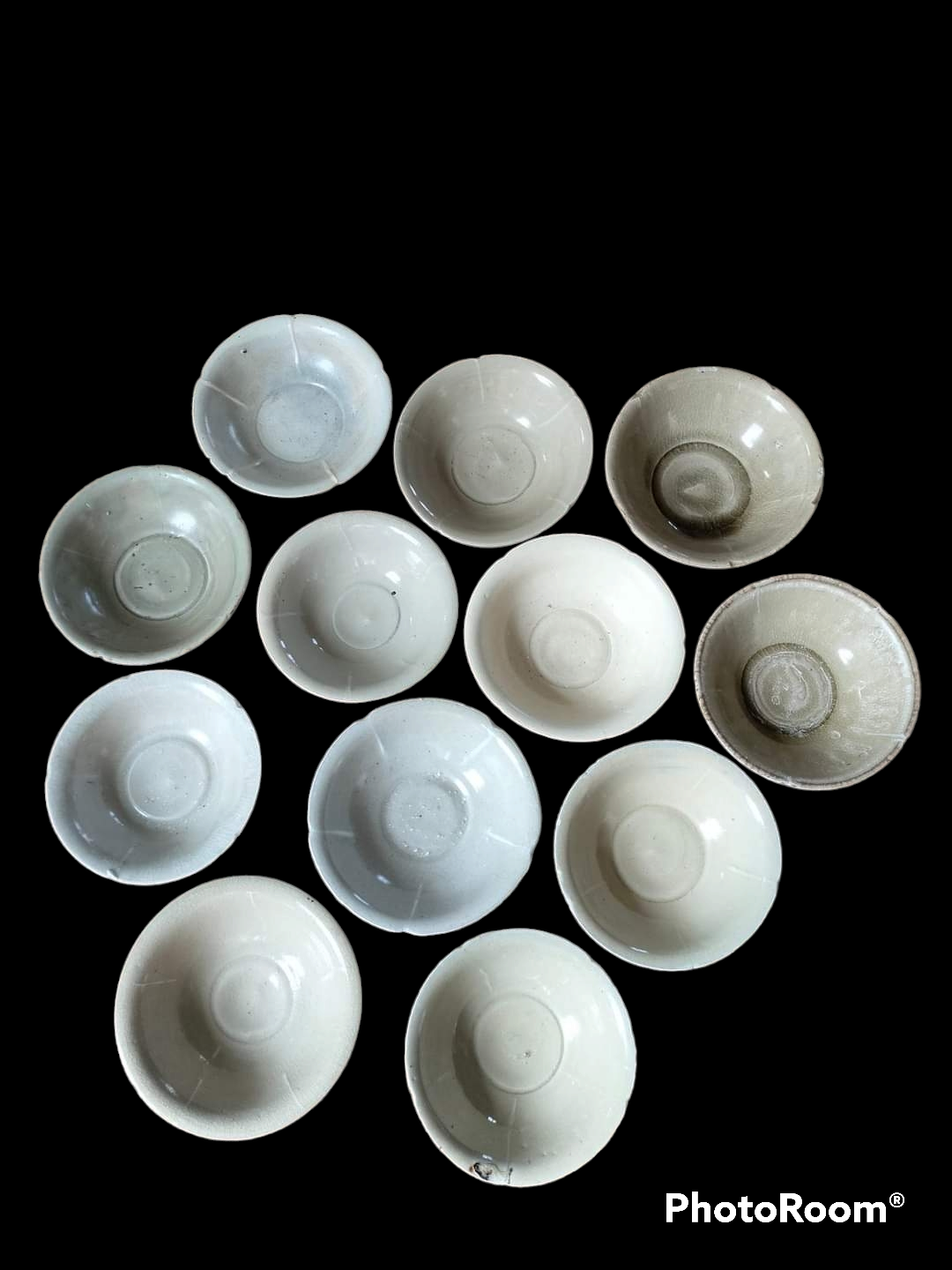 |
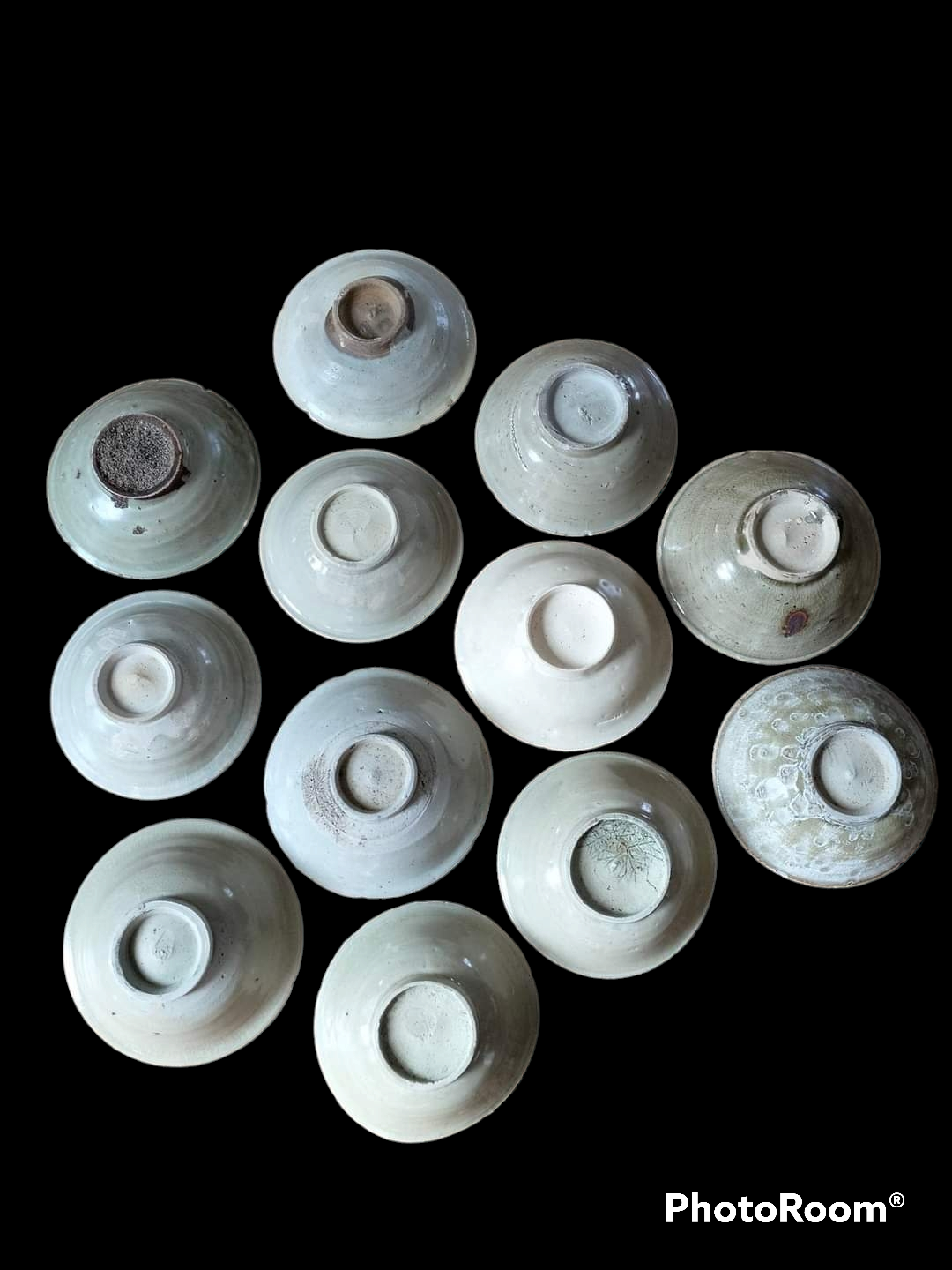 |
 |
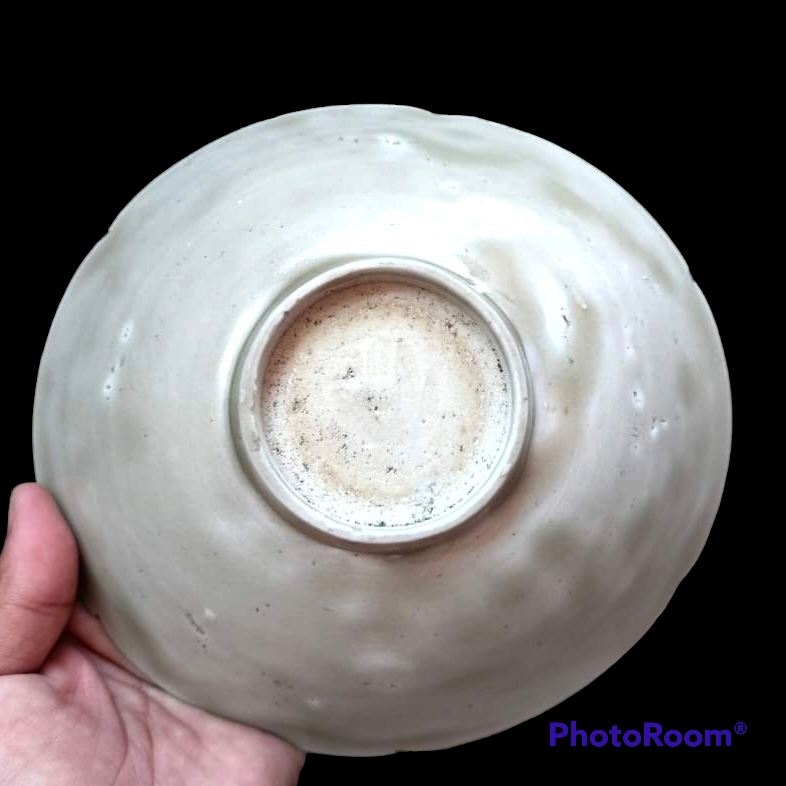 |
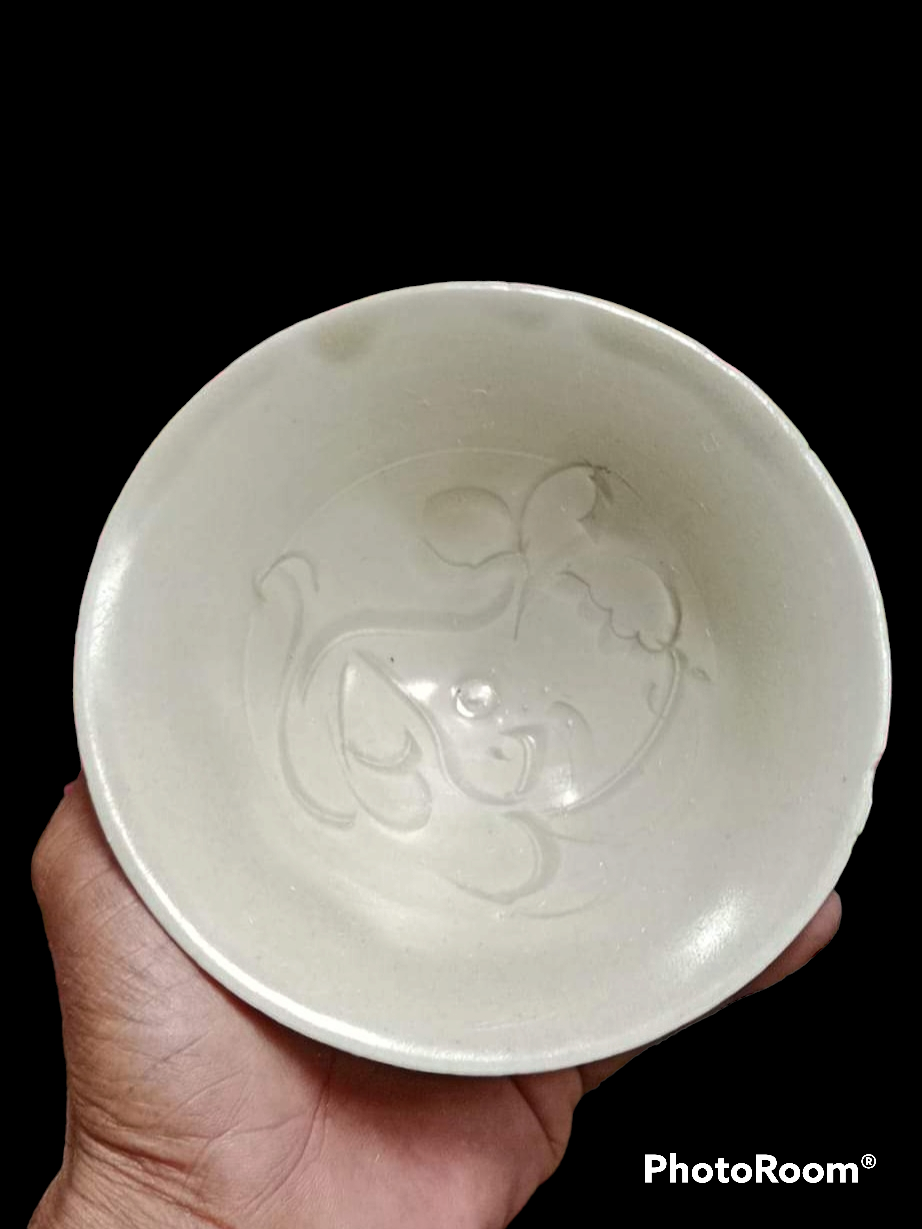 |
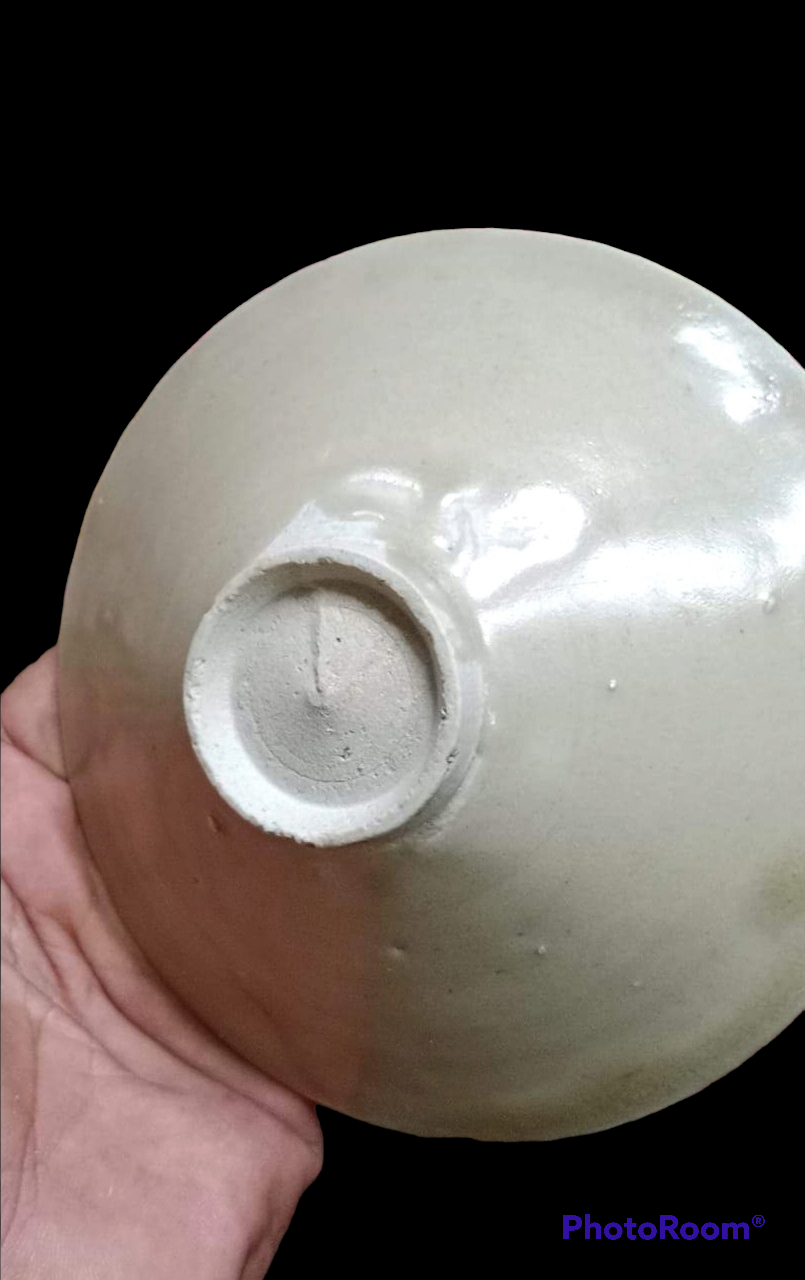 |
| Two examples of the Minqing bowls with Ding decorative style and tear drops like pooling of glaze on the exterior | |
 |
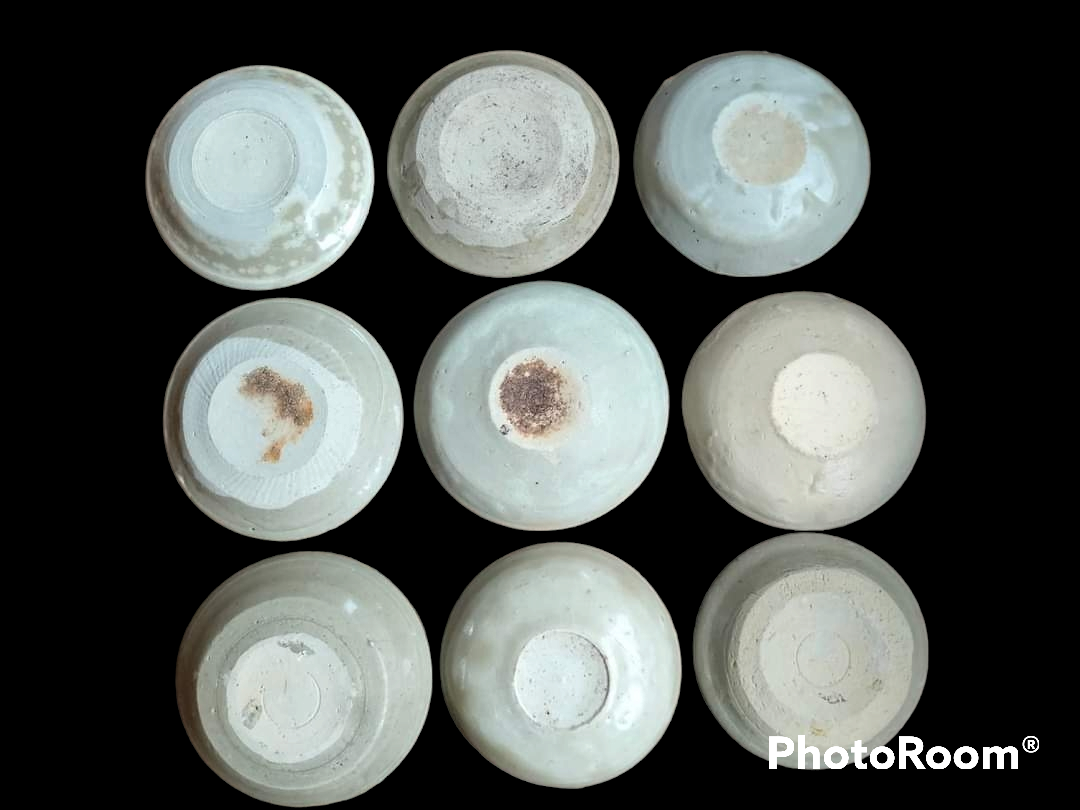 |
| Group of Minqing kiln dishes with carved decoration | |
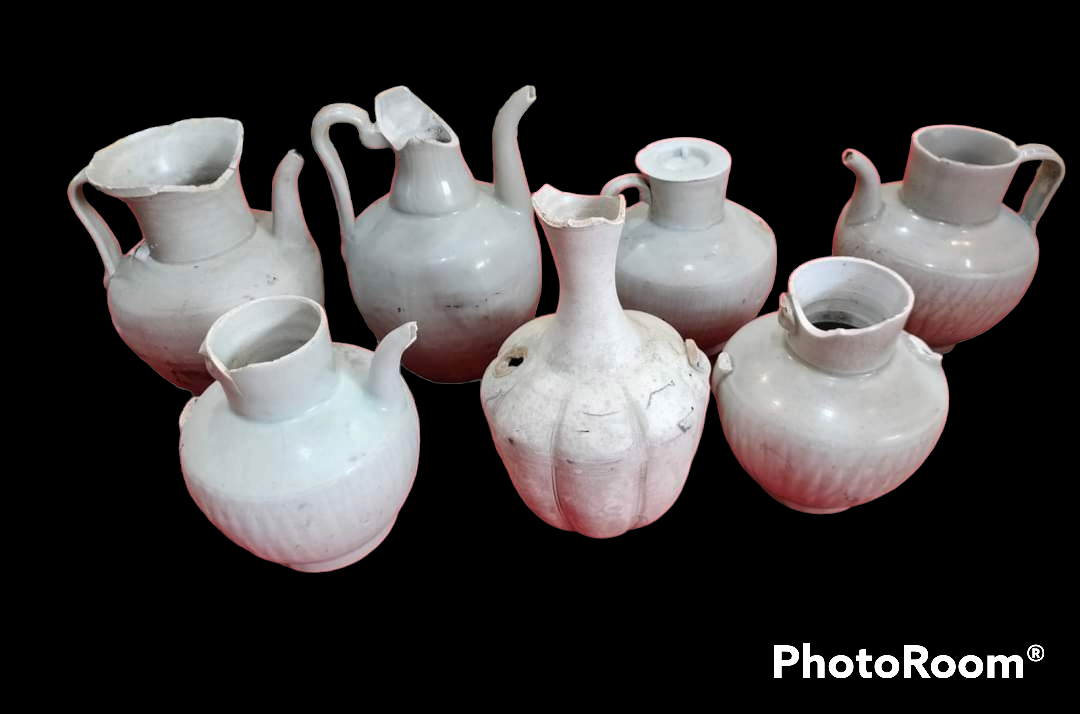 |
|||
 |
|||
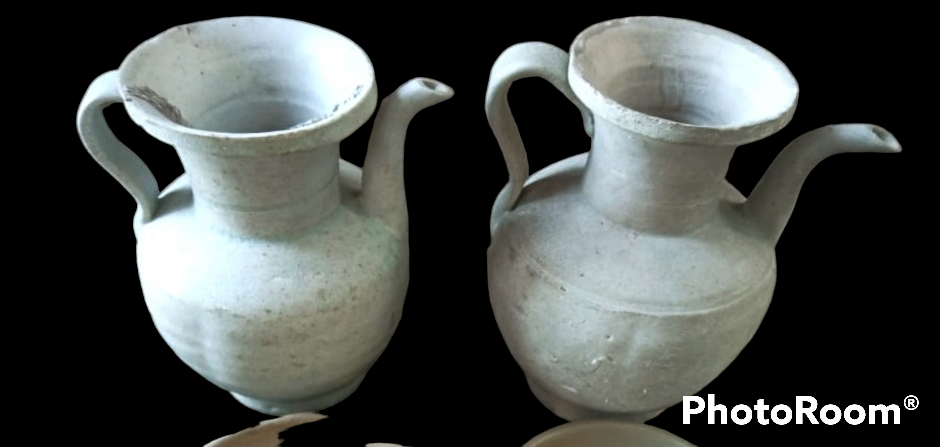 |
|||
| Some examples of qingbai ewers found in Batang Kumpeh | |||
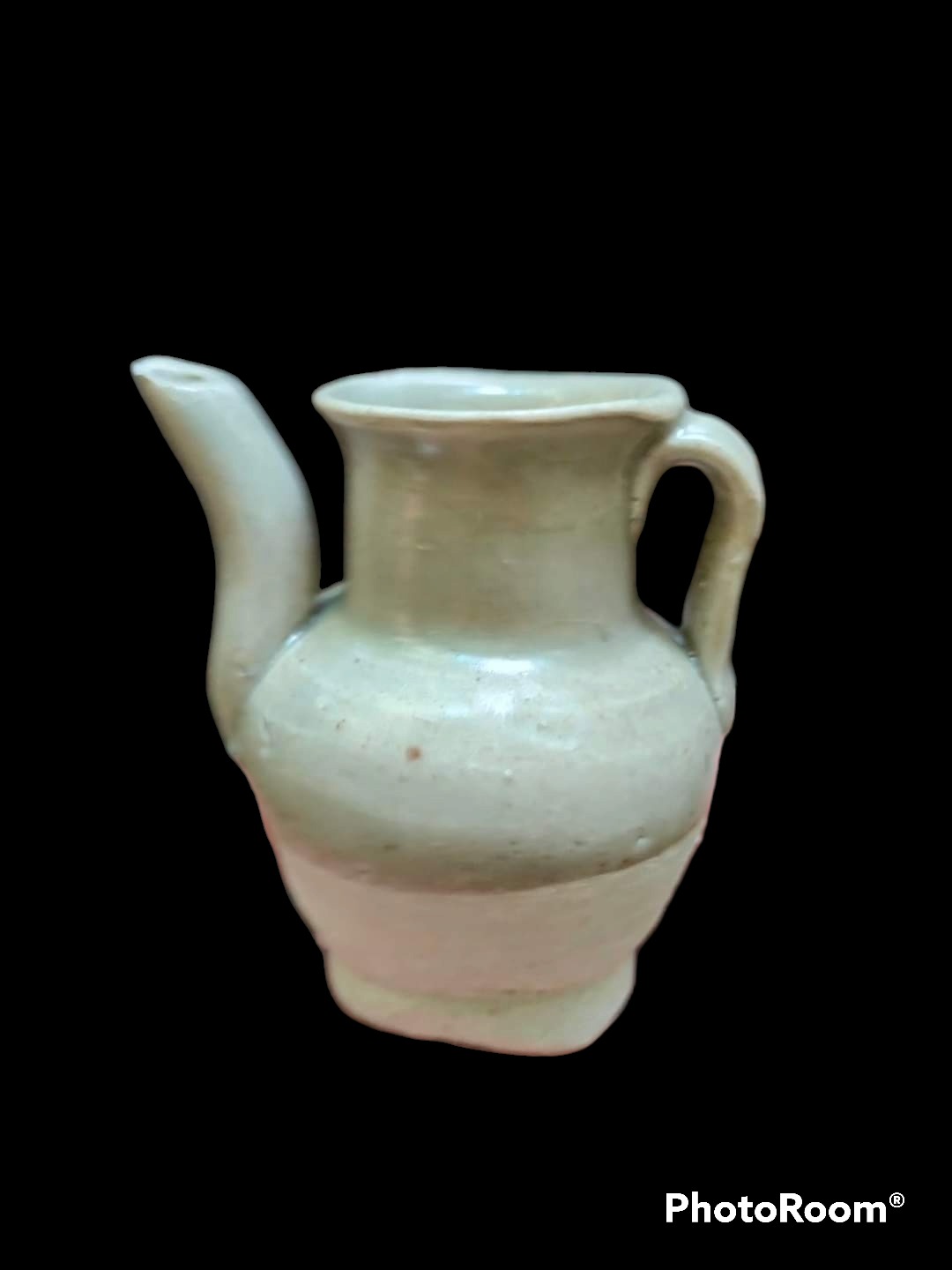 |
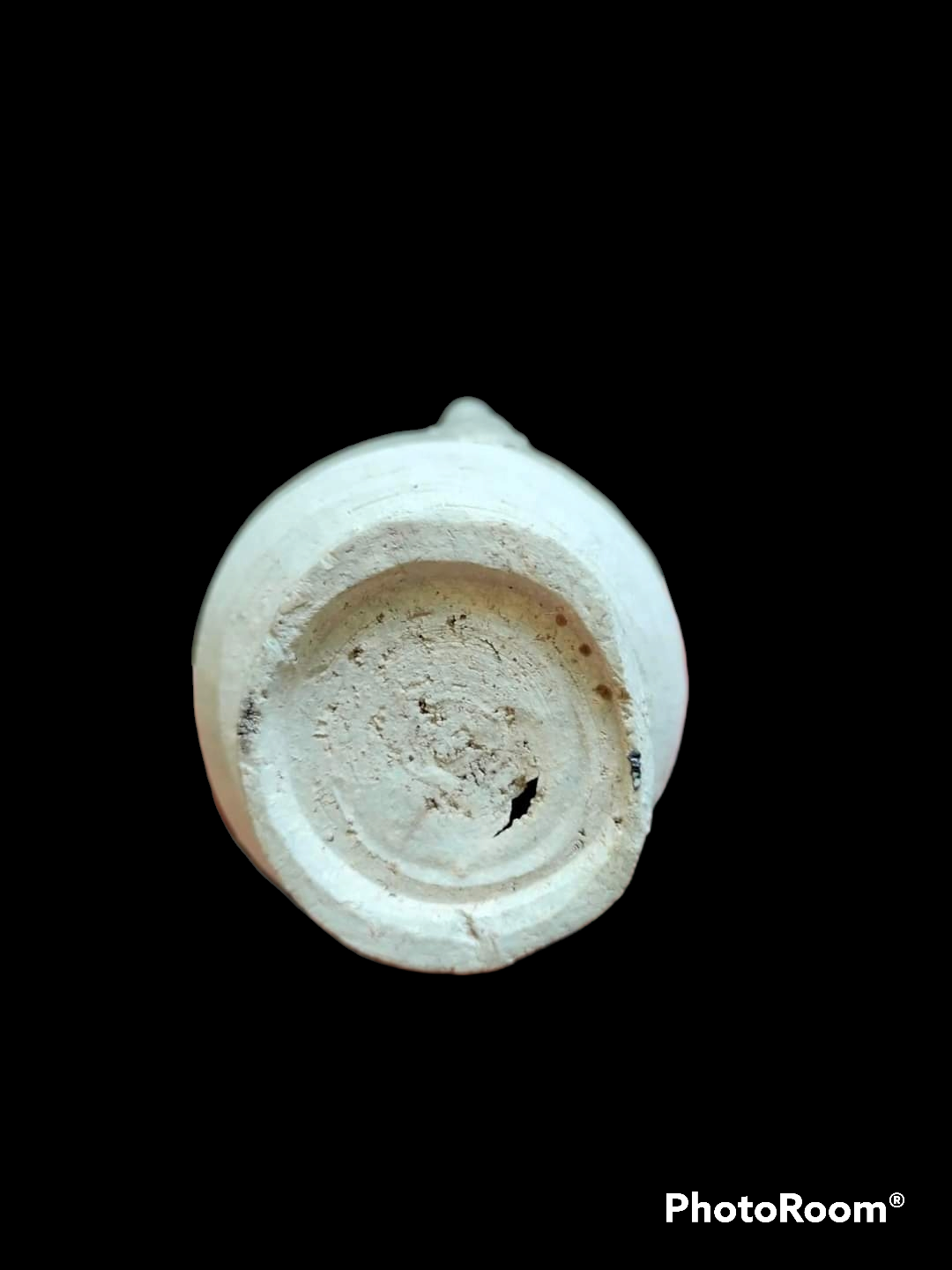 |
||
| A small Southern Fujian kiln straw colour ewer | |||
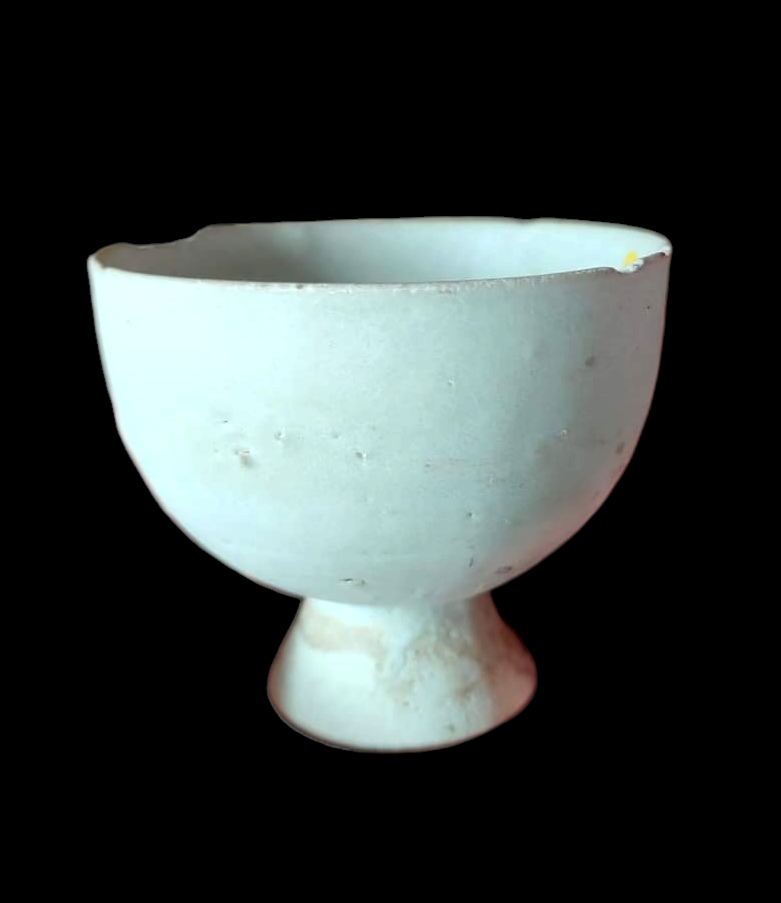 |
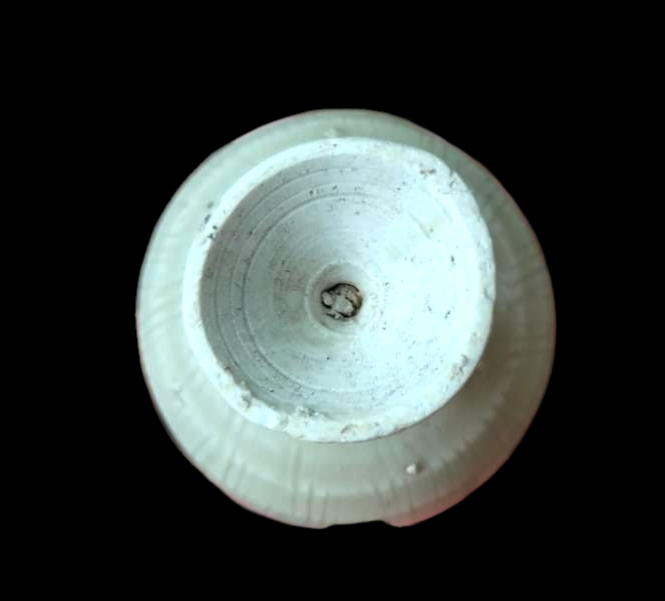 |
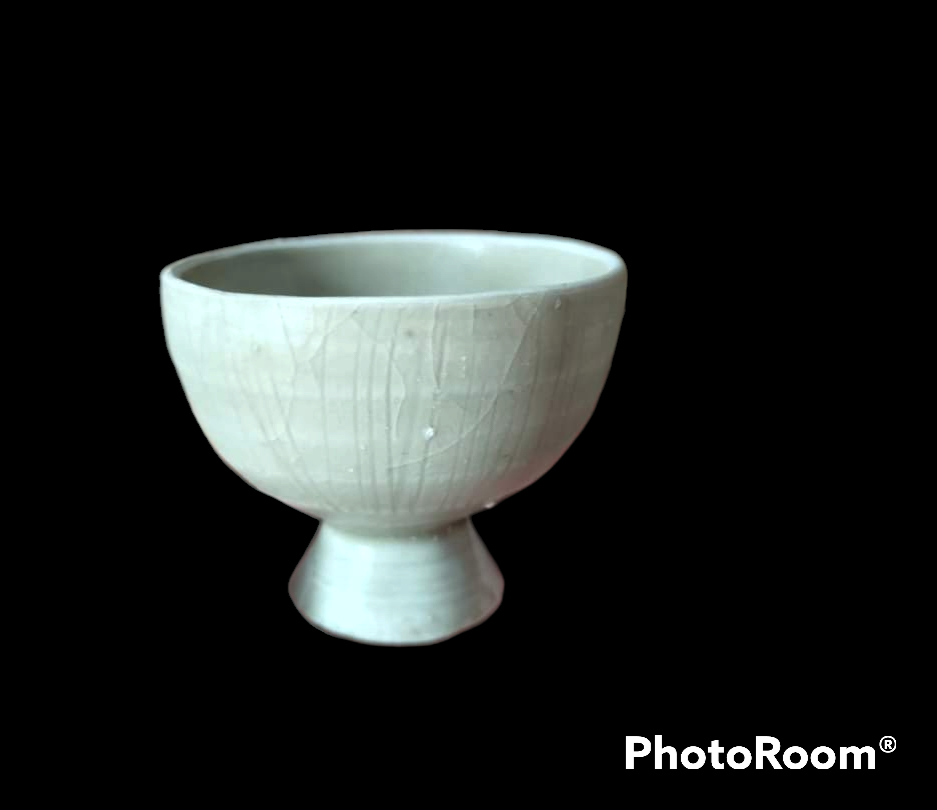 |
 |
| Two Southern Song Fujian kiln qingbai cups. | |
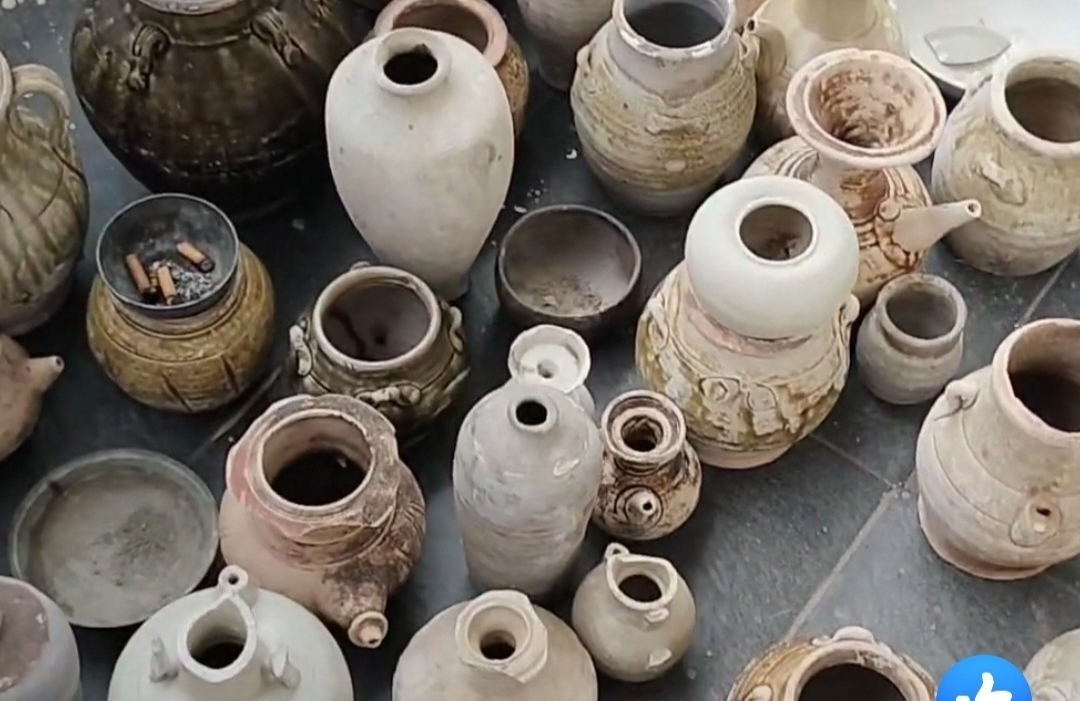 |
|
| There are two Cizao kiln brownish green kendi in the photo. They likely date to late Northern Song/early Southern Song | |
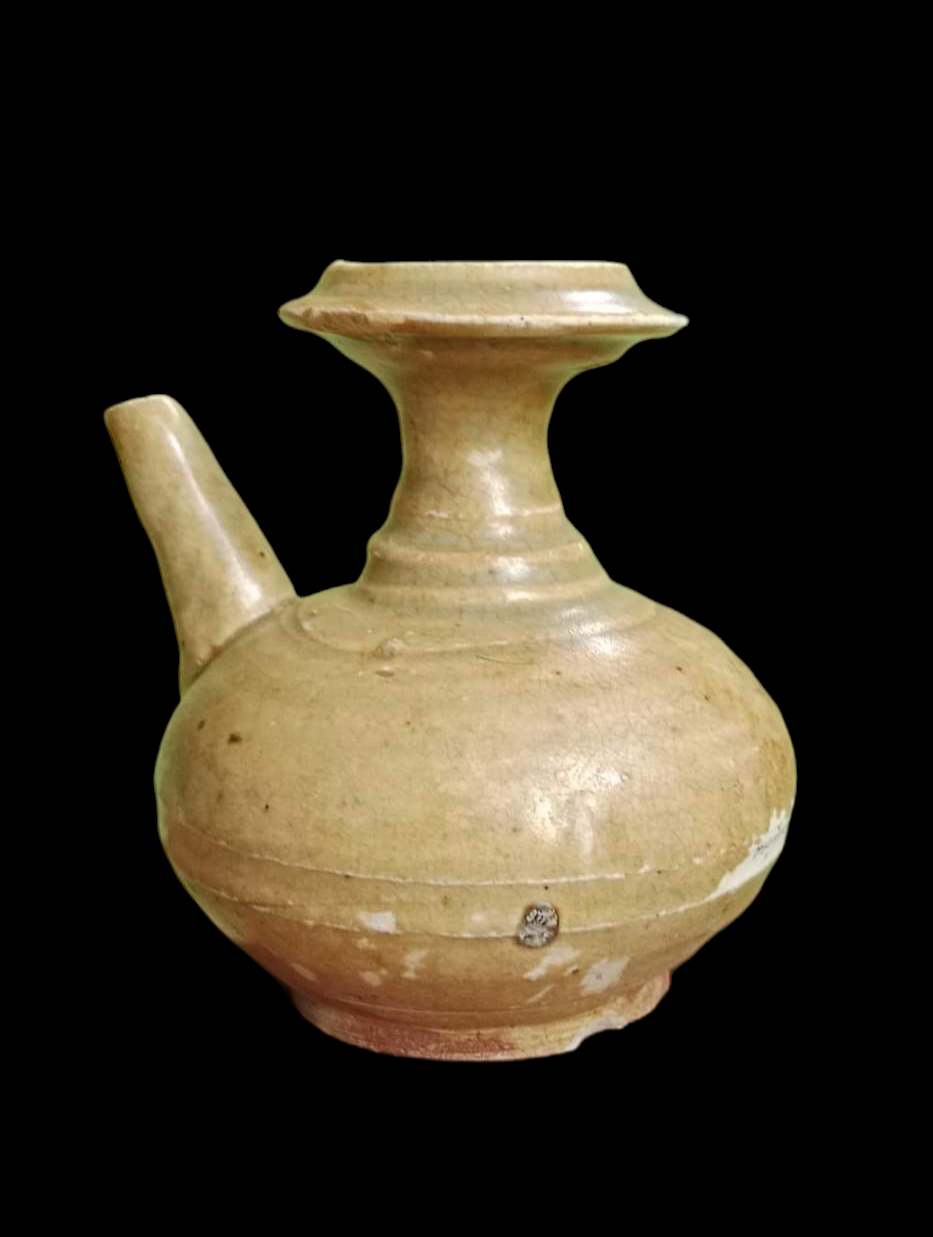 |
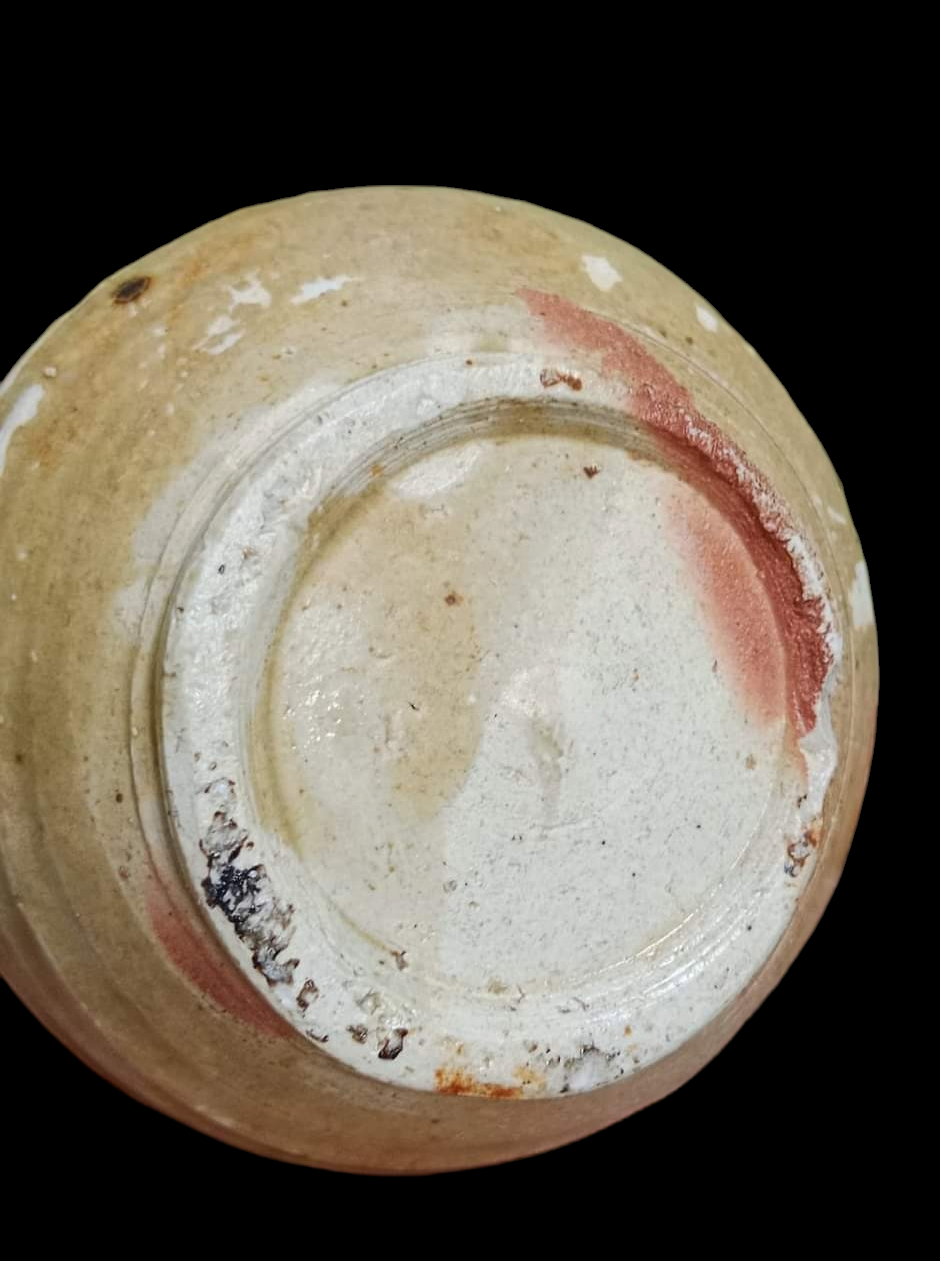 |
| Southern Song yellowish green kendi. Likely a product of Fujian Cizao kiln. | |
 |
 |
| Southern Song Cizao kiln lead green/amber glaze kendi | |
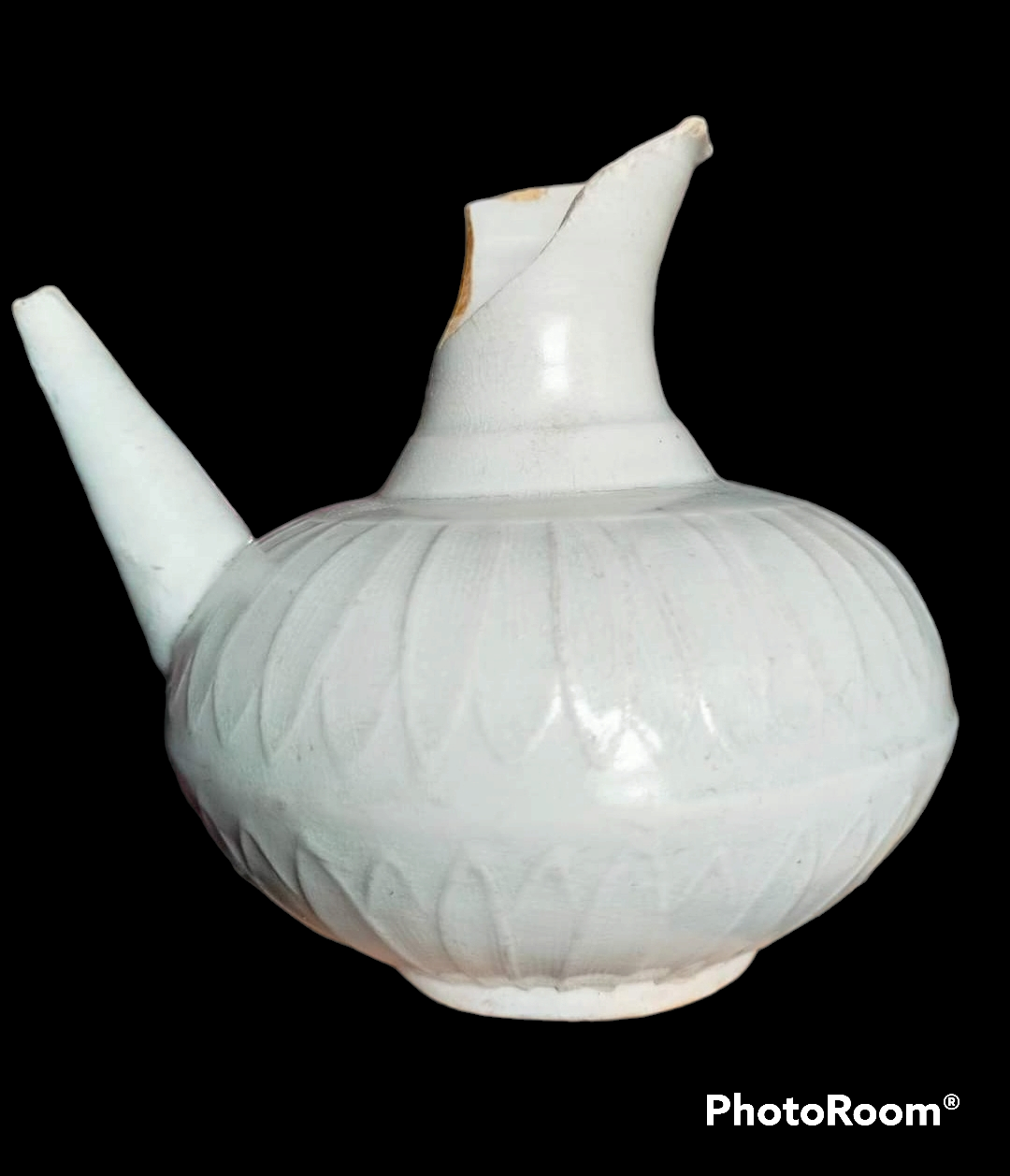 |
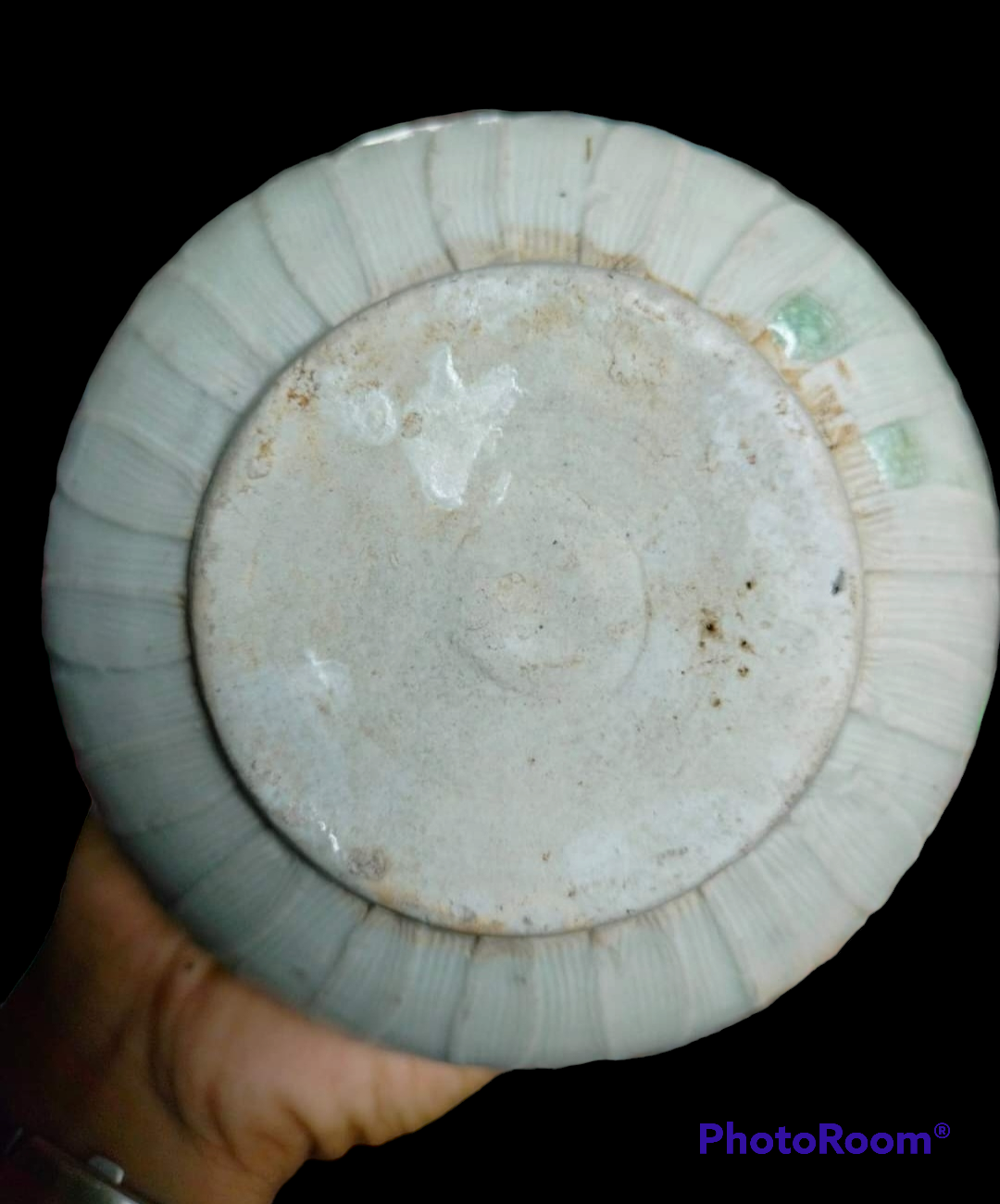 |
 |
 |
| Southern Song Dehua white glaze kendi | |
From several of the more well documented Southern Song wrecks in Southeast Asia region, white/qingbai cover boxes constituted a staple in the ceramics cargoes. From published China archaeological kilns findings, Southern Fujian kilns especially Dehua and Anxi were mentioned as the main suppliers. In fact, there is a scientific paper published that touched on the compositional analysis of qingbai wares from the Java Sea wreck. Based on the samples taken for the qingbai cover boxes, besides Dehua, an interesting find was that some were from Northern Fujian Jianyang Hua Jiashan kiln (建阳华家山窑).
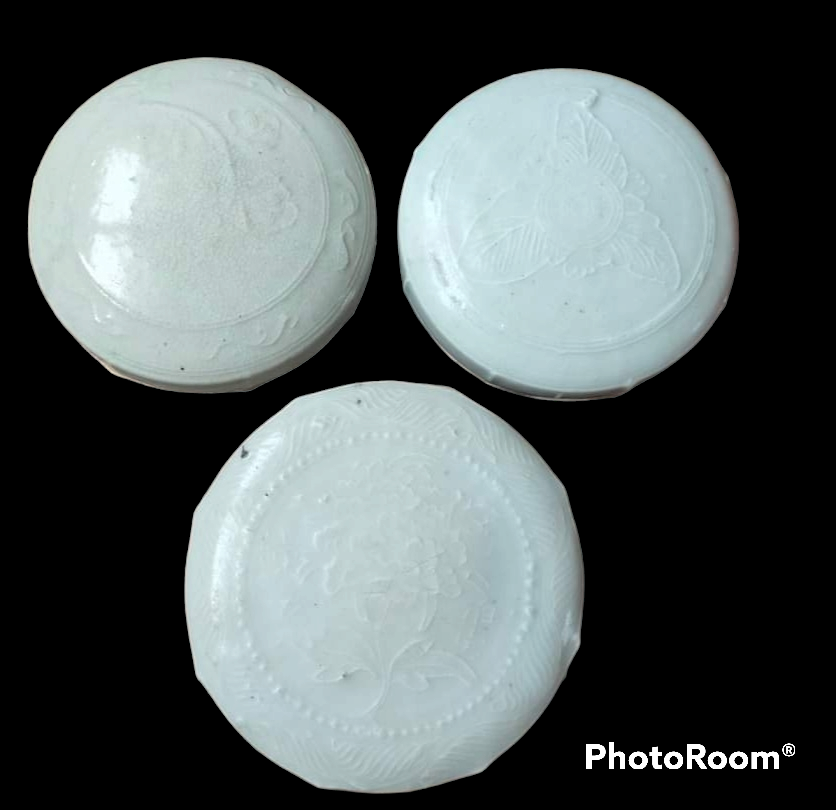 |
|
| A group of Southern Song (1150 - 1200 A.D) qingbai cover boxes. One at top left is likely from Dehua and the remaining two likely from Anxi or Hua Jiashan. | |
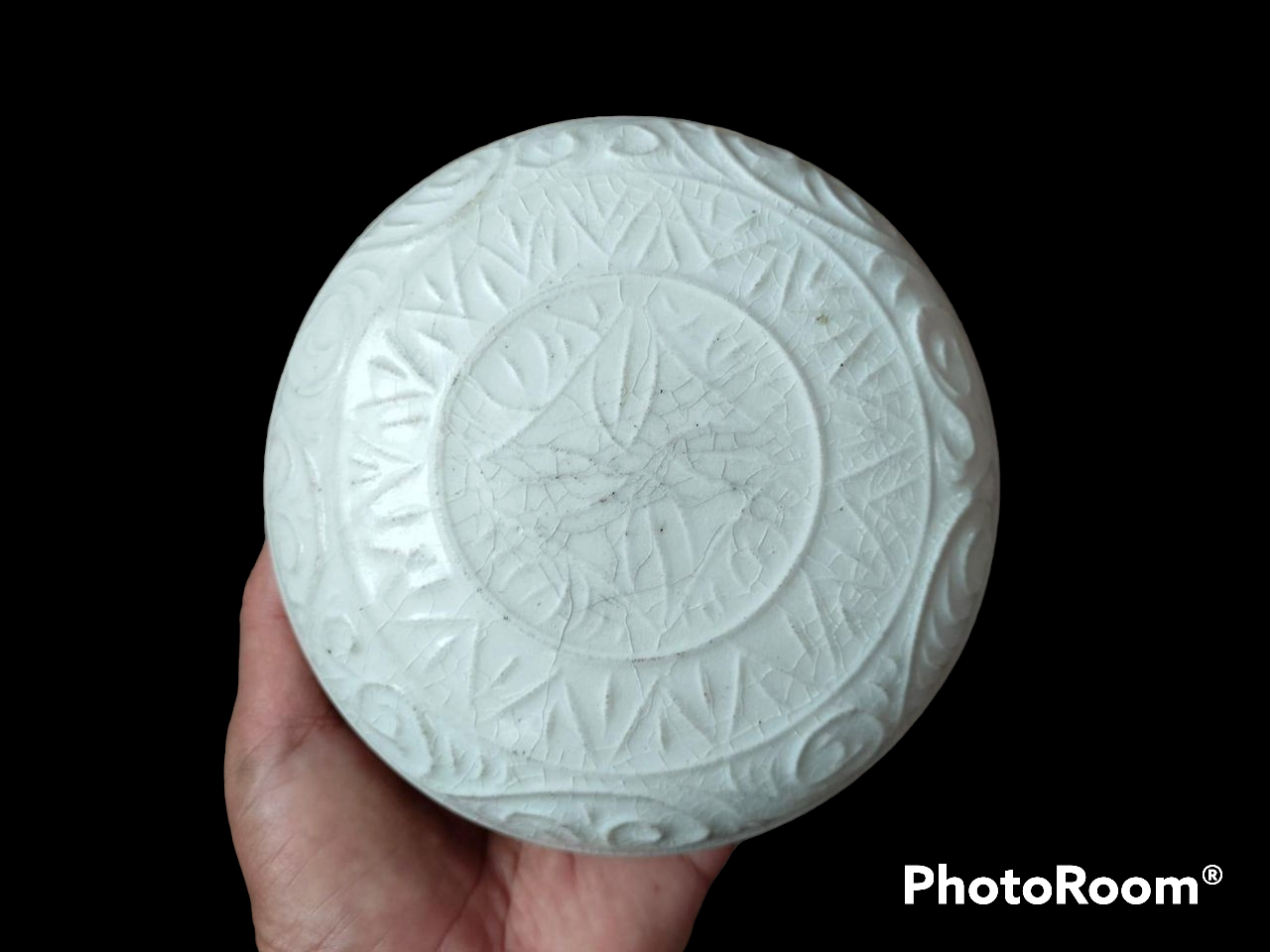 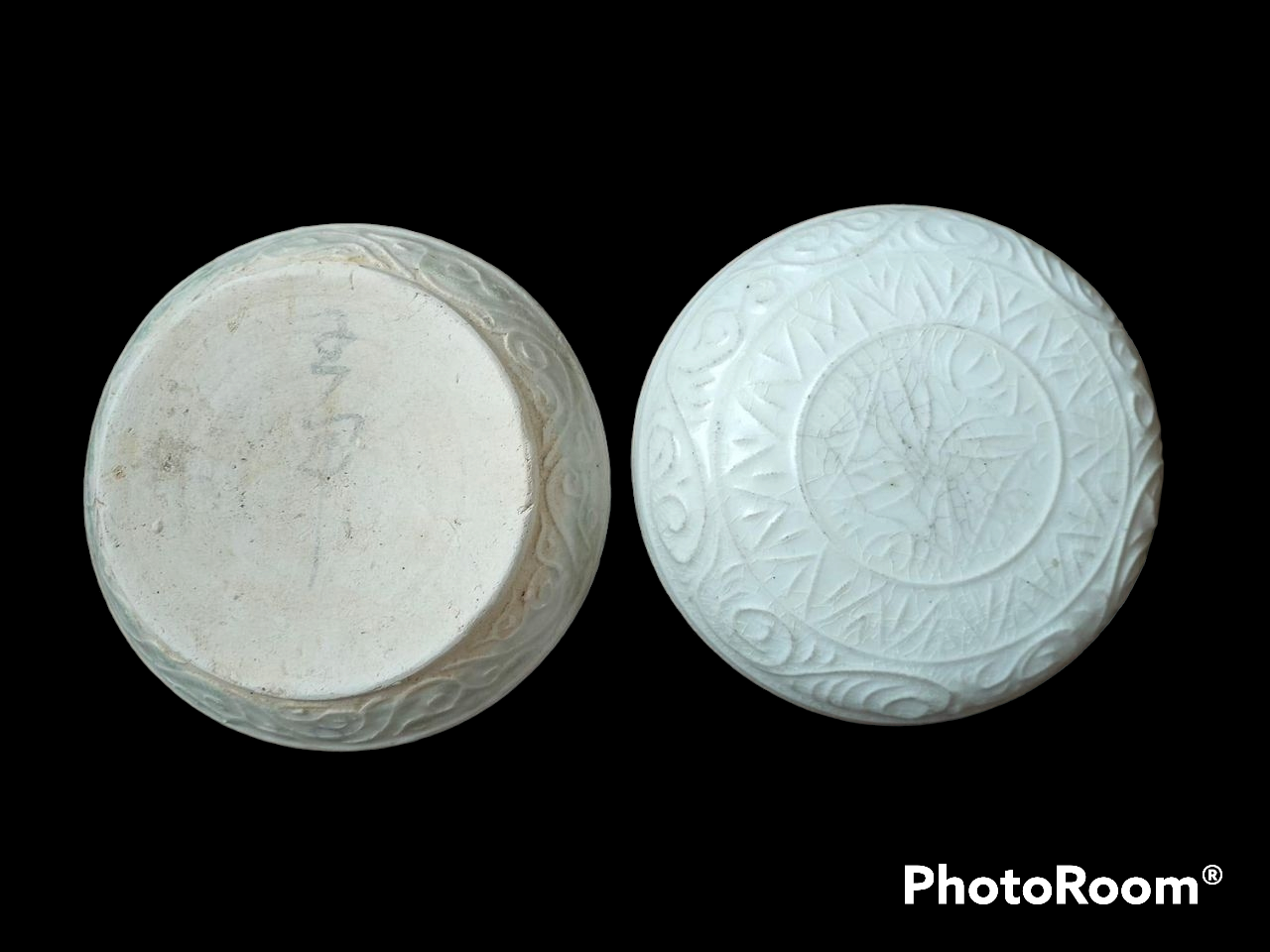 |
|
| Southern Song Dehua white glaze cover box with impressed decoration | |
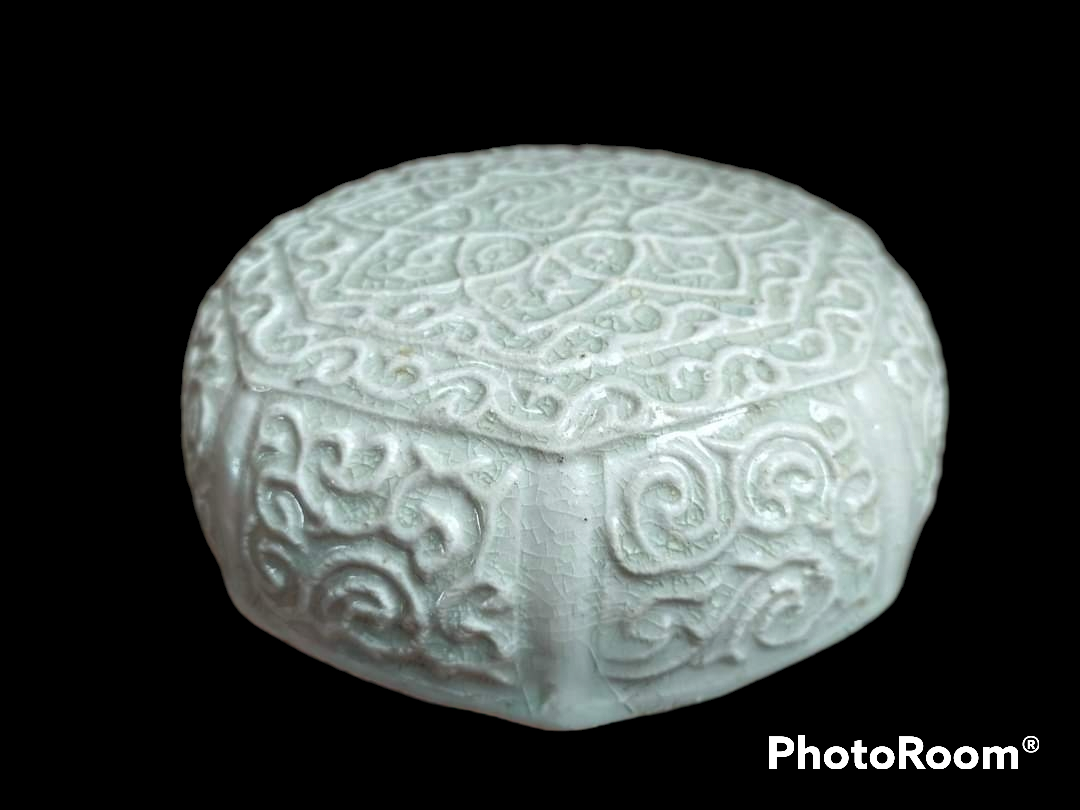 |
|
| Southern Song Qingbai cover with moulded tendrils decoration. Cover boxes with such decoration are usually associated with Anxi or Dehua kiln. | |
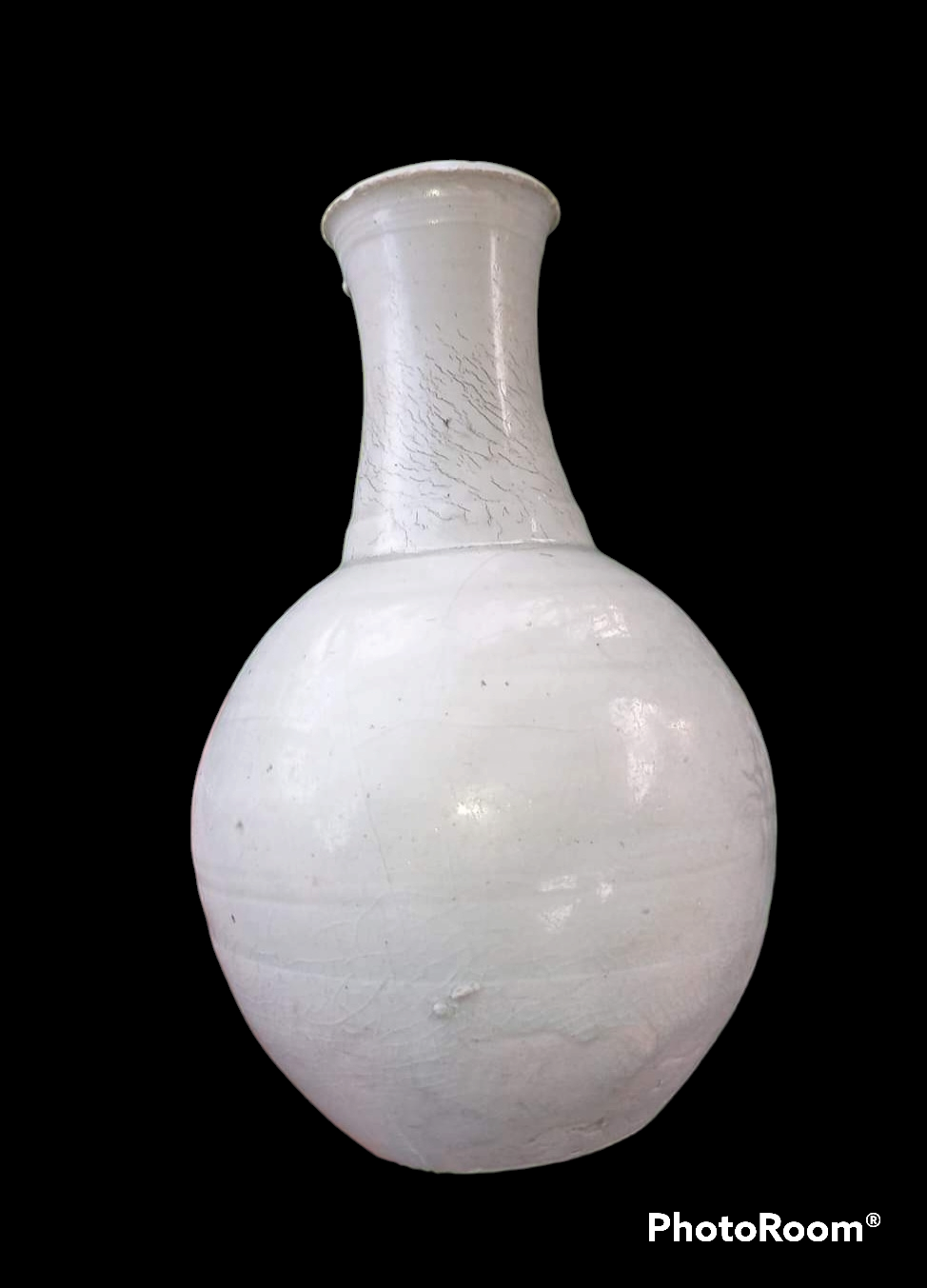 |
|
| Early Southern Song Dehua qingbai vase. A significant numbers were recovered from the Jepara wreck which can be dated to 1130- 1150 A.D | |
 |
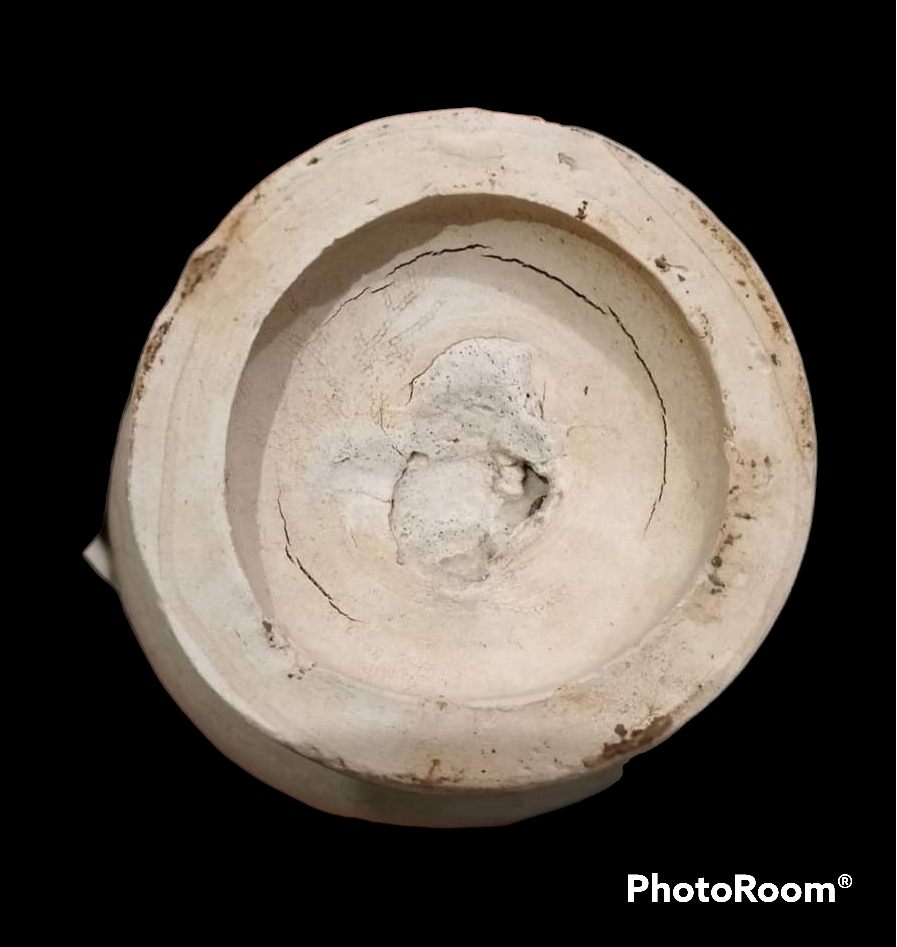 |
| Beautiful Early Southern Song Dehua big vase with carved Decoration | |
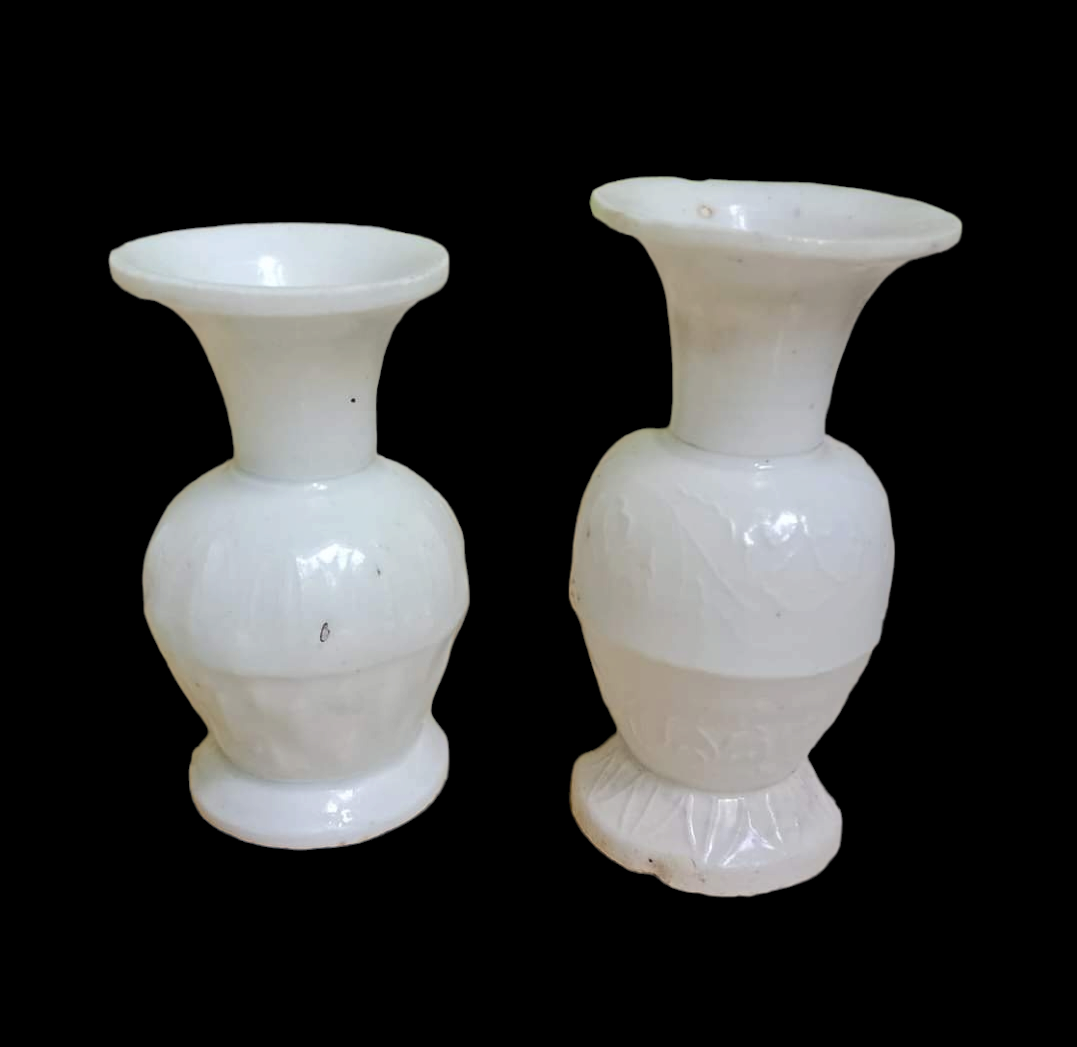 |
|
| Two Southern Song (1150 - 1200 A.D) Dehua small whitisih glaze vases with impressed decoration. | |
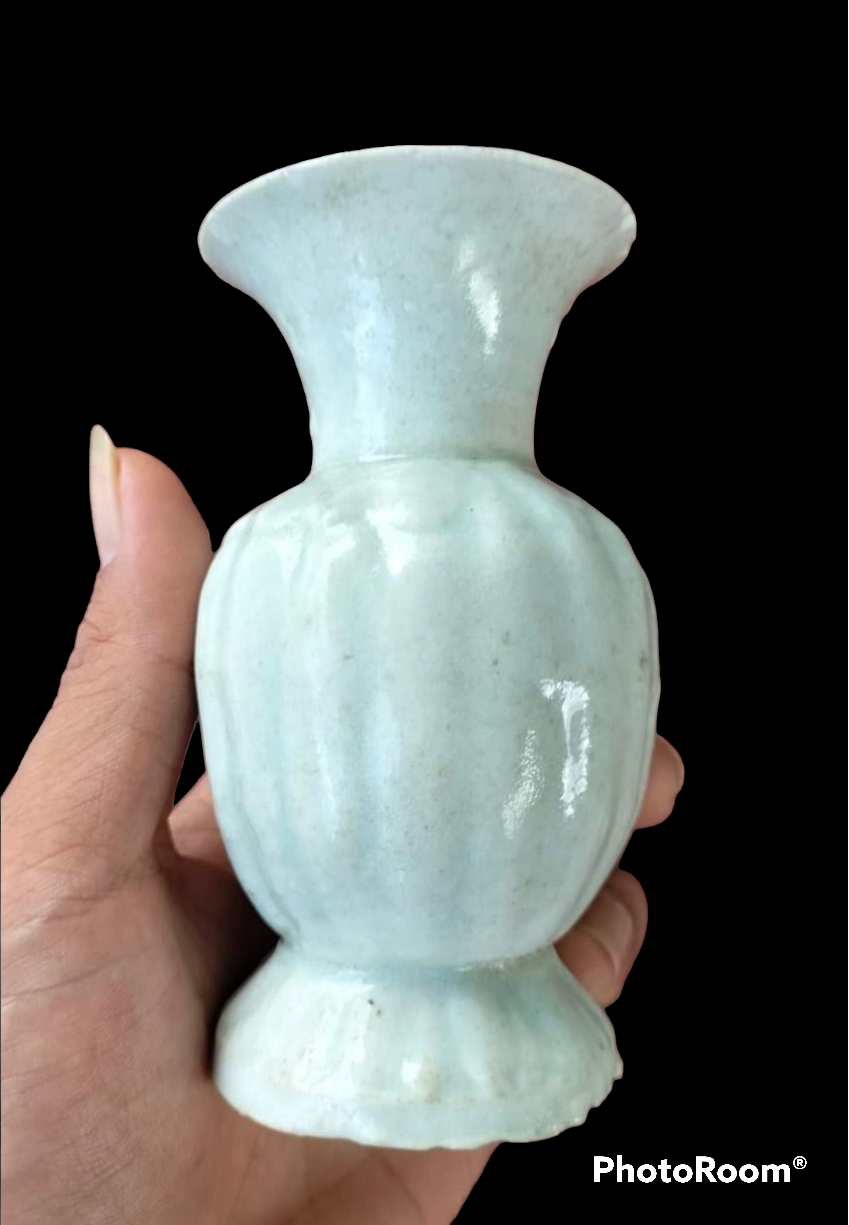 |
|
| Southern Song Dehua qingbai small vase | |
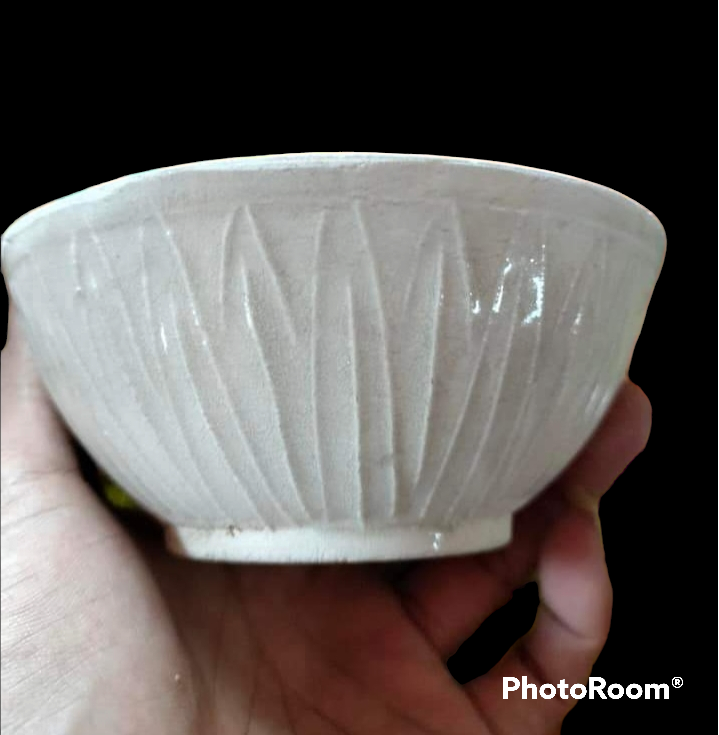 |
.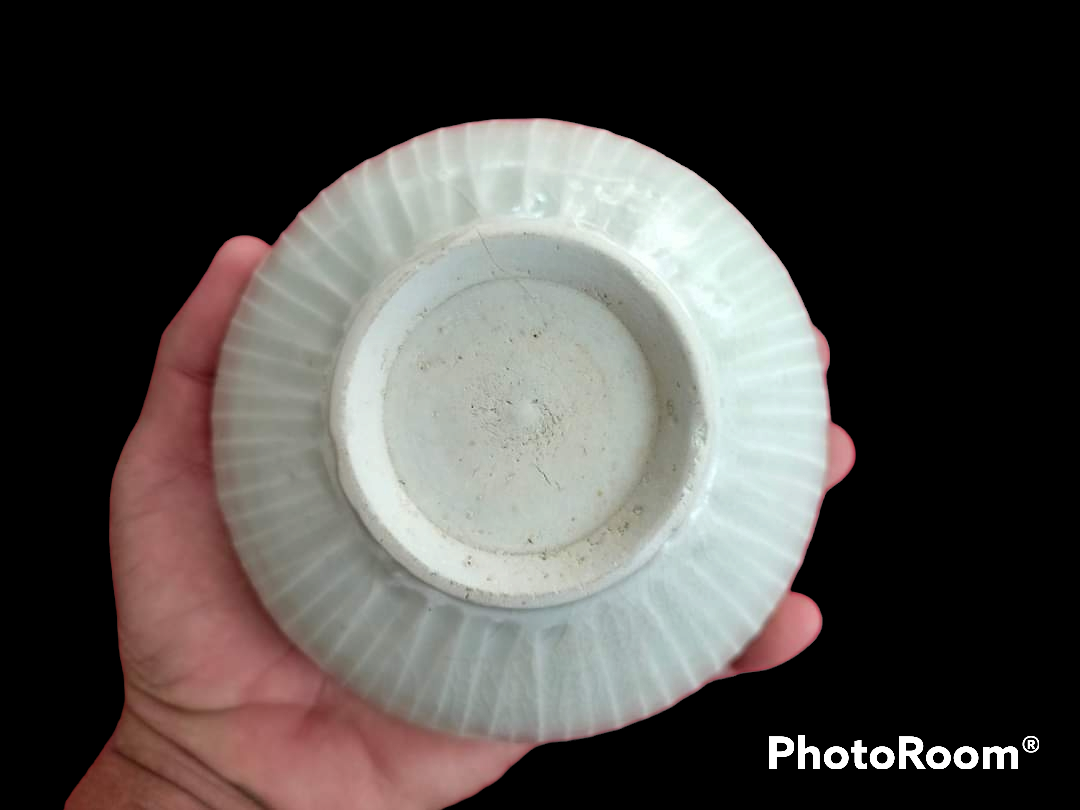 |
| Early Yuan washer form dish with impressed elongated lotus leaves decoration | |
 |
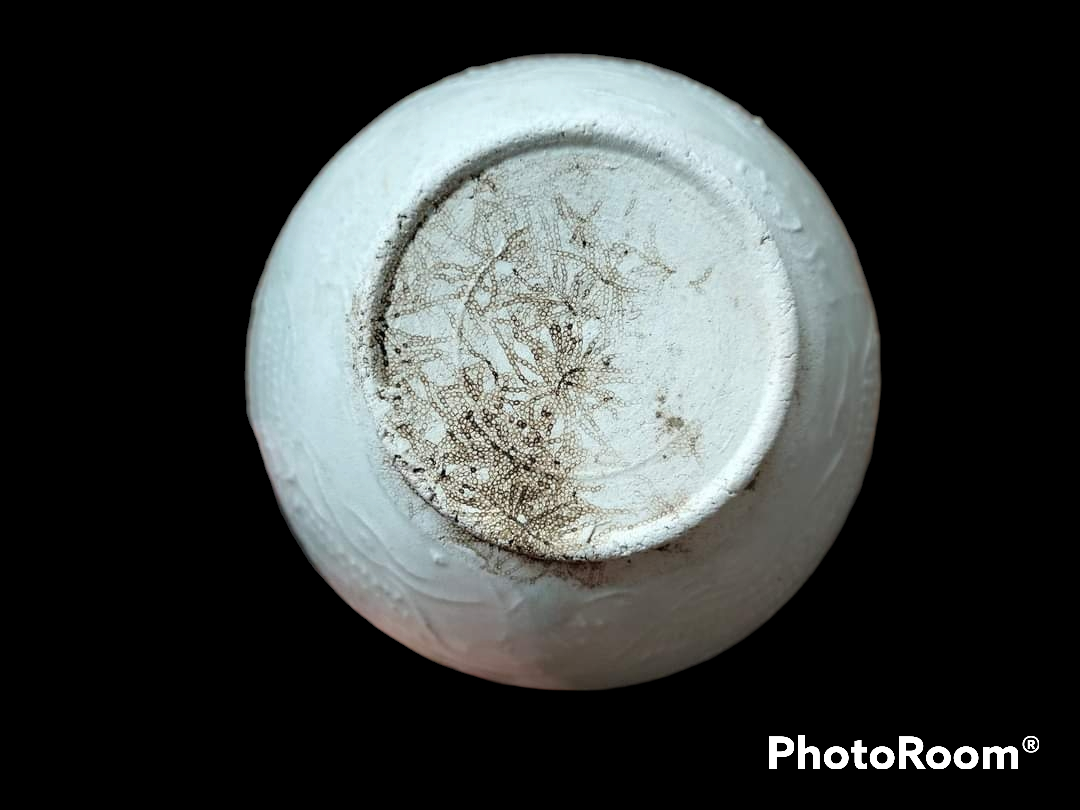 |
| Early Yuan Dehua washer form dish with impressed wild goose in flight decoration | |
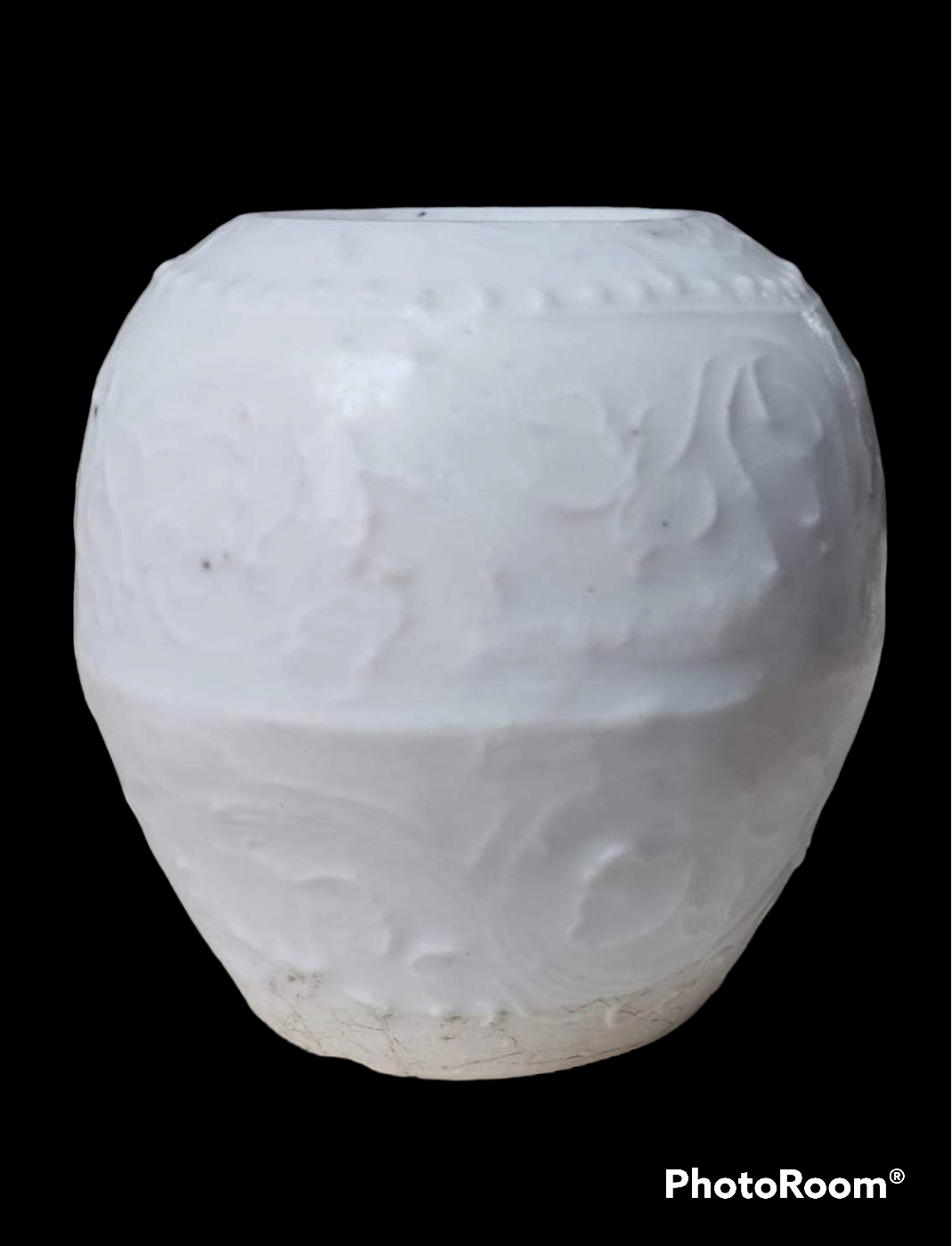 |
|
| Southern Song Dehua white glaze jarlet with impressed floral decoraton | |
Cizao Brownish Green And Lead Green/Amber Glaze Wares
Another Fujian kiln that needs further introduction is Quanzhou Cizao which was an important source for brownish green and lead green/amber glaze wares. Technically, the brownish green glaze shared much similarity to those from Guangdong Xicun. It also produced a category of brownish green glaze wares with iron-brown painted decoration which Xicun was famous for. In the Northern Song Flying fish wreck, there were some Cizao brownish green glaze ewers and jars and basins with iron-brown painted fish decoration.
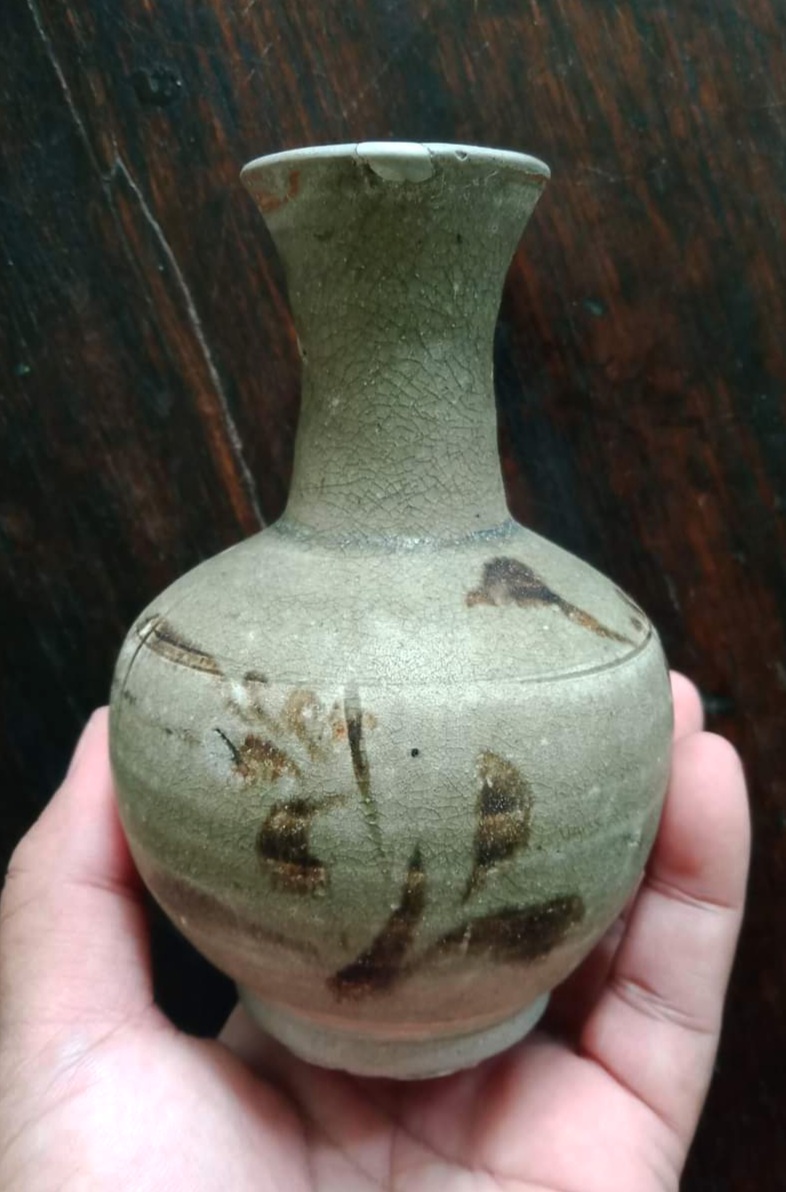 |
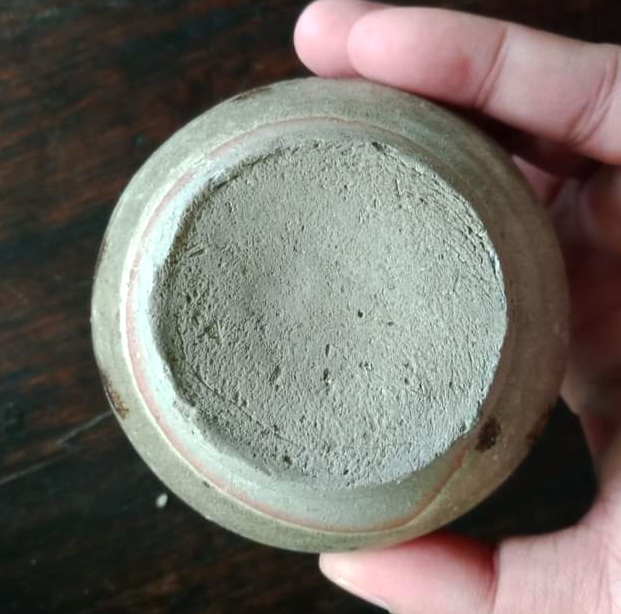 |
|
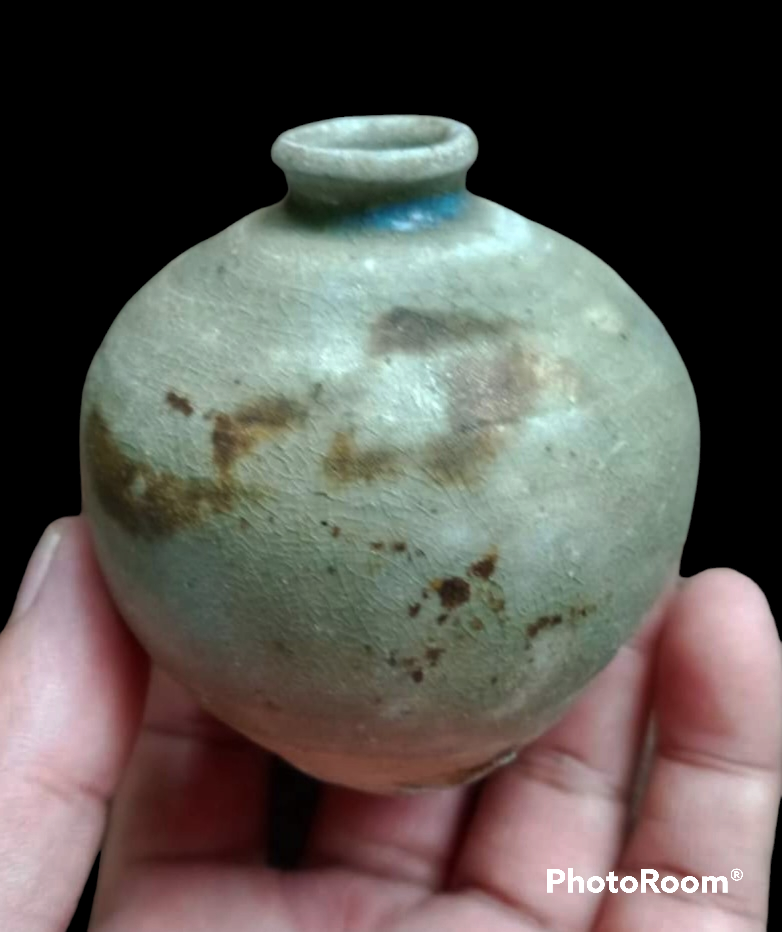 |
 |
|
| Southern Song Cizao small vase and jarlet with iron-brown decoration. Similar types were found in Southern Song Breaker Shoal wreck. | ||
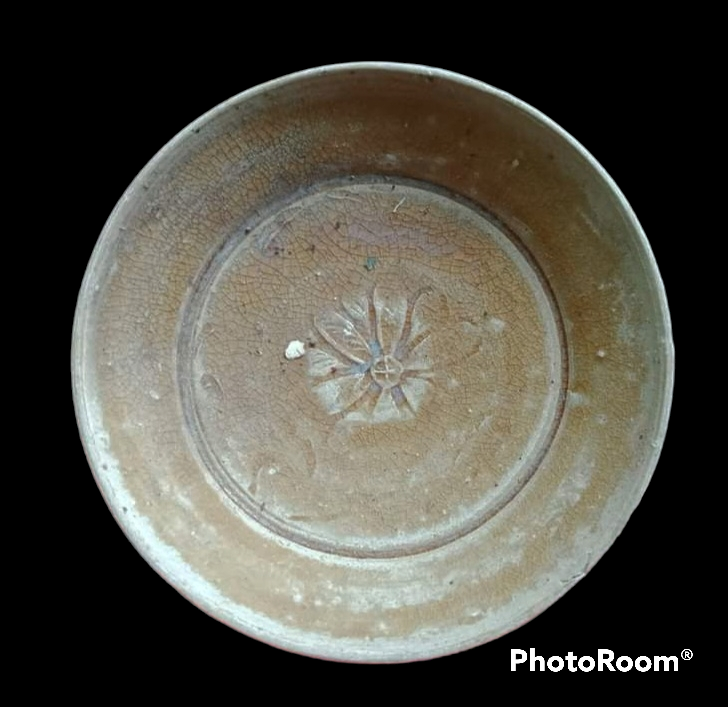 |
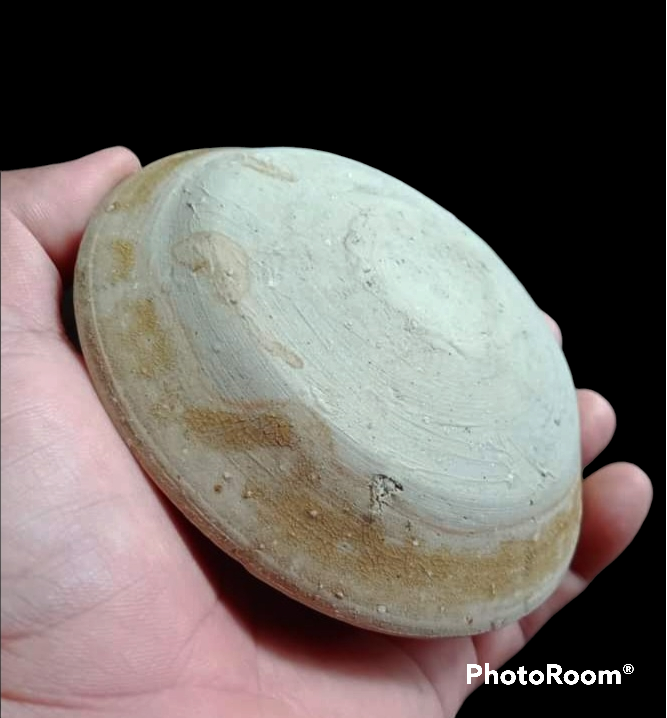 |
|
| Southern Song Yellowish Glaze dish with impressed floral decoration. Similar type was found in Quanzhou Cizao Zhi Zhu Shan kiln (泉州磁灶蜘蛛山窑). Similar type of dishes were also salvaged from the Breaker Shoal wreck. | ||
 |
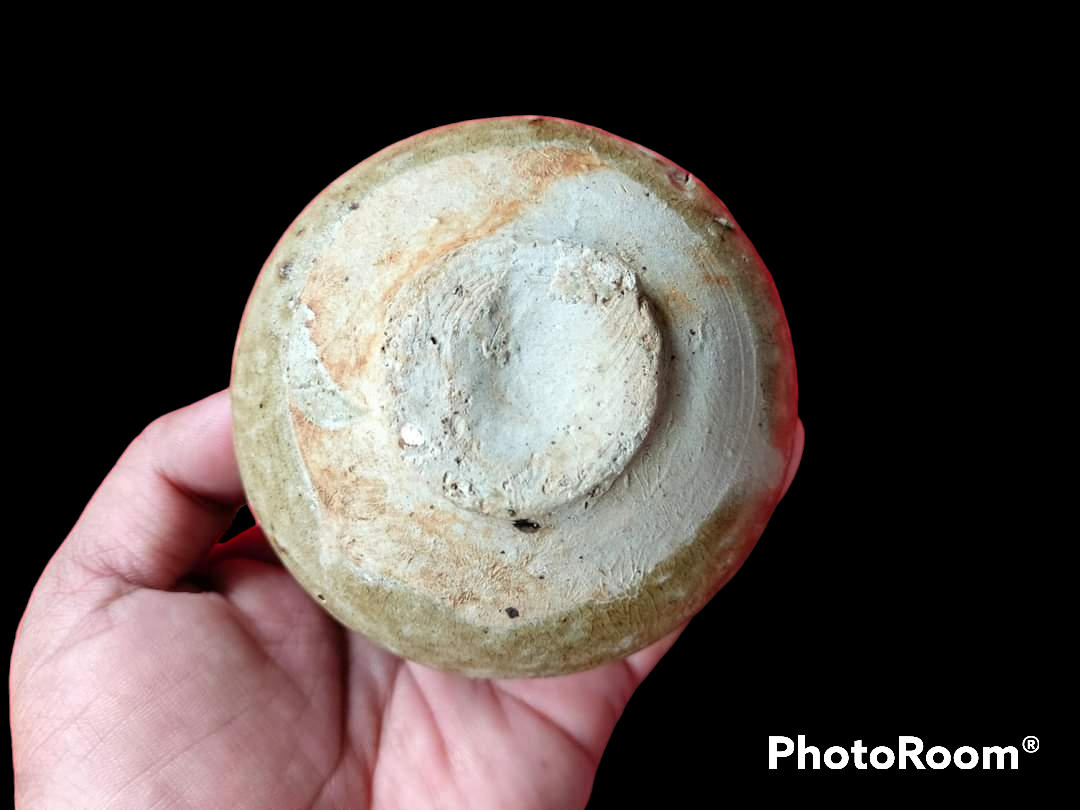 |
|
| Southern Song Cizao kiln Yellowish green pot | ||
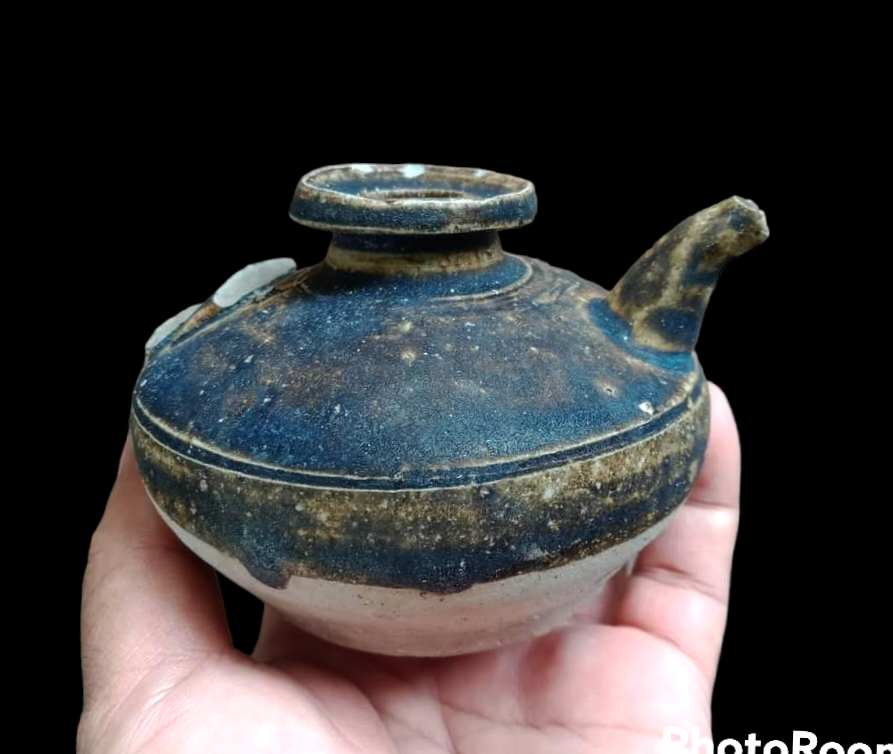 |
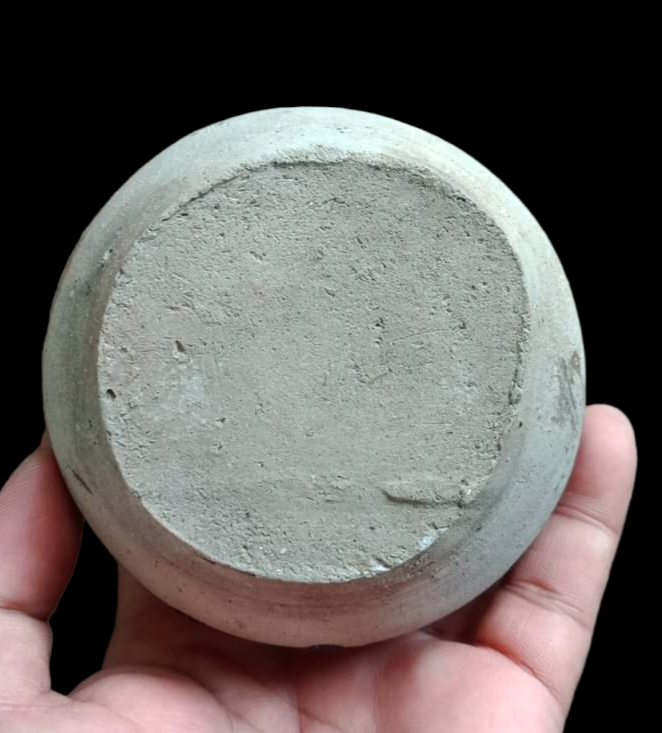 |
|
| Late Northern Song Cizao kiln darkish brown glaze ewer with missing handle. Similar vessel were salvaged from the Sabah Flying Fish wreck. | ||
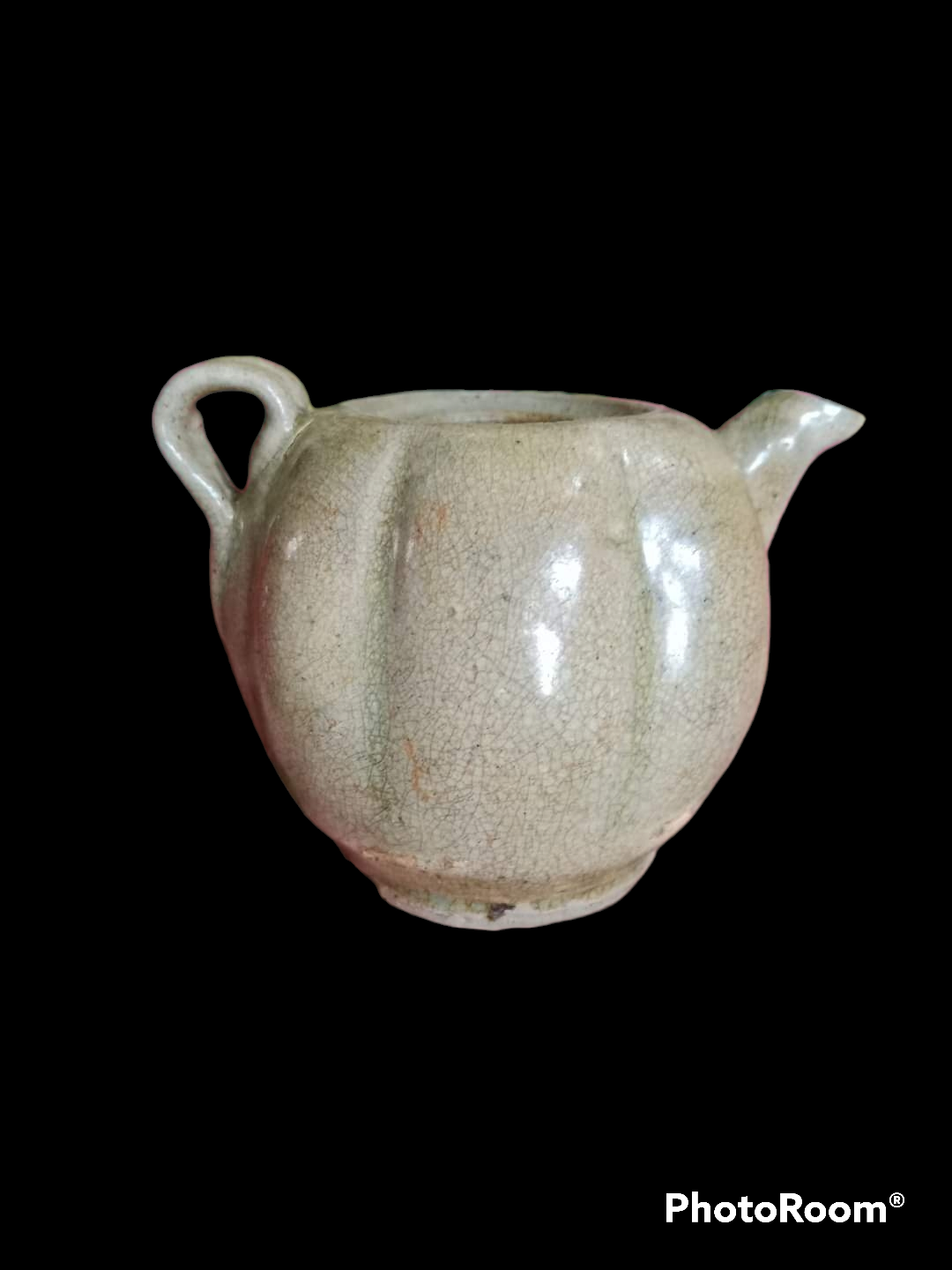 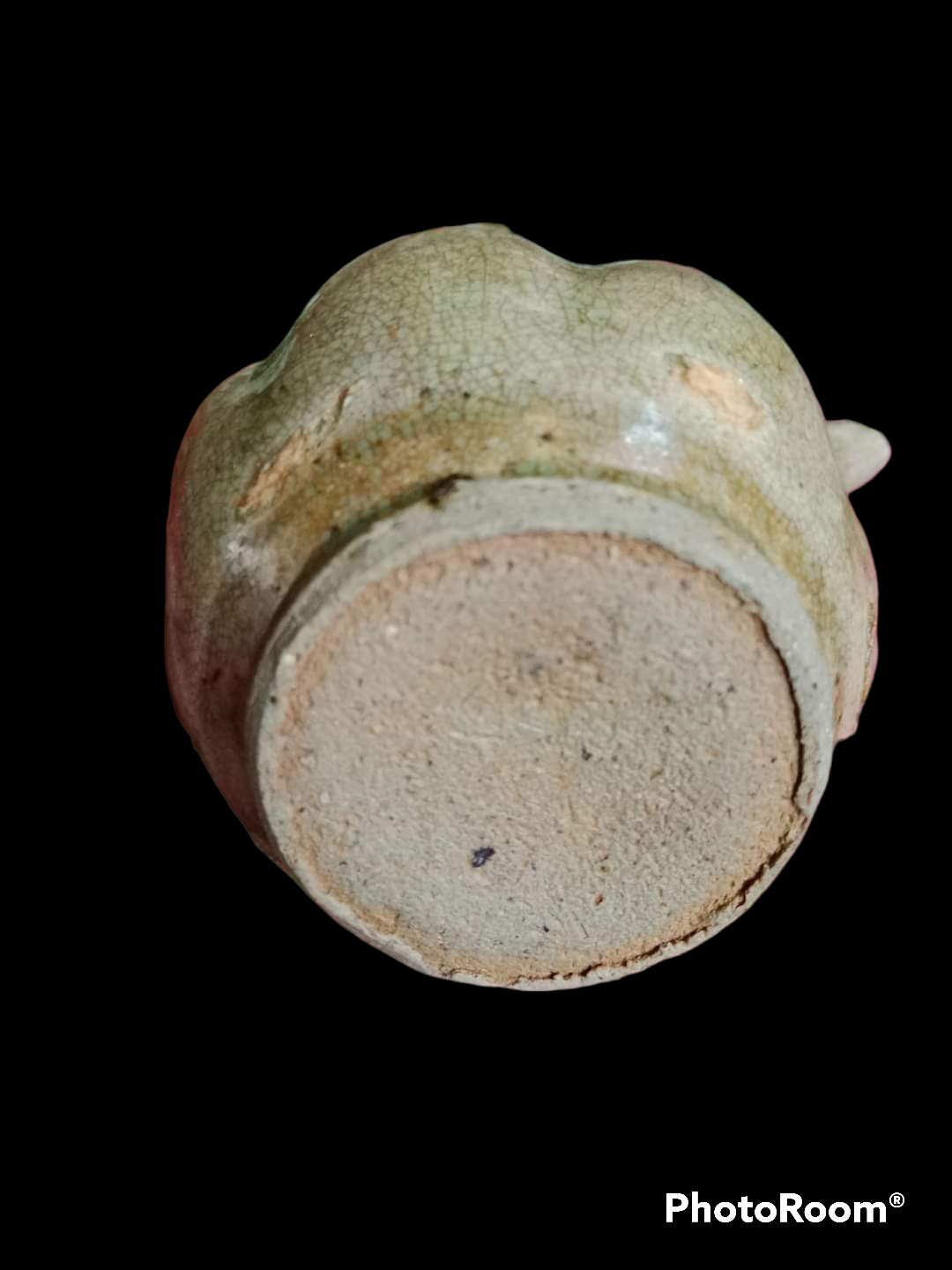 |
||
| This Longquan inspired melon shape green glaze ewer is likely from the Fujian Cizao kiln and dated to the early Yuan period. A comparable example from the Cizao Tu Wei An kiln (磁灶土尾庵窑) was published in the Excavation report on Cizao wares. | ||
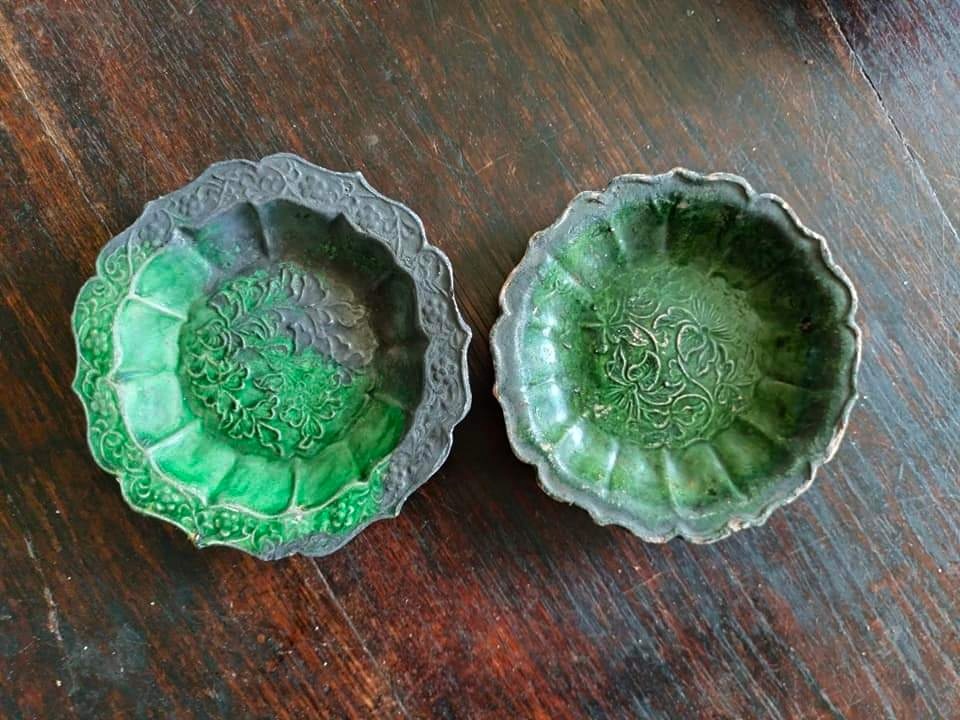 |
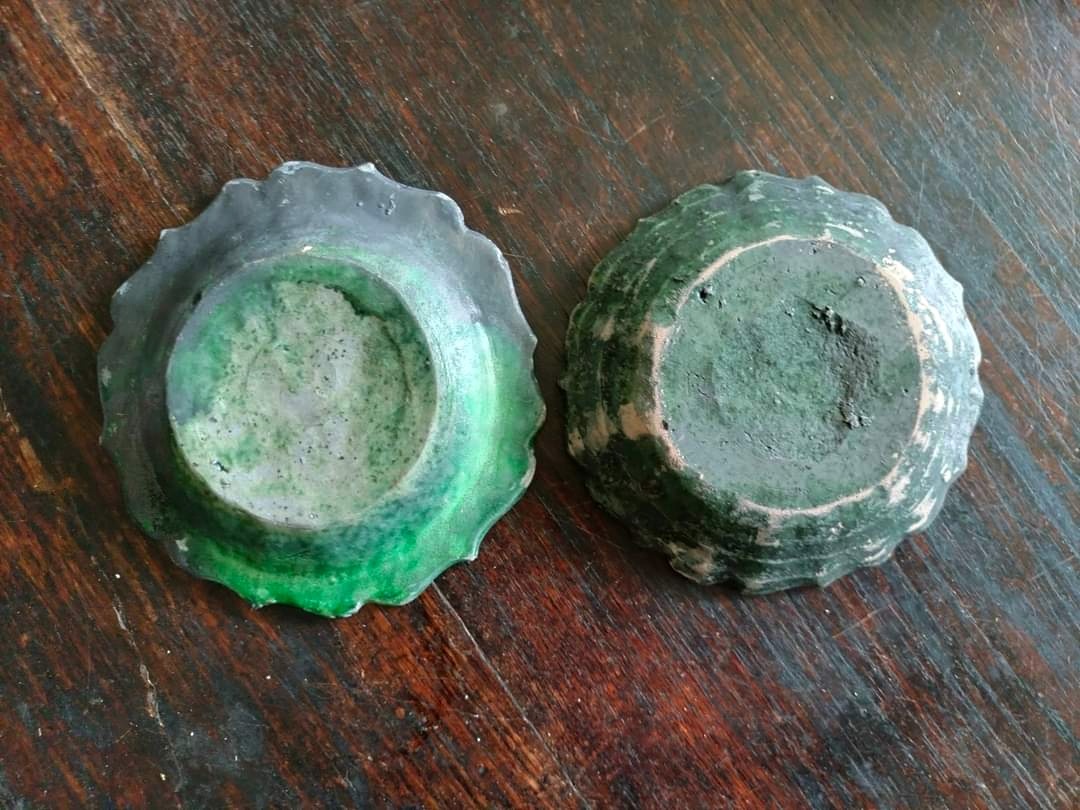 |
|
| Southern Song Cizao green lead glaze dishes with impressed floral decoration. Similar dishes were salvaged from the Nanhai 1 wreck. | ||
 |
 |
|
| Southern Song Cizao ewer with iron-brown decoration under green lead glaze . | ||
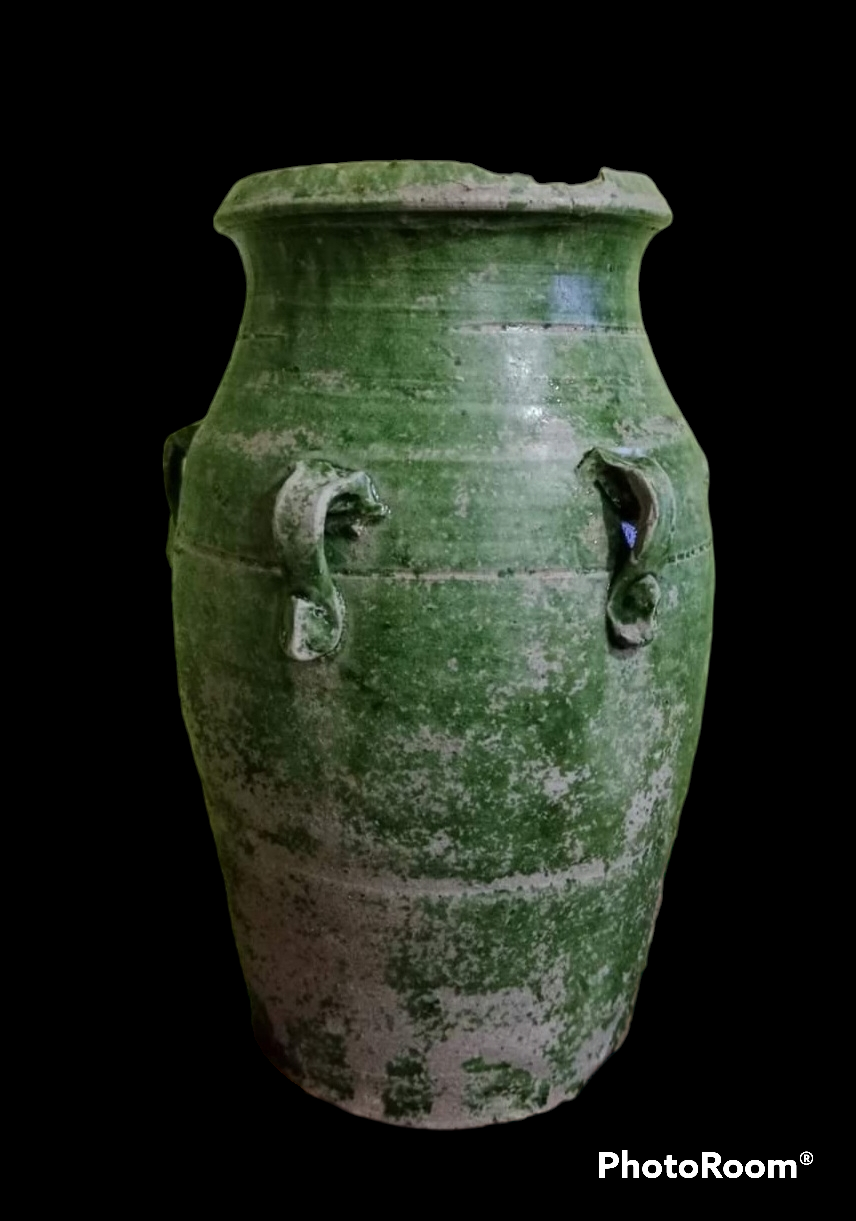 |
||
| Southern Song Cizao jar with green lead glaze | ||
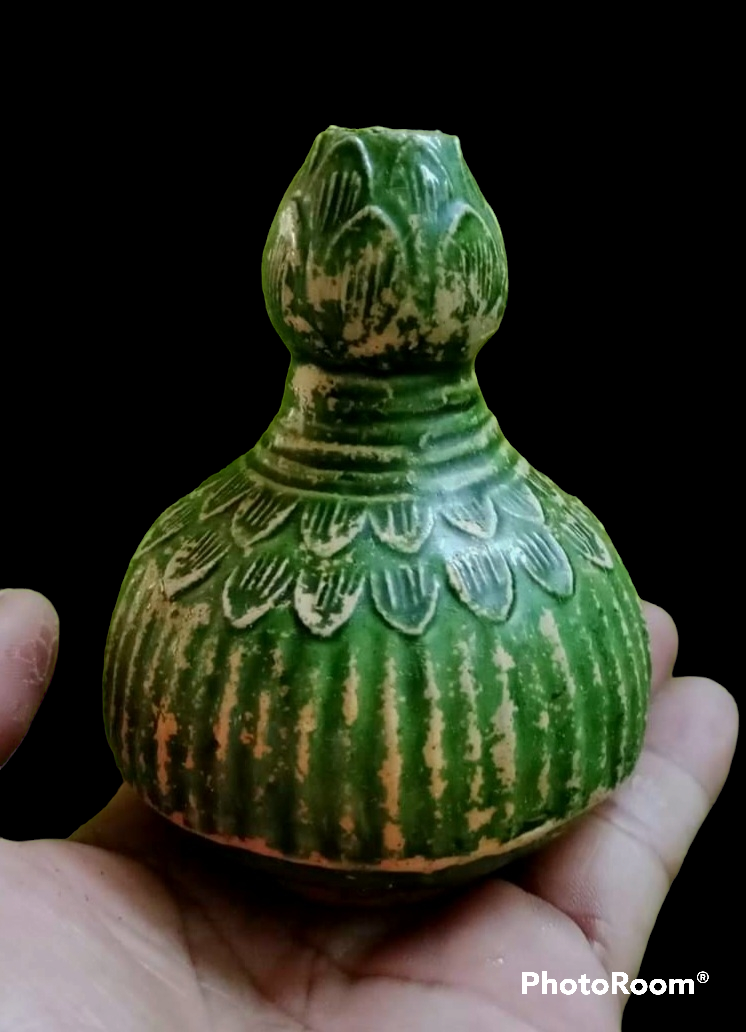 |
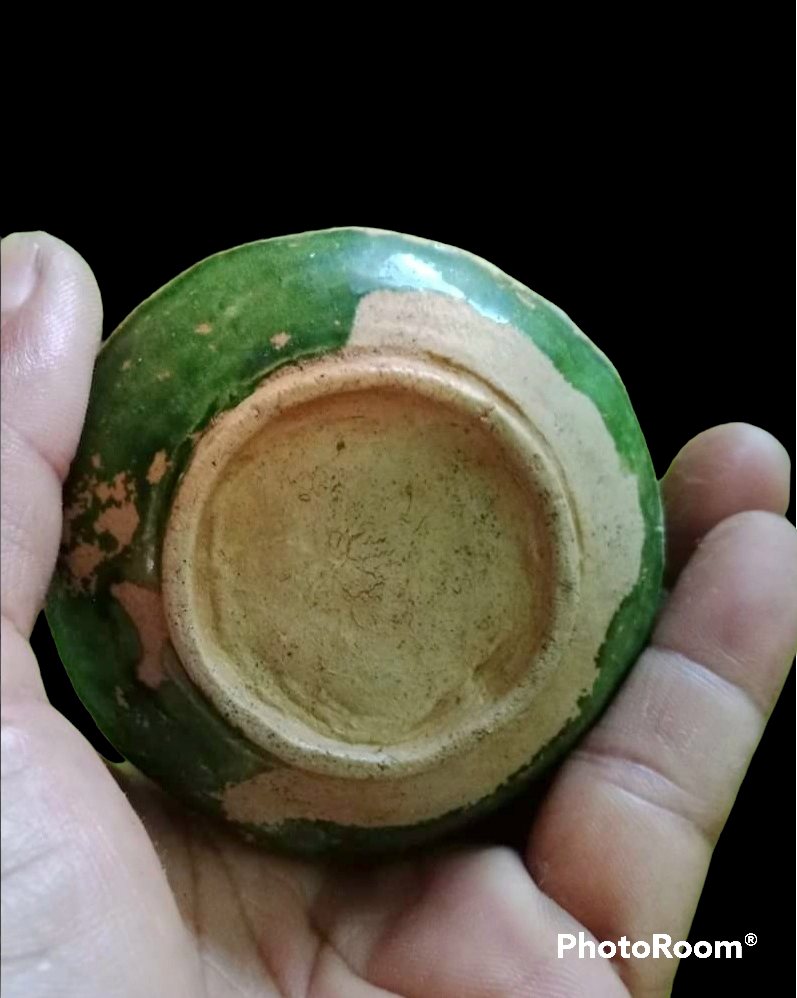 |
|
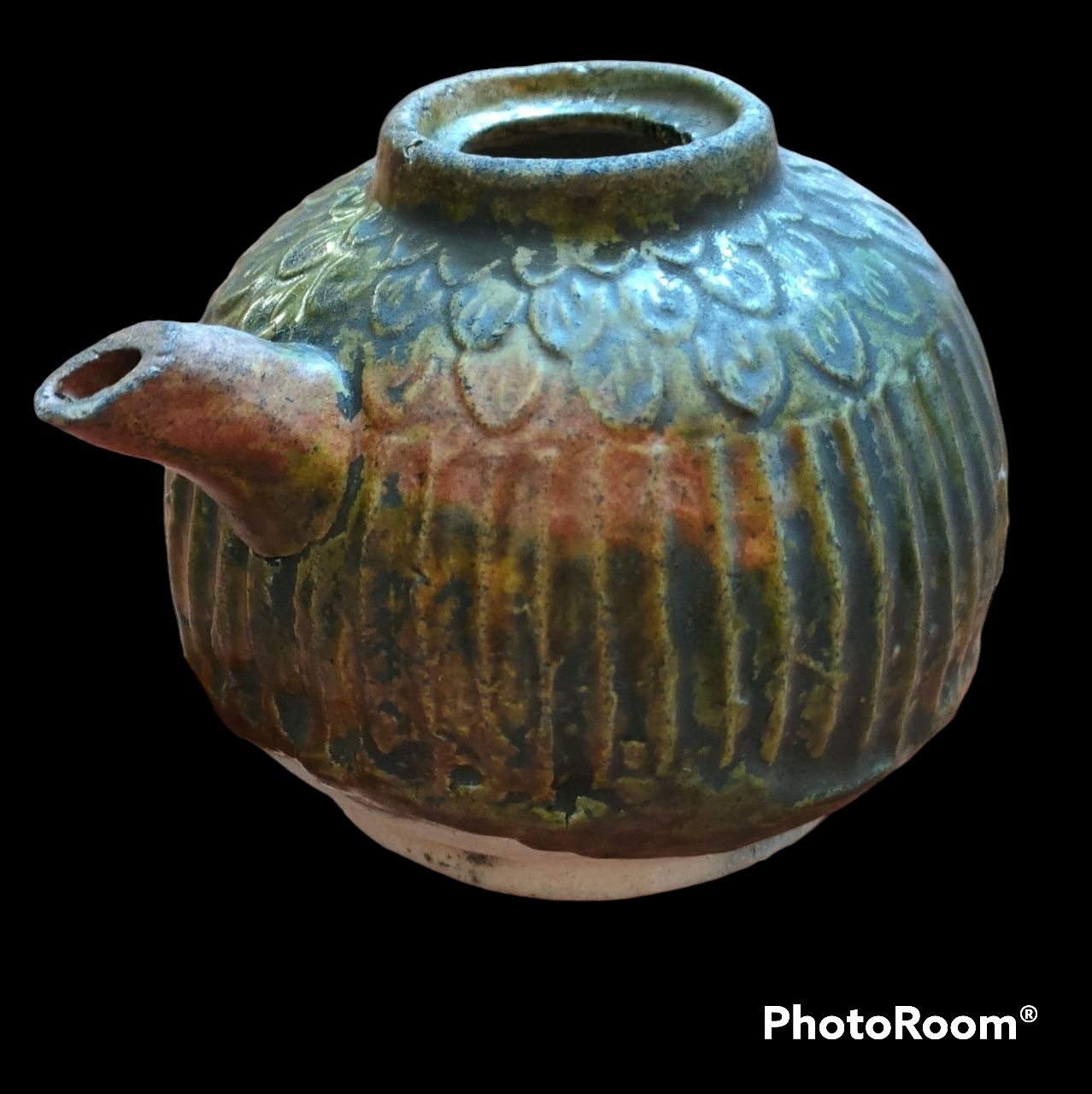 |
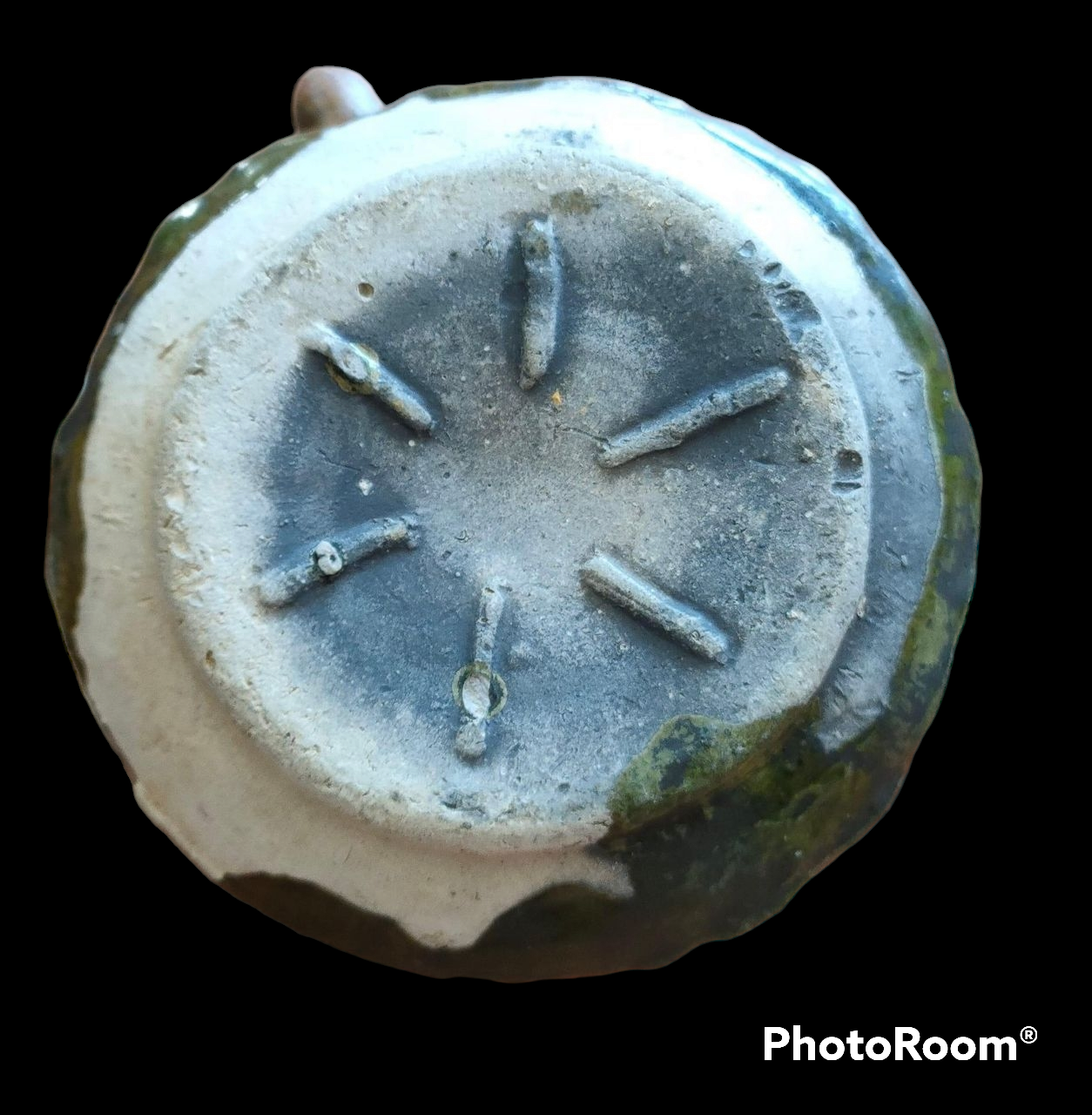 |
|
| Above two Cizao lead glaze small gourd shape vase and water dropper are likely dated to late Southern Song period. Similar type of water dropper was found in Quanzhou Cizao Zhi Zhu Shan kiln (泉州磁灶蜘蛛山窑). | ||
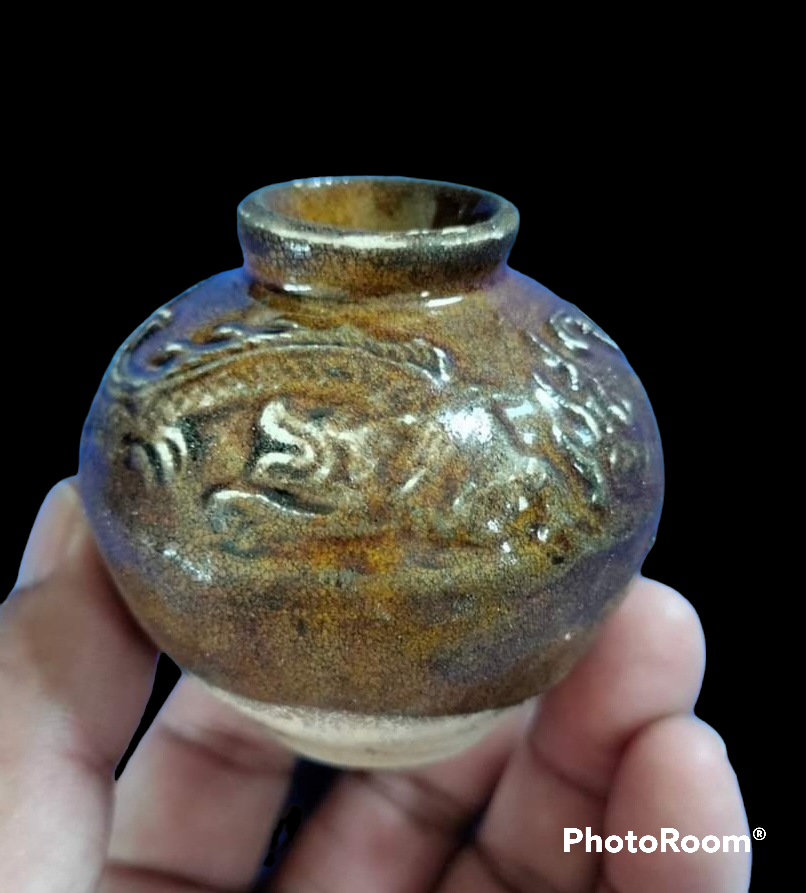 |
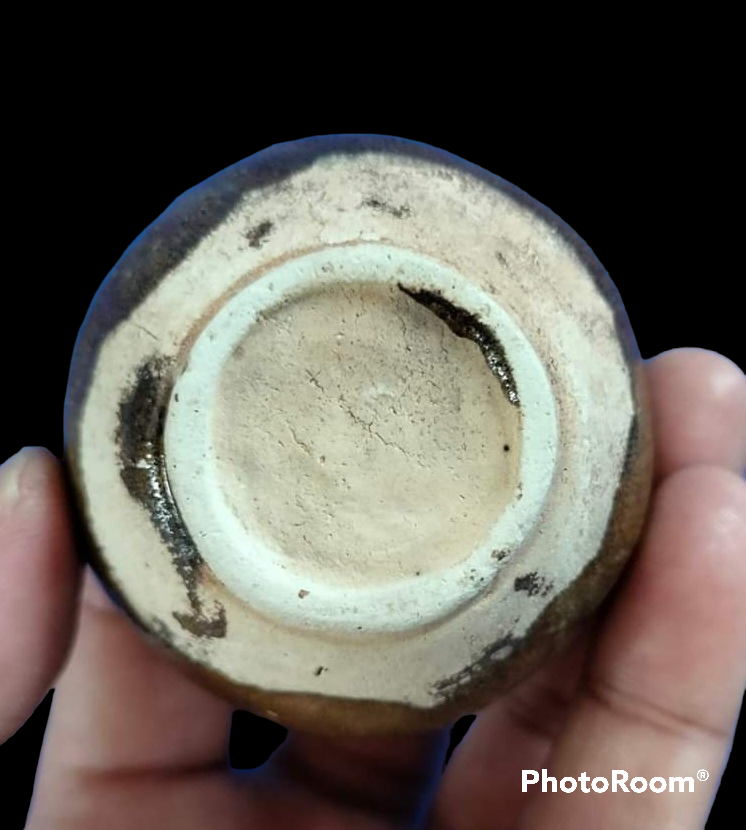 |
|
 |
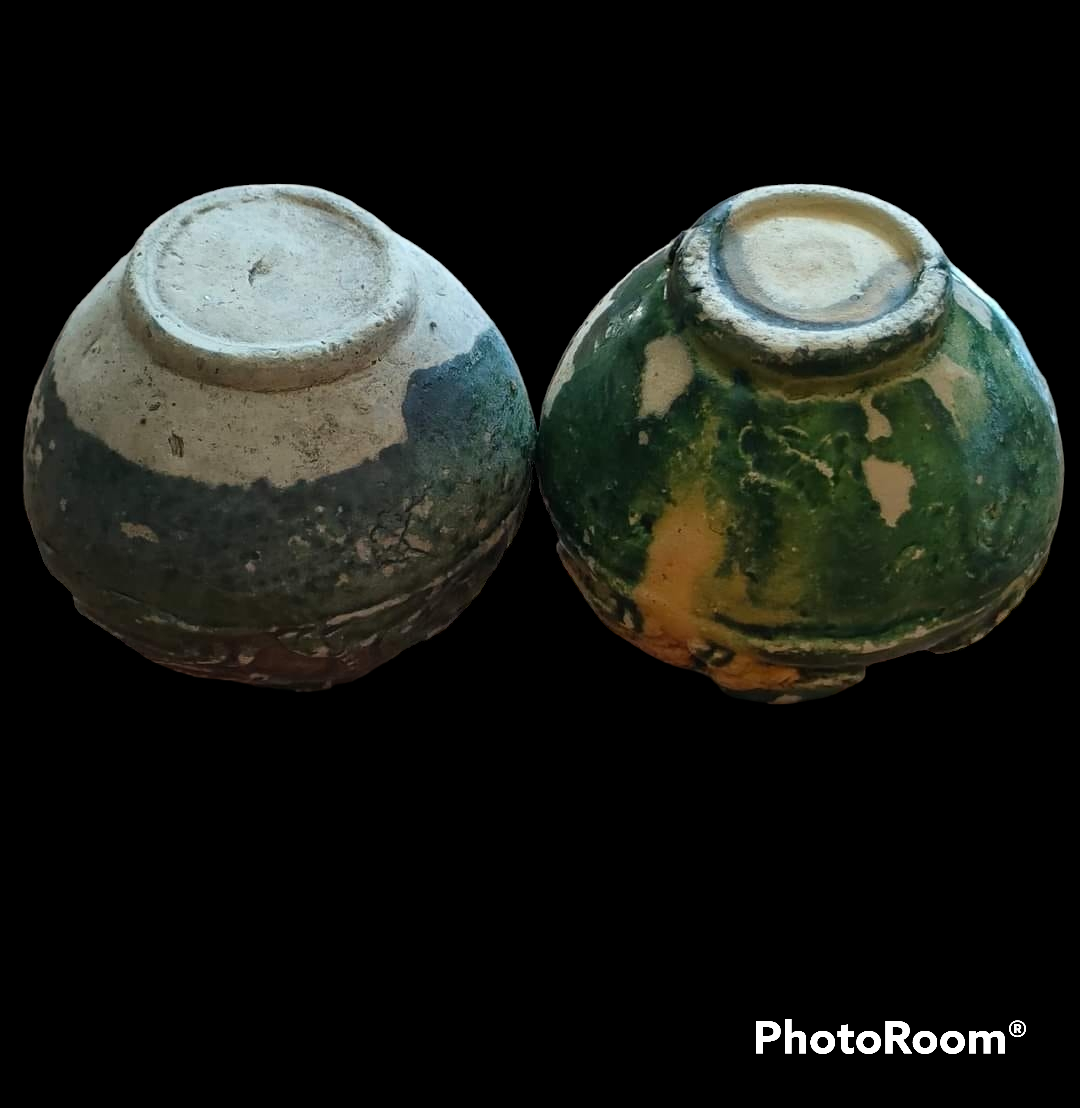 |
|
| Cizao lead glaze jarlets with moulded dragon decoration. Likely dated late Southern Song/Early Yuan period. I have seen a fragment found in Singapore Fort Canning which is firmly within the Yuan context. A number of biscuit jarlet fragments were found in Cizao Tu Wei An kiln (磁灶土尾庵窑) and published in the Excavation report on Cizao ware | ||
More recent archaeological excavations in China have revealed that besides Cizao, Northern Fujian Wu YisShan, Nanping Chayang and Fuqing kilns also produced lead glaze wares with iron-black/black painted decoration There were also those with moulded decoration with ground in black and further cover with green/amber glaze. Some of the most interesting examples of this category were found in Java Sea and Breaker Shoal wrecks.
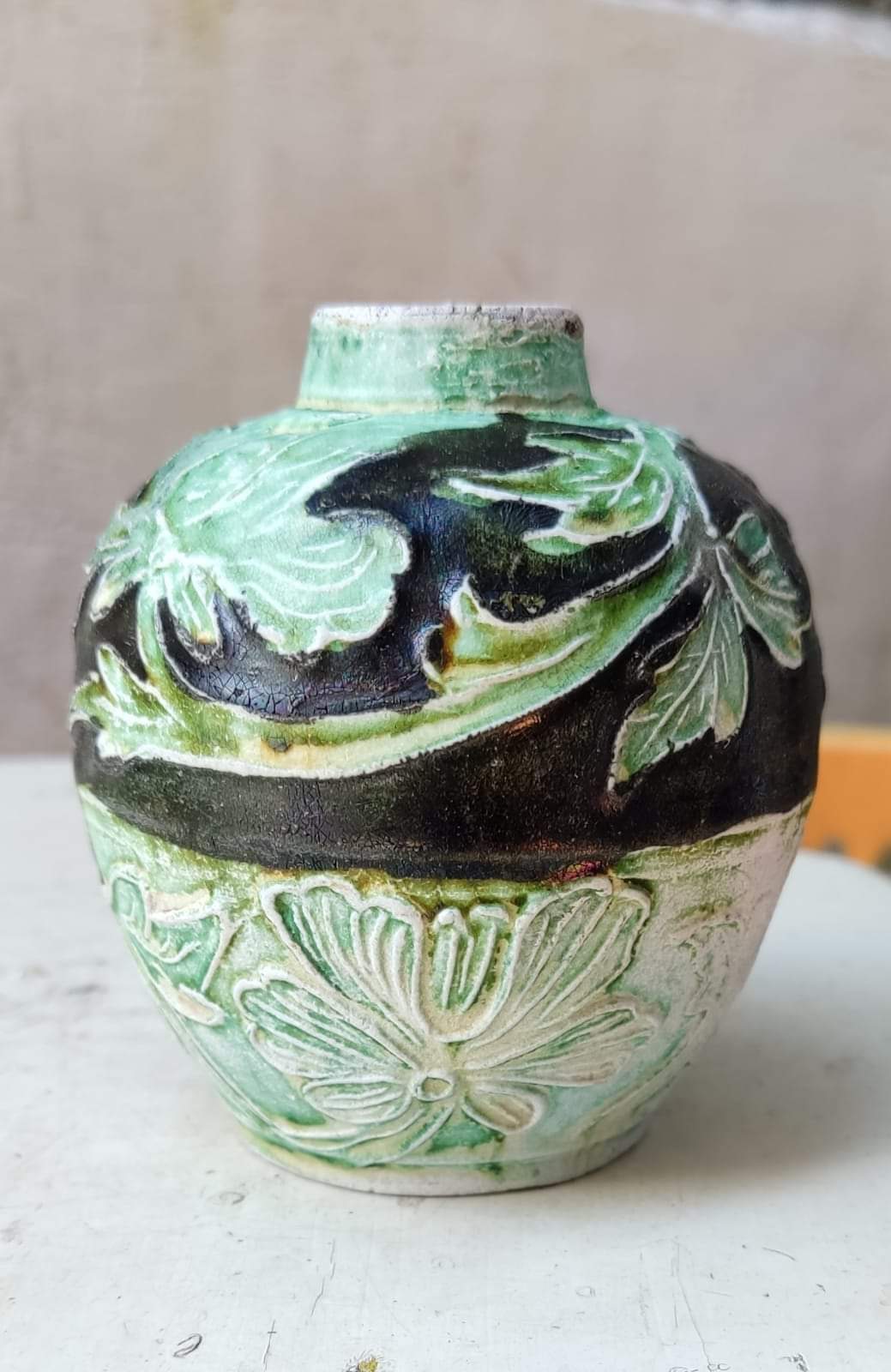 |
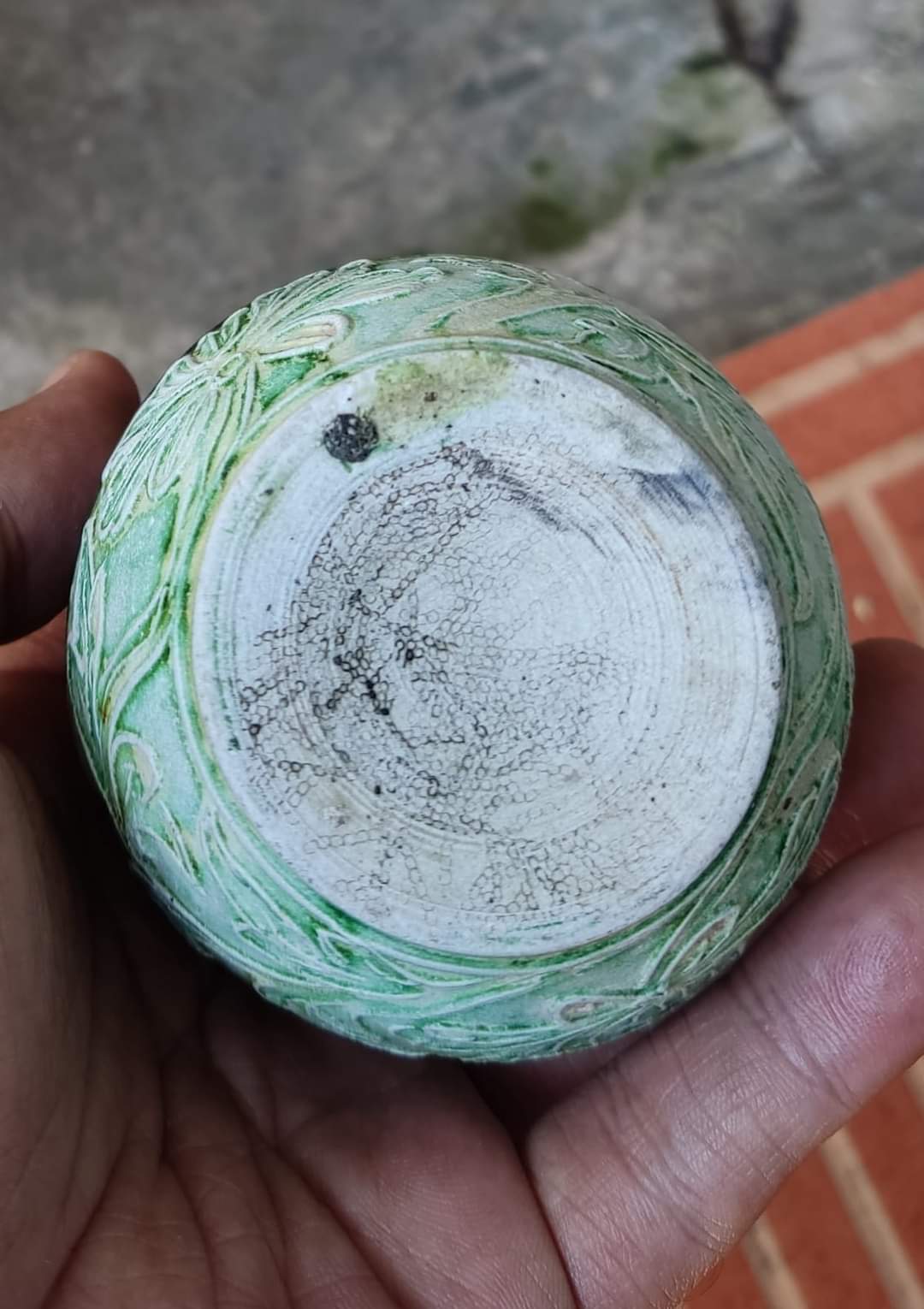 |
| A Southern Song example with moulded floral decoration and ground in black slip. The lead green glaze in this example is badly degraded. | |
 |
|
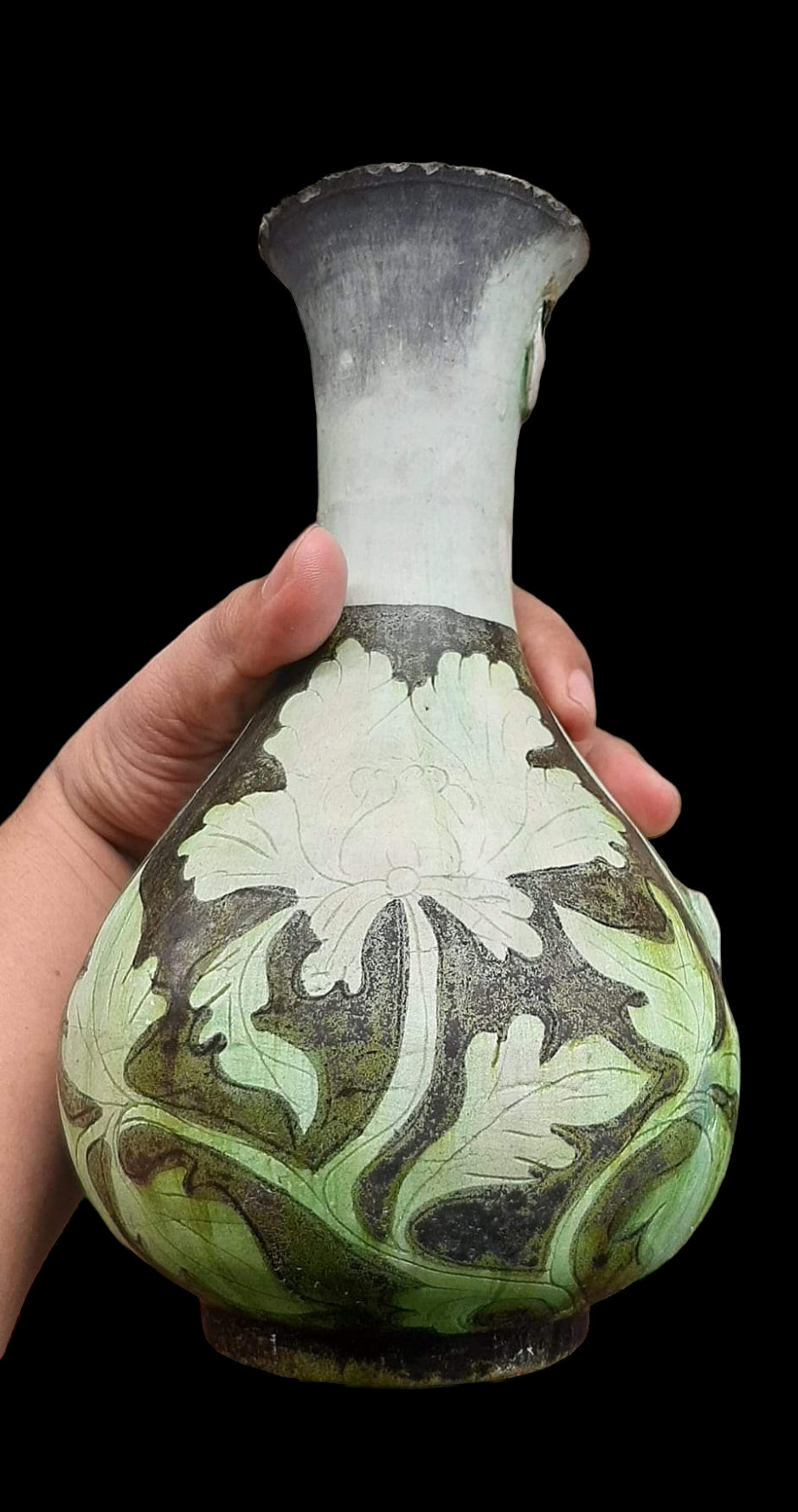 |
|
| Two interesting Southern Song vessels with carved floral decoration. Likely products of Fujian Fuqing kiln. | |
From the Batang Kumpeh, there is a type of darkish brown glaze, some with white glaze rim. Initially, I thought that they may be product of Jiangxi Ganzhou kiln However, somehow the dull glaze with llustre and paste appears to differ from Ganzhou products. Subsequently, while looking through the excavation report of Cizao ware, the mystery is finally resolved. They were products of Cizao Ti Wei An kiln (磁灶土尾庵窑)。
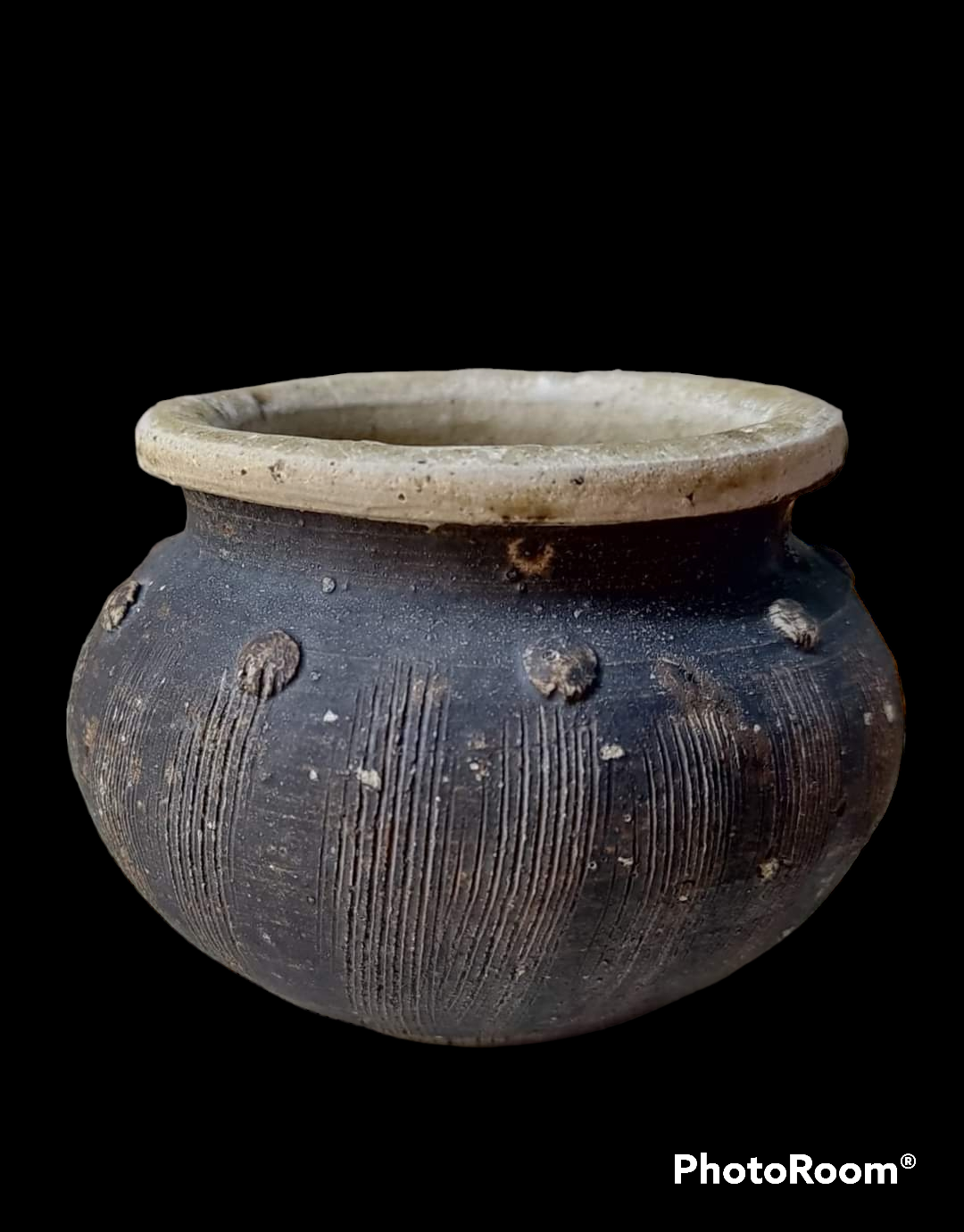 |
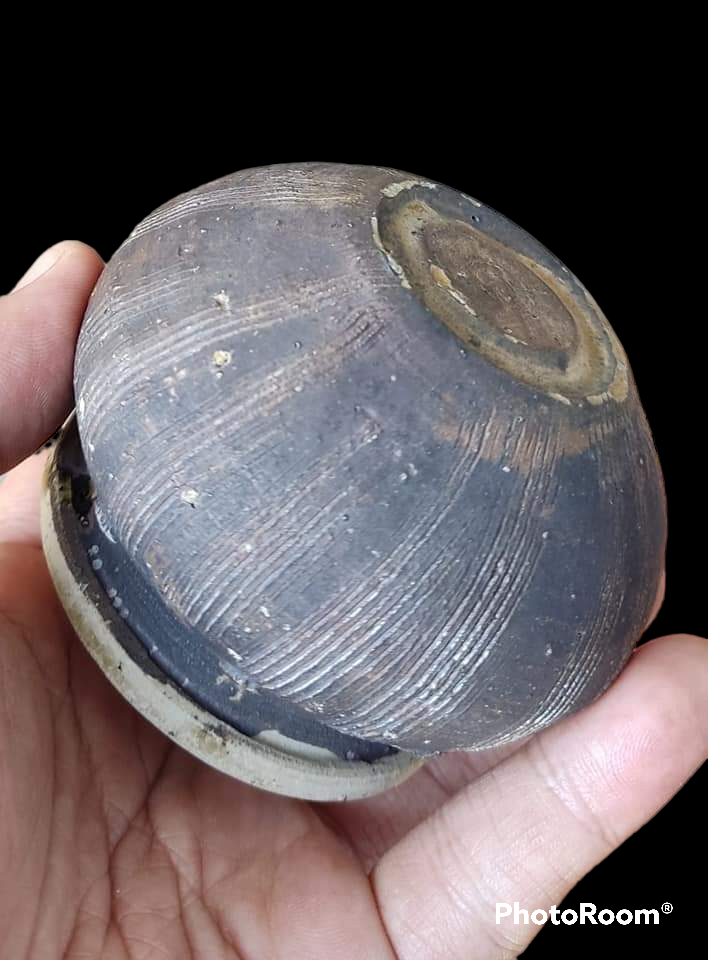 |
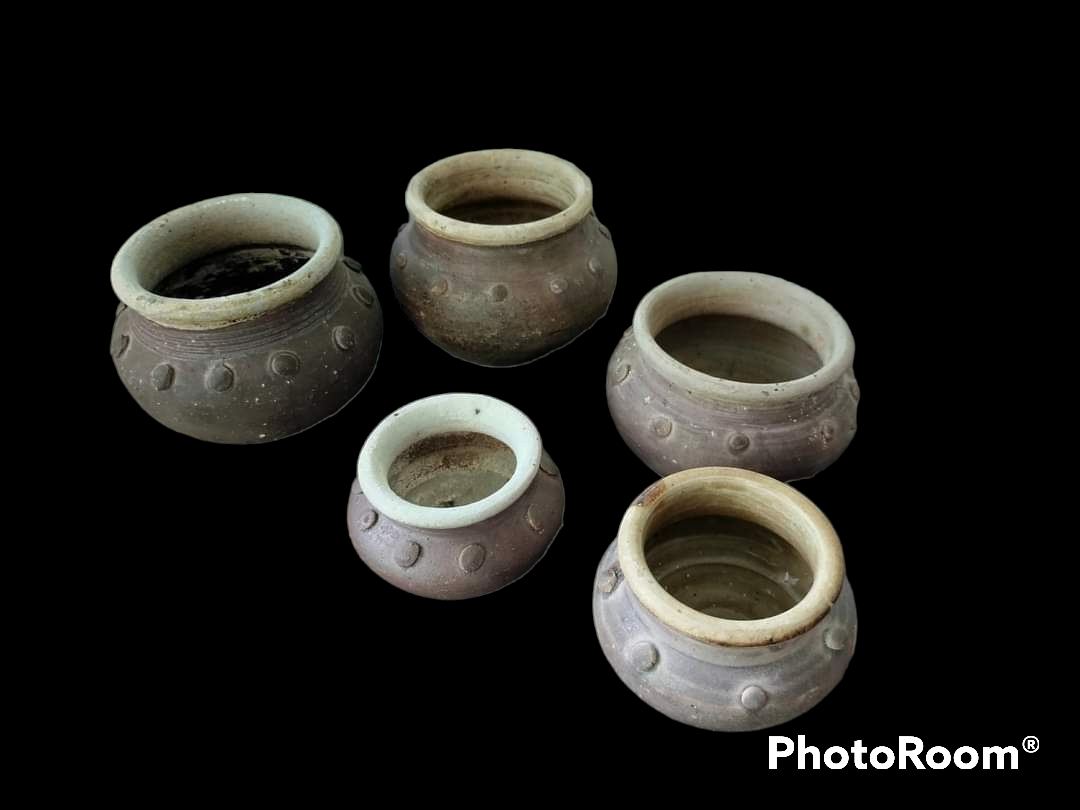 |
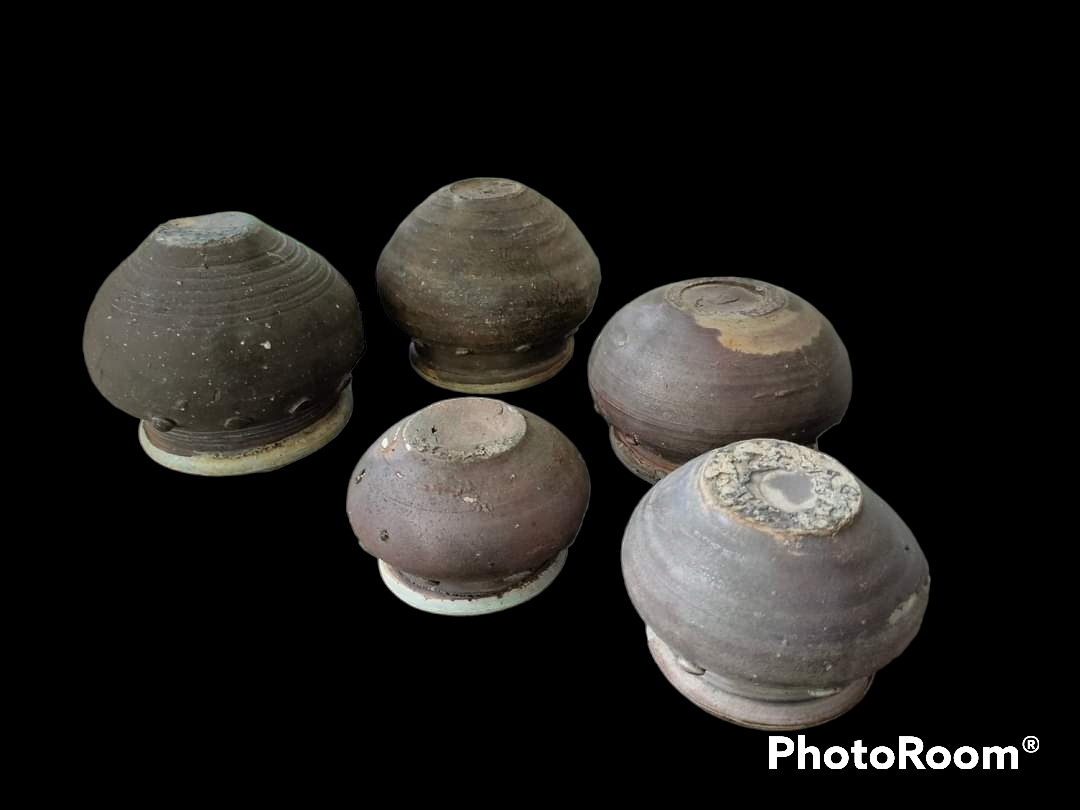 |
| Some examples with dull darkeish brown glaze pot with bands of vertical carved lines on the body. They are products of Cizao Tu Wei An kiln. | |
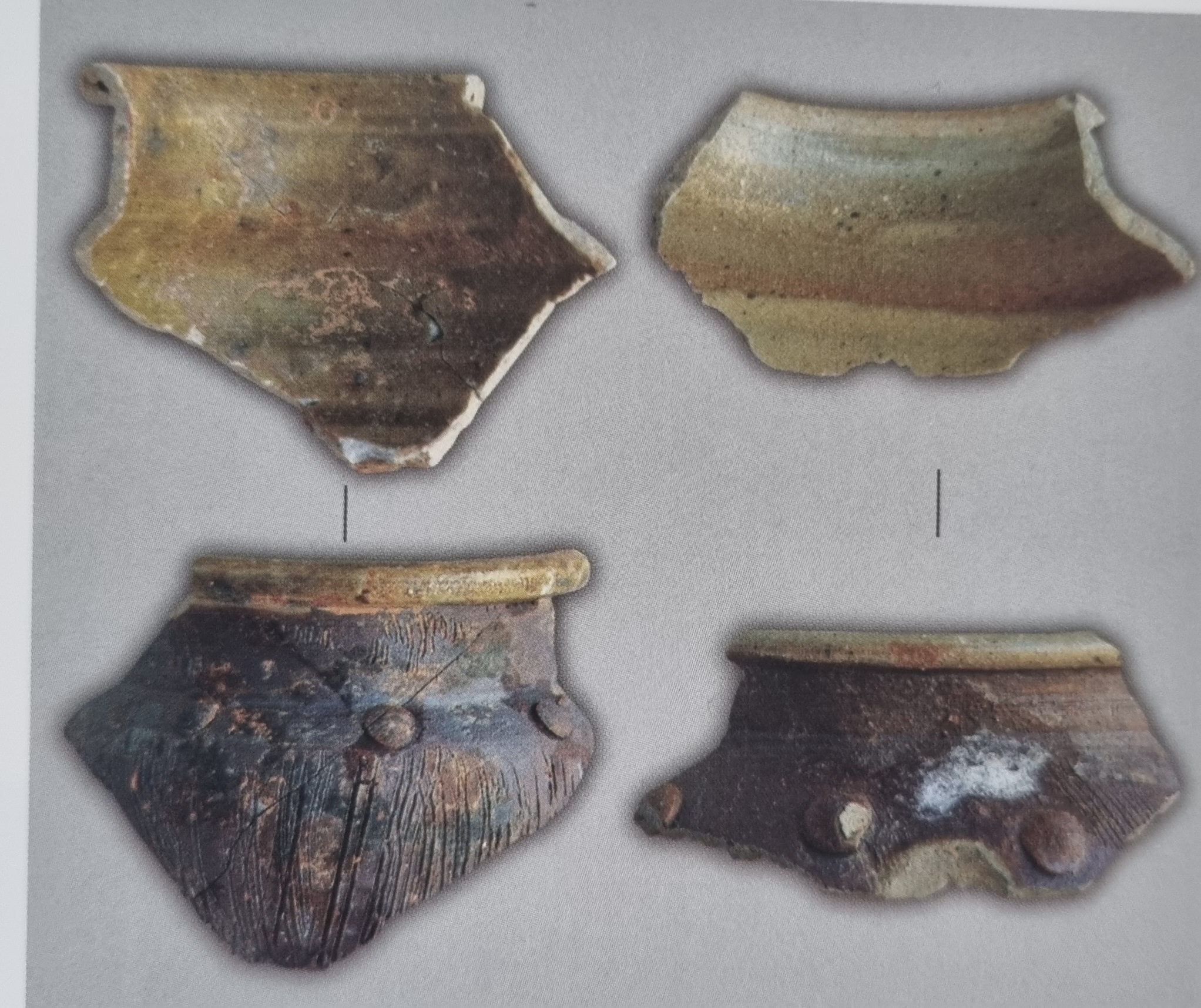 |
|
| Fragments found at Cizo Tu Wei An kiln | |
Fujian Black Temmoku Bowls
Tea competitions became the favourite past time of the rich and poor in many areas in China during the Song period. Due to popular demand, Fujian Jian kilns produced large quantity of tea Temmoku bowls with some of the best sent as tribute ware to the Song Court.. For those common folks who could not afford Jian bowls, they could avail themselves of cheaper version of tea bowls produced in other provinces and numerous other Fujian kilns which catered to export markets. So far, I have yet to come across Jian kiln examples exported to Southeast Asia.
Among the kilns, those from Wuyishan Yulinting (武夷山遇林亭), Nanping Chayang (南平茶洋) and Fuzhou Dongzhang (福州东张) were large in scale and were found in overseas especially Japan.
Wuyishan Yulinting (武夷山遇林亭) produced an interesting form with decoration in gold/silver. In most instances, the decorations have faded and only traces could be seen. The motif includes dragon phoenix, crane, pine, bamboo, prunus, flowers and orchid. There were also those with auspicious wordings or landscape. In some past ceramics publications, such bowls have been erroneously attributed to Jian kiln. Bowls from this kiln have mainly greyish to greyish white paste.
From Batang Kumpeh I have seen some black Temmoku bowls and pleasantly surprised to see two from Wuyishan Yulinting with the gilded auspicious wordings 寿山福海。
 |
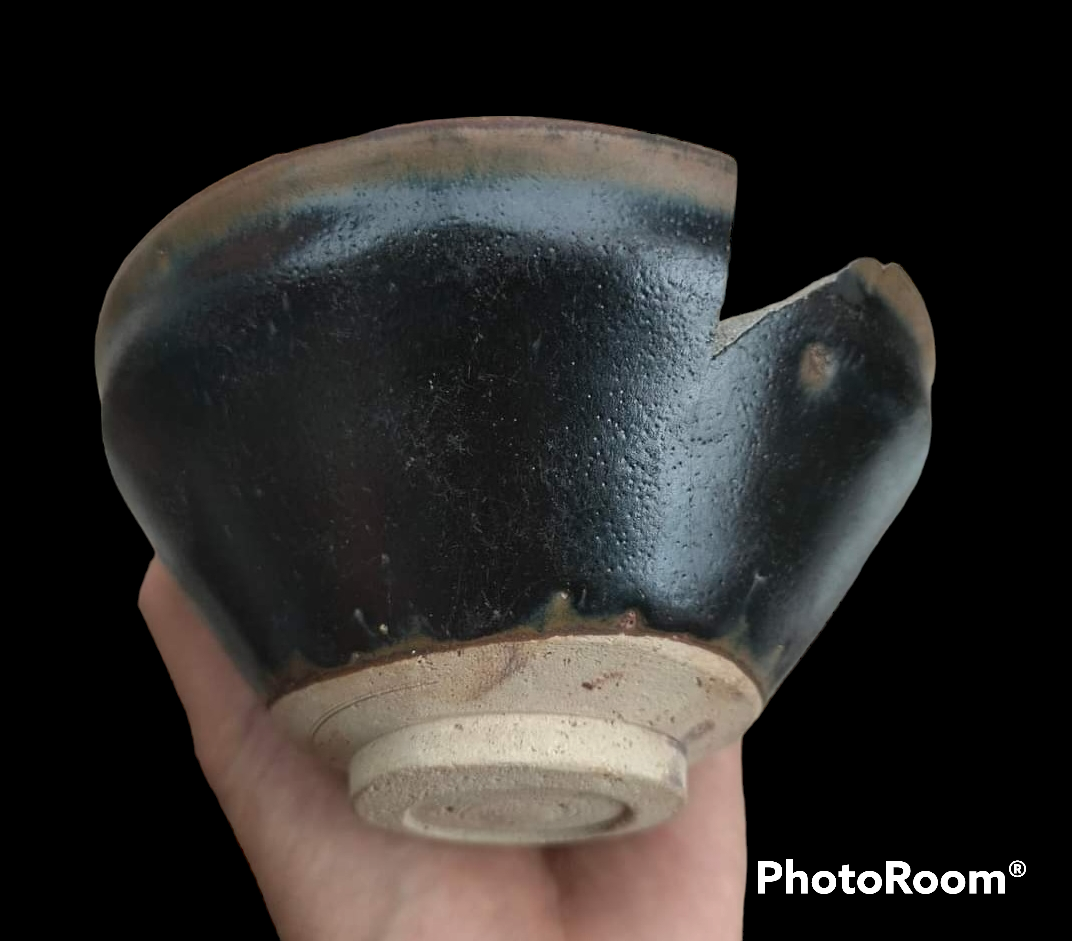 |
 |
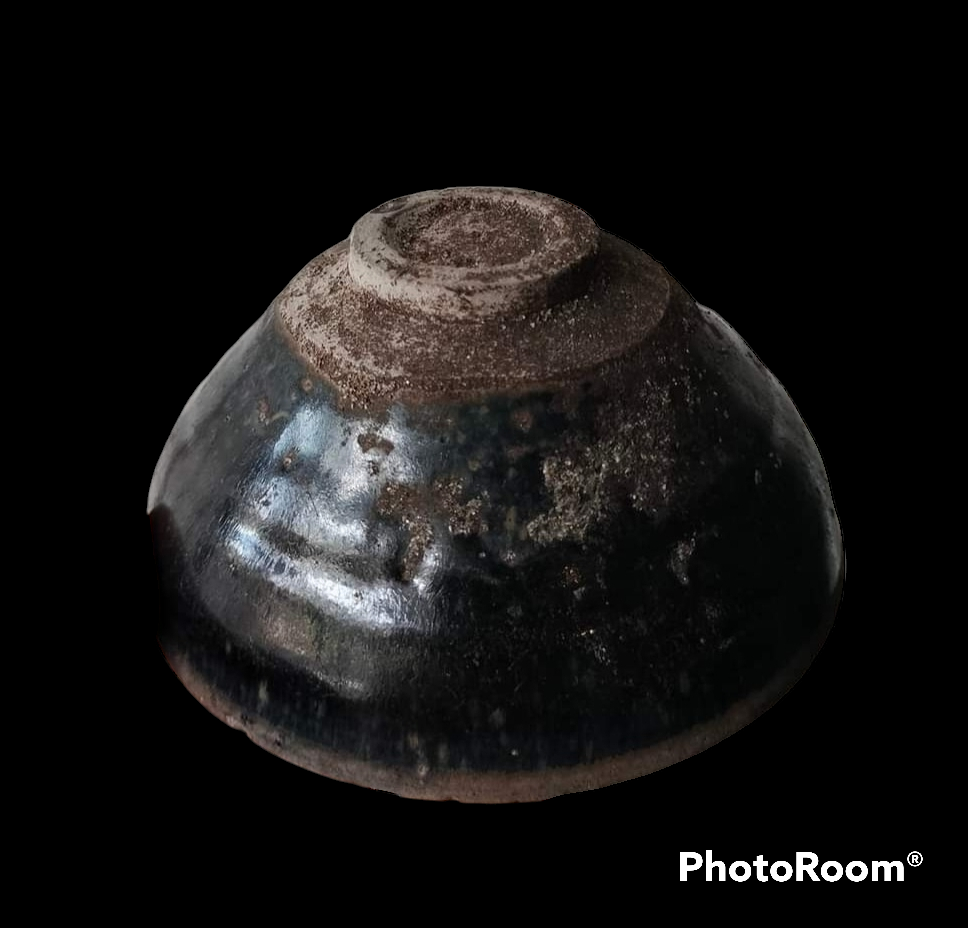 |
| Two examples from Wu Yishan Yu Lingting kilns with auspicious wording 寿山福海 | |
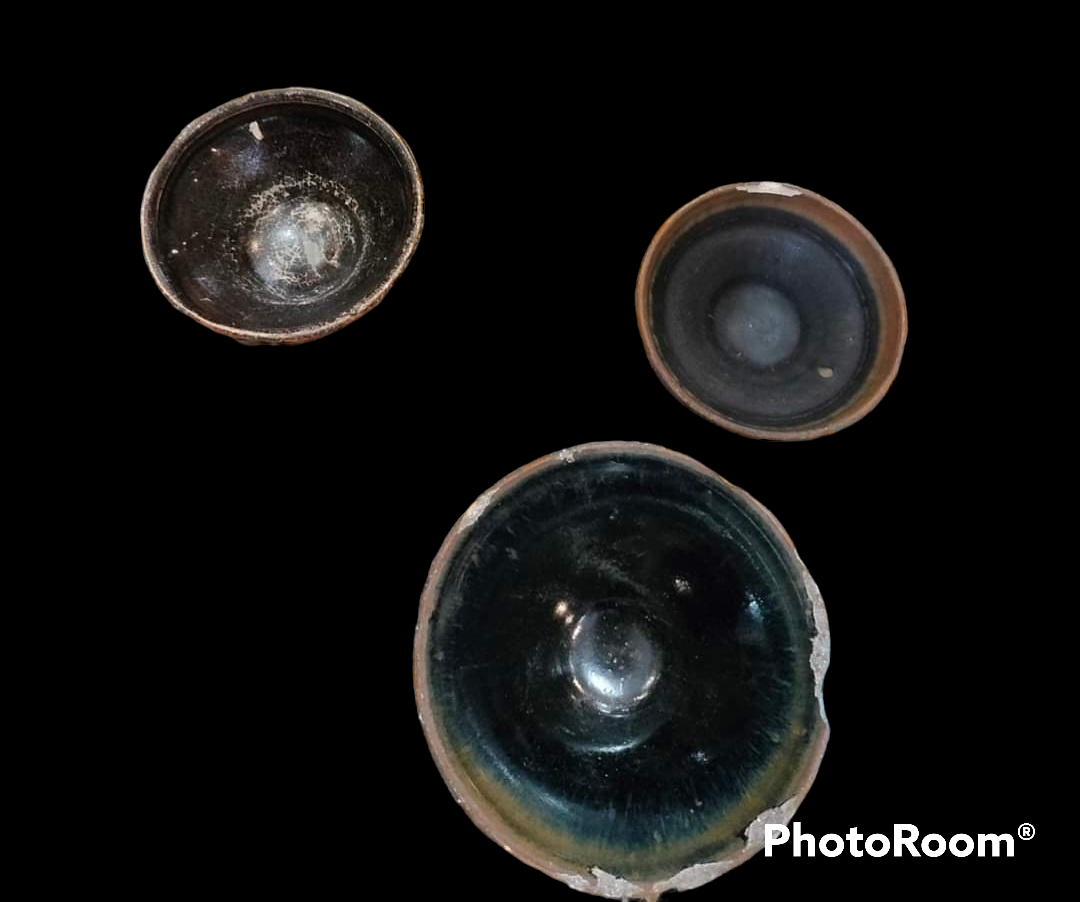 |
|
| Three examples of Non-Jian kiln Temmoku bowls found in Batang Kumpeh | |
For more information on Fujian trade ceramics, please refer to below articles:
Ceramics from Nanhai 1 shipwreck
Fujian and Longquan Trade Ceramics in Jepara Shipwreck
Written by: NK Koh (3 Apr 2023)